#this scene will go into the next installment of my character study series
Explore tagged Tumblr posts
Note
oh give me wesper and 10 please MWAH
10. ...a lazy kiss | post-canon, established relationship, a carriage ride to a ball
--------------
Jesper flicked the carriage door open, a phantom of a touch as his power did half the work.
They were getting better at channeling Jesper’s gift, even if that blessing did come in erratic flares and bursts. They were also late enough for the Radmakkers’ Ball, the midsummer sun now already brushing the horizon.
Clambering into the carriage first, Jesper held out a hand to help Wylan in.
“Your Excellency,” Jesper teased.
That was the style that came with Wylan’s title. Along with the Esteemed Wylan Van Eck and the Honorable Councilman Van Eck. If Wylan chose to marry, his partner would earn the style of the Illustrious. As it was, Jesper had no title – no matter how illustrious Wylan found him – and Jesper enjoyed teasing Wylan with his wealth of names.
“Your stupid face,” Wylan teased in return.
He shoved the hat on the carriage seat to the other side, squeezing in beside Jesper and closing the door behind him. It was a large carriage, the envy of Ketterdam, with glass windows shielded by ruby-red curtains and plush velvet seats. When it moved, the springs above its wheels made the trip feel a little smoother.
“You like this face,” Jesper shot back, unbothered.
“Just the lips,” Wylan grinned at the red rouge Jesper had put on.
The burgundy suit Jesper wore matched it, but the white mercher gloves he’d conceded to stood stark against them – and against Wylan’s skin as Jesper reached up to curl it behind Wylan’s neck. He let himself be pulled closer, until he could kiss Jesper again, lazy and lingering and longing.
“Just the lips?” Jesper challenged, voice dipped low. The carriage rattled as it turned a curve, pushing them closer still.
“It is excellent at doing – ” Wylan cut himself off as Jesper’s hand moved down to rest by Wylan’s waist, palm pressed just beneath his diaphragm where he might feel every stutter of his decorum fraying, “at doing things,” he lost his train of thought.
Jesper laughed.
His other hand reached down to take Wylan’s right hand, and he lifted it up to his lips to press a kiss over the back of it, the rouge staining Wylan’s own white gloves. All proper and taunting – propriety turned vice, the world unbuilt slipping into his open palm as Wylan felt himself fraying at his edges, undone but still unfinished.
The ghost of Jesper’s breath lingered even through the fabric, coming to rest over his knuckles: evening mist falling over the crags of sunset.
When Jesper pulled away, the red shape of his lips stayed on Wylan’s glove, a mark meant to scar the silk. Jesper could have easily Fabrikated the color away, but by the crooked glint in his eyes – a thief who’d just found the kruge – Wylan knew that Jesper would let it stay for the night, for the length of the ball.
Wylan felt his cheeks flush warm.
“Jes,” he huffed, but couldn’t stop his smile, heart finite for the length of a name.
“You want me to stop?” Jesper asked.
They had around five more minutes before they arrived at the Radmakker mansion, before they’d have to lose this to the crowds at the ball.
“Don’t you dare,” Wylan dragged Jesper back in by the lapel of his suit.
“If Your Excellency insists,” Jesper pressed a kiss beneath Wylan’s jaw, where flesh became pulse and pulse became want.
His own hands traced the dark shadow of the veins climbing up Jesper’s bare neck – a what if on the verge of becoming a what will. Uncurling, a bloom, an implosion: a promise of what he might do when the night was over, when it would just be the two of them again. When the night would fade into the morning and he could spend the sunrise lost in Jesper’s touch, in Jesper’s dreams. Half asleep, but always more than half his world.
“I’m not insisting,” he stole his own kiss from Jesper. Once a thief, always a thief, no matter how honest. “I’m only making a down payment.”
“Oh?” Jesper thumbed the kohl around the edge of Wylan’s eyes. “Payment for what services?”
Wylan grinned into another lingering kiss. “You’ll see,” he promised.
The night was still young, after all.
And so were they.
And so was the world.
#asks#sonseulsoleil#this scene will go into the next installment of my character study series#i've been wanting to write wesper + a carriage#and this fell into my head as soon as i read wesper + a lazy kiss akskdsksdk#as always thank you for the ask 💙#six of crows#wesper#wesper fic#wylan van eck#jesper fahey#my brain is currently stuck on jesper's lipstick on wylan's gloves#please ignore me going slowly insane akdskdsk
31 notes
·
View notes
Text
TLOU Queer Fic Recs
Happy Pride! Admin Zoo here, with some of my favourite queer fics, please share your own recs, I'm looking for more to read!
🏳️🌈 🩷💜💙 🖤🩶🤍💜 🏳️⚧️
Late October, 2022 (Or The Last Time Joel Saw Bill and Frank alive), 5k, T, by Springandastorm, @spr1ngandastorm
Joel and Tess and Bill and Frank hang out and find community in each other. This devastated me in the best way, I have not stopped thinking about it since I read it. Beautiful and bittersweet and hopeful all in one.
trace my fingers across your frozen veneer, 2k, E, by fromthewhales @deervsheadlights
Bi Joel gets pegged by Tess, as he deserves. Like all the best explicit fics, this is a character study and really gets into their relationship. 10/10 no notes.
some sort of private conversation, 2k, M, by fromthewhales. @deervsheadlights
Bi Joel tries to have a hookup on the road but Ellie cannot mind her own business. So in character and hilarious, RIP Joel hope the next time works out better for you.
Eternal Love Bullshit, 3k, T, by @sedumlineare
STOP THE PRESS, ASEXUAL JOEL IS ON THE SCENE. Lovely fic where he bumps into an old friend in Jackson (who's a lesbian!), remembers past community, and it's just so sweet. Neare aced this one.
The Trans Joel Universe, series, 27K, G/T, by @sedumlineare
NEARE THIS GIVES ME LIFE. This series has everything: gender euphoria and mentorship, trans Joel through the years, and nonbinary Ellie! Stunning, lovely, special mention to Took a While But I Don't Mind (How Do I Look Now?) which is full of joy and is named after one of my favourite songs
I know, I know the sirens sound/Just before the walls come down, 2k, M, by @donttouchtheneednoggle
Trans Bill AND Frank!!! Oh. My. Sweet. Jesus. This fic left me in a puddle on the floor. Beautiful, stunning, please read it, it's gorgeous.
making yourself up as you go along, 6k, M, by awenswords, @awens-words
Trans Joel!! Really brilliant fic, I especially love the detail given to his smuggling operation and how that doubles up as a way to get hormones. Him trying to come out to Ellie is a particular highlight.
Different Shades, 773, G, by mandocule, @theydjarin
Ellie asks about Bill and Frank, and she and Joel come out. Really sweet little fic with lesbian Ellie and bi Joel doing their best to be #Vulnerable. One of the first queer TLOU fics I read last year!
mellow is the man who knows what he's been missing, 15k, G, by flannelfeelings, @boopernatural
The happy AU where Joel gets to meet JJ and Ellie, Dina, and Jesse have a polyamorous relationship! We love love, we love community.
Watch Me Bleed, series, 24k, M/E, by Fiachra, @consultingzoologist
Apologies for the self-promo, but writing this changed my life due to the people I met as a result. TLOU but Joel is trans, with an Ellie-centric sequel exploring her queer feelings, and a t4t TessJoel installment (that gets the E rating)
26 notes
·
View notes
Note
Dearest Sab,
As someone who currently studies English literature, I am absolutely, wholeheartedly and utterly obsessed with 'The Ethics of Relationships'!
It is such a good series! It's probably one of the best, if not the best, series that I've ever read on Tumblr.
I actually really enjoyed this chapter. I think it really responded well to the previous chapters, and it worked really well as a set-up for the final instalment.
As I am writing now and reflecting upon your work, which I read for the first time yesterday, the first scenes that spring to mind are Suguru's scene of self-reflection and Reader's dream of having an engagement party.
Personally, I am a huge fan of how you write Suguru in general, and I adore and cherish your Professor Geto, and I just really appreciated how you tackled Suguru's mental deliberation. I thought it was relatable, true to Suguru's character, and just really interesting to read.
As for the engagement party scene, I think I was so surprised to read it that when I read it, I just let out a small little gasp, and a little small 'oh no', and it was just so sad because it just hinted at the potential of what could have been. (I am so happy that the ending is going to be a happy one for them!) I think the dream motif worked really well here, and I love how it echoes and responds to previous parts while being harmonious, cool and insightful.
I adore your writing style. I really do. I love that your writing strikes the balance of being clean and slick, and descriptive and evocative. I love that your writing reads as though it's been edited, well thought-through, and I love how it's paced. I think you're really, really talented.
This series is a true joy to read, and I always get really excited whenever I see updates regarding this series! I'm really excited to read chapter six!
hi bb 🥹 — this was very kind especially from a fellow lit major!! I was a lit major in college too!! that is very sweet 💕😭 feels like very high praise I feel undeserving of but I appreciate it so so much 🫣🫶😭
I’m so glad you enjoyed the part — it really was set up for the next part and I really feel like parts 2 and 5 very much served as set up for the next part that they followed but were very necessary nonetheless
It truly makes me so warm when someone says I write suguru well because in an AU, I still want the essence of the character to be there and for you to say that it is, means so so much.
yes the engagement definitely is reader’s subconscious thinking about what was supposed to be next for them in the future and the loss of that hits her all over again. I had to bring back the dreams and the dreaded “ring”-ing again hahah
you’re very very kind — honestly I don’t edit much, which sounds like a brag but it really isn’t. I wish my brain was fit for it or that I had time to do it. I truly am just making this up as I go along with some loose ideas that turn into something. so it makes me all happy when someone says they enjoy my work as it is because it truly is in its rawest forms in someway
thank you so much for your kind words and for being here and continuing to read!! I’m doing my best to make sure the last part lives up to expectations 🥹💕😭 love you babe 🫶🫣🥹😭
9 notes
·
View notes
Note
Please please please tell us if/when the next update might be to (Un)Deserved Kindness? I'm obsessed and need to know more!
Will you have a breakaway scene with Lambert and Geralt? Or will they come into town for the festival so it all comes to ahead? Will Jaskier and Aiden get an invite to Kaer Morhen? Will Matilda make a saucy appearance? (I assume she's saucy after the conversation with Hughes!) Will the bonfire rage?
The public (me) want to know!
Mucho Gracias, Much Love etc.
Thanks for your enthusiasm! Honest at this point I'm always a little shocked that people are still finding and reading (Un)Deserved Kindness when it's been *checks notes* ...almost an entire calendar year since I last updated. Whoops.
But!! I am working on the next chapter right now. I don't know when it will be done since Aiden and Jaskier haven't wanted to talk to me in a while, but I am working on it. Slowly. I'm also working on a character study type thing for this AU's Treyse and his whole life because I accidentally made him interesting and sympathetic in my mind when I was trying to nail down some of the lore for how the Cat school has evolved over the years (lore which will tragically never see the light of day probably, but whatever) and now he plagues my thoughts like Cedric and Axel (but less, because I also accidentally made those two my most favorite characters and have pages of snippets and ideas about their relationship).
As of right now I don't have any plans for either Geralt or Lambert to show up on screen until the installment of the series that takes place in Kaer Morhen, if we ever even get there. (spoilers for that, so skip the rest of this paragraph if you don't want to know:) And if we ever do get there in the future, it's going to be that Geralt is bring Jaskier there to keep him safe and (most importantly) away from all these Cats he's apparently made friends with under Geralt's nose (since there are NEVER Cats at Kaer Morhen and he's pretty sure Vesemir would throw one off the mountain if they even tried). However, I will tell you that in my notes that fic is currently titled Aiden part 2: Electric Boogaloo Kaer Morhen Edition. So you might be able to guess how that plan goes.
The bonfire will rage though!! But that's after I let Aiden bond with Ara some more and everyone makes their traditional flower crowns for the festival.
As a little gift for asking about the new chapter though, have a little snippet of what I currently have written:
“You’re dangerous,” Aiden says, instead of a hundred far more damning things that sit on the tip of his tongue. Things that humans wouldn’t understand. Especially not too nice, too kind ones like Jaskier.
Jaskier gasps and looks at Aiden with big, deliberately innocent looking eyes. “You wound me, sir. I’m naught but a simple bard. I’m as harmless as a fly.”
Aiden snorts. “As harmless as a siren, more like,” he says.
5 notes
·
View notes
Text
Exclusive Interview: Spencer Lord Discusses the Mystery Around His Character in Heartland, Teases Family Law Season 3, and More
Spencer Lord is one of the industry’s most exciting new voices. After leaving a career in the corporate world behind, Spencer dove headfirst into acting and has gone on to land coveted roles in projects, including Riverdale, The Good Doctor, and Family Law. It’s his vulnerability, subtlety, and emotional depth that have captured the hearts of audiences around the world.
Currently, Spencer can be seen starring in the latest installment of Heartland. In Season 17, Amy (Amber Marshall) and the rest of the Heartland family know better than most that while dreams can sometimes come true, more often life takes us in unexpected directions. Spencer shines as Nathan Pryce Jr., a mysterious character who rolls back into town and holds a special place in Amy’s heart.
Pop Culturalist was fortunate enough to speak with Spencer about Heartland, bringing the many facets of Nathan to life, the upcoming season of Family Law, and more.
PC: You graduated with a mechanical engineering degree and worked as a project manager. What ultimately led to the transition to your work as an actor? How challenging was that pivot? Spencer: I went to university because it was the next “logical step” and pursued a technical degree because I was always praised for my aptitude in science. When I entered the workforce, I think I started to be more honest with myself. I was unhappy, sometimes severely depressed, and eventually realized I needed a huge change if I was going to feel whole. That’s what I know now. At the time, it was just, “I hate this job, I want to love what I do.” So, I started going to scene study classes, got some work at a restaurant, and quit my desk job.
In some moments, I thought I might be an idiot, giving up a steady gig for something as fickle as a career in acting, but I never once second-guessed myself. And I immediately fell in love with it. I love venturing out and trying new things, not knowing what’s next—like wading through water in the dark. And I get bored easily, so the irregularity of this industry ironically soothes some of my deepest anxieties. In a lot of ways, the pivot from desk job to struggling actor was the easiest decision I’ve ever made.
PC: Who or what has had the biggest influence on your career? Spencer: I could bore the hell out of anyone reading this and write a ten-page essay about the people, places, and things that have influenced me along the way. But I think I can boil it down simply to community.
My sense of community has grown and flowered into one of the most beautiful aspects of my life. I’m so, so lucky to find myself among a group of friends who care deeply for one another and inspire each other in myriad ways.
PC: You’ve had a lot of success already in your young career. When you look back, is there a particular moment that stands out? Spencer: The first class, signing with the first agent, being dumped by the first agent, signing with the agent I should have been with all along, the first booking, being on set for the first time (and every time), working with some truly lovely people along the way… I could go on, but it’s all been a sort of fantastic magical mystery ride, and I’m always just doing my best to appreciate every moment of it all.
Most recently, I got to work in the foothills of the Rockies, riding horses around on vast swathes of ranch land in Alberta. That was pretty damn cool.
PC: You recently joined the cast of Heartland. What can fans expect from Nathan? What was it about this particular character and series that resonated with you? Spencer: Mystery is starting to become a theme here because that’s one word that I would use to describe Nathan. But the mystery is really born from a damaged sense of belonging that he feels coming back to a community he was forced to leave after his parents separated.
I was raised by my mother as well after my parents separated and my dad moved away. As a boy, I idolized my father. Later on, as a man, I realized that I hadn’t really discovered who I was because I had modeled myself after someone who simply wasn’t me. I think Nathan is experiencing something similar. Having to step into his father’s shoes with regard to the ranching business while retaining his unique personality and autonomy is his challenge, all while bearing his father’s name.
Shirking the expectations of our parents ain’t always easy, and Nathan feels that.
PC: Your character finds himself returning to a town that he left several years prior, and it isn’t well-received by all, a situation you’re bringing much depth and nuance to. As an actor, how did you create the space for yourself to tackle the journey that Nathan finds himself on and shedding those walls? Spencer: What a compliment. Thank you. I must say, I found the writing did most of the work over the course of the season. Mark Haroun, the showrunner, really wanted Nathan to have a real rawness to him. He did a beautiful job slowly revealing Nathan’s character in a way that felt natural. All I had to do was, as you say, create space and say the words.
That’s always our job as actors. We’re blessed with words on a page which, if we’re open to receiving them, inspire us to action. I’m always trying to be more open and create space for spontaneity, in my work and in my life. As for how I do that, I’m not sure. Self-discovery for sure. Curiosity. A lil’ dash of yearning for adventure. In the end, it’s all a big… you guessed it. Mystery.
PC: This series is built on the relationships among the characters. Which was your favorite to explore this season and why? Spencer: This might be the obvious answer, but Amy and Nathan’s interplay pulled me right in. I appreciated the chance to explore a friendship that grows through adversity, has highs and lows, and isn’t just a simple “I like you, you like me, let’s be best buds.”
Nathan is emotionally stunted by a tumultuous upbringing, reintegrating into a community he was forced to leave behind and taking control of his dad’s ranch. Amy’s family runs a competing ranch, and her father and grandfather don’t care for Nathan’s business tactics, but she shows Nathan kindness in spite of her family’s jaded opinions of him. To me, these are very interesting circumstances.
These are the nuances and complexities that bring the characters closer to life, and that is my jam.
PC: Season 3 of Family Law will be released on the CW on January 17, 2024. Congratulations, by the way! What are you most excited for fans to see with regard to Aiden? Spencer: Thank you! I think the fans will get to see a softer side of Aiden, and a little more of an idea about why he’s so attracted to Abby.
PC: Playing Aiden is the longest you’ve lived with a character. Has anything about the experience surprised you? What has been the biggest takeaway thus far? Spencer: I take things as they come, and so far with Aiden, that’s been a pretty great experience. I think the biggest takeaway so far has been to allow that to happen, taking things as they come. The world of TV can change so fast, and when you sometimes have very little time to digest the material, the most you can hope for is a story that is exciting and dynamic, and that flows through you with ease. Susin Nielsen, our showrunner, and her team of writers, thread that needle so wonderfully. I’m very grateful to work with them to bring Aiden to life.
To keep up with Spencer, follow him on Instagram.
Source
4 notes
·
View notes
Note
For the fanfic writer ask game, #13 or 22!
fanfic asks — send me some!!
Why Not Both
#13: How much planning do you do before writing?
absolutely zero lmao i’ll usually have a few beats i want to hit but if i have an idea i want to write i’ll generally just sit down and write as much as i can before the hyperfixation vanishes lmao
if i have a more intricate scene to write (for example, the fuckery where they faked stede’s death in baltwy 4, or the next chapter of my botw fic which will be a large-scale battle vs ganon) i’ll do a basic outline — essentially so i know where every character is and the battle plan, basically, and will write after that. that’s really the only time i’ll do a proper outline
#22: Do you know how a fic will end when you start writing?
uhhh it depends. most of the time i have a vague idea of the story arc (like getting together one shots naturally end with them…getting together lmao) but i don’t think i ever actually even get that until i’ve written at least a couple hundred words. i focus a lot more on character emotion and thought during my idea stage — i think about how a character is feeling during a certain scene (maybe in canon, maybe not) and focus on that in the early writing process, then the story falls in around that.
for series like baltwy, i usually know how each installment will end when i start it (which is why i haven’t gotten far on the next installment — i’m not exactly sure where to end it or if there will be one after ) but i don’t really have an idea of where the series as a whole will go. i come up with that in the shower or while driving usually and then forget when i can finally write it down lmao
the botw fic is kind of unique in that regard bc i’ve known from the beginning where and how it would end. at least a few of my readers do too, i think, based on some of the comments i’ve gotten, but i don’t think that’s a bad thing!! it’s bc the ending i have in mind is more of a trope than a unique ending so i don’t mind people predicting it lol
i’ve started on a sequel to my botw fic set during the events of tears of the kingdom bc i got all the memories and just HAVE to write a study on how link feels about them. no spoilers in this post, but i don’t actually know if i just want that to be a character study or if i want to do an au of totk like i did with botw — i’ll have to see how totk ends, first. but in the meantime i can start drafting before then, and i will do so happily! it takes me long enough to write that i’m not too worried about it tbh i’ll be done with totk well before it’s time to decide where this fic is gonna end up
#this was so long and written mostly tipsy#like i started it then got tipsy then finished it#but please send me more!! i love analyzing my own writing#ask game
1 note
·
View note
Text
a court of golden shadows: elain archeron and azriel endgame
so this is like an 11 page paper i wrote on why i think Elain Archeron and Azriel from Sarah J. Maas’s A Court of Thorns and Roses are endgame. i made a joke on twitter that i’d write a proper MLA format styled paper on them because i love them so much and a bunch of my moots convinced me to do it so here i am.
this is for the Elriel lovers like myself. if you read it, which you don’t have to, please refrain from commenting anything negative. everyone is entitled to their own opinions, and this whole essay is just my opinion on it. so if you read, i hope you enjoy!!
keep in mind, it’s LONG.
A Court of Golden Shadows: Elain Archeron and Azriel Endgame
Sarah J. Maas’s fantasy series A Court of Thorns and Roses displays epic, world-shattering love stories among the thrilling action and fantastical elements present throughout the novels, as seen in the romance between Feyre Archeron and Rhysand and, most recently, Nesta Archeron and Cassian. Two sisters have already accepted and embraced the (so-called) rare mating bond with their respective counterparts, yet the question remains on what is to happen with the middle sister, Elain Archeron, who apparently has a mating bond of her own with Lucien Vanserra, but has not, for two books and a novella, made any indication of accepting it. However, Elain, in her quiet, gentle way, has shown to be more attentive towards the Night Court’s resident Shadowsinger and Spymaster, Azriel. Who, in turn, has notably started to move on from a five-century long love harbored for another female and gravitating towards the last remaining Archeron sister.
It can be said that the concept of the three Archeron sisters all ending up with the three Illyrian males is a cliché, but if done right, they can capture the reader in their grasp—one that no one would want to get out of. Taking a look at the novels, particularly starting from the second book, A Court of Mist and Fury, since this is where Azriel’s character is introduced, it is difficult to ignore the fact that Maas has been laying the groundwork for Elain and Azriel—or Elriel, as I will refer to them throughout this paper—to be a couple from the moment they met, whether these hints are subtle or obvious. In chapter 24 of ACOMAF where Feyre, the Illyrian faes, and her sisters have dinner together, we see tentative interactions between Elain and Azriel, despite the two of them having just met and Elain, as a mortal who grew up with stories of the terrors of faeries, seems to look towards the spymaster more. The first glimpse of their interaction, no matter how small, is shown on pages 253-254 when “a faint smile bloomed upon Azriel’s mouth as he noticed Elain’s fingers white-knuckled on that fork”. Though this moment can be overlooked, it is only the first of many oncoming moments of Azriel noticing Elain and her actions, a subtle hint of the spymaster’s attention towards Elain. The focus of attention is returned when Elain then turns to Azriel a few pages later, wanting to know more about their ability to fly, even so far as going to say “That’s very beautiful” when Azriel describes Illyrians as being “born hearing the song of the wind” (256-257). Additionally, there are two moments in this particular chapter where Elain, in some semblance, looks towards Azriel as a way of relaxing herself. The first is noted when Azriel’s attention is said to be on Elain, and he offers her a “polite, bland smile”, and Feyre notices how Elain’s “shoulders loosened a bit” in response to it (256). Rather than looking towards Feyre for indicators during an unexpected dinner with faeries, Elain seems to be more drawn to looking at Azriel, which is shown once again in the following passage: “Rhys chuckled, Cassian’s wrath slipping enough that he grinned, and Elain, noticing Azriel’s ease as proof that things weren’t indeed about to go badly, offered one of her own as well” (258). Elain tends to check everyone’s reactions to the circumstances to determine the levels of tension in the atmosphere, but she truly seems to be put at ease when she notices Azriel’s own relaxed state, once again indicating the attention she pays to him from the moment they met.
The first three books in Maas’s series are told through Feyre’s perspective, so it can be said that our perception of and desire for Elain and Azriel getting together is skewed because of the point of view we are given. I, however, consider this to be a moot point because Feyre’s character is the type to notice everything around her. She comes to grow close to both Azriel and Cassian, and with Elain being her sister, the reader can depend on Feyre as being as much of a reliable narrator to tell us exactly what she sees and how she sees it. With this in mind, some of the examples given will be from Feyre’s own musings, but it is important to note that she, more than once, groups Elain and Azriel together. This is shown when, in chapter 49, Feyre is distracting Rhysand as she tries to take care of his wounds and muses about her sisters visiting Velaris. There, Feyre mentions to Rhysand, “I think Elain—Elain would like it, too. Though she’d probably cling to Azriel, just to have some peace and quiet”, before proceeding to think to herself—and the reader, “I smiled at the thought—at how handsome they would be together” (487). Of course, this observation is followed by the acknowledgement of Azriel quietly loving Mor, as he has for centuries, yet what we don’t know, during this, that this wouldn’t remain an issue for long.
Moving on to focus on the third installment of the series, A Court of Wings and Ruin, there is a solemnity surrounding Elain, who, at the end of the second novel, was forcefully turned into fae against her will. After the transformation, Elain has become a shell of who she used to be, trapped in a state of deep mourning of the humanity she lost, of the love of her fiancé she inevitably lost, too. She doesn’t eat nor does she speak to anyone, an empty yet no less beautiful version of herself as her Cauldron given powers, unbeknownst to everyone else, manifest. But even in her state, in her indifference towards her mate Lucien and yearning for her human fiancé Graysen, Elain managed to acknowledge Azriel. He is gentle with her, much like everyone else, as he carries her into the townhouse, smiles, inquires if she’d like for him to show her the garden. And although he stands tall, intimidating in his fighting leathers and large wings, Elain does not recoil from him in fear or shyness. Instead, she takes the arm he offers her and, although it is unsure if she is looking at his Siphon or his scarred hands, she still utters “Beautiful” in response to him (254). Even when life has unexpectedly turned bleak for Elain, even when the world loses its color in the aftermath of the trauma she suffered, in that moment, there was a glimpse of who she used to be as she found beauty in nothing but Azriel.
This same chapter is followed by an insightful conversation between Feyre and Rhysand, triggered by Feyre watching her sister and Azriel. Feyre notes how at odds Azriel looks sitting in the garden next to Elain in his armor, yet she still questions, “Why not make them mates?” (257). This spurs a significant conversation between the High Lord and High Lady, where readers are given some more history on mating bonds and introduced to the prevailing concept of rejected bonds. Rhys provides examples of ill-chosen bonds, such as his parents, who were mates yet their relationship was not ideal in the least. Here, we are told that sometimes fate, the Mother, whatever chooses two mates can be wrong in its pairings, and it is rare for the bond to bring together “true, paired souls” (258) like Feyre and Rhysand. It has been established that the female can reject the bond, and while the male may feel the tug of it, it’s their burden to push through it. Maas spends an entire page or so talking about the concept of ill-chosen or rejected bonds, so it would be naive to look over these details if they weren’t placed in the storyline for a reason. Elain and Lucien may be mates, and Azriel (at least currently within the book) may be in love with Mor, but the idea of free will is not something to be so easily dismissed. Elain already had the choice of her humanity, her mortality, ripped away from her—it’s doubtful she would let this pattern continue.
In chapter 24 of A Court of Wings and Ruin, when Elain is having her first conversation with Lucien, she states, “No one ever looked—not really” (252), and although here she is referencing Graysen, this statement comes around a few chapters later. In chapter 27, Elain walks in on a conversation amongst the Inner Circle, and Azriel was the first to step forward as he noticed something amiss. His observations and questions when he says to her, “[But] you heard something else” and “What did you see” indicate that he, unlike Feyre and Nesta, believes that Elain’s riddled musings have a deeper meaning and need to be heard. The scene ends with Feyre looking to Azriel, noticing that his “hazel eyes churned as he studied my sister, her too-thin body. And without a word, he winnowed away” (287). Azriel didn’t brush off what Elain said, because while her sisters thought Elain had gone mad, Azriel listened to her—he looked. He looked past her “too-thin body” and read between the lines of what she said, and knew there was more than what meets the eye. He looked, which was exactly what Elain had wanted.
This is repeated in chapter 32, when Elain brings up another queen and no one is quite sure what she’s talking about, except for Azriel, who steps forward and gently prods Elain to elaborate. Even Lucien watches Elain warily, questioning if they need to help her, yet Azriel is firm in his assessment that Elain doesn’t need help, that they need to be the ones who need to listen, before ultimately determining that she does, in fact, have powers and is established to be a seer. So while Lucien “stared and stared at [Elain], as if he’d never seen her before”, it was Azriel who actually looked at her and saw what no one else was seeing, whose acknowledgment of her gift and the attention he brought to it from everyone else “freed her from whatever murky realm she’d been in” (336).
The idea of Azriel truly looking at Elain transitions into him looking for her, too. But first, another example of the former is seen in chapter 63, when Feyre, Nesta, and Amren hear the call of the cauldron in the middle of the night. They wonder about it, question why they three heard it because they were Made, not noticing that another who was Made was missing from their group. That is, until, Azriel asks, “What about Elain?” (560), and he is moving alongside the sisters to inspect Elain’s tent, only to find her missing. Azriel notices Elain—whether she is present or not. And so the concept of Azriel looking for Elain is introduced when they are discussing Elain’s rescue from Hybern in the following scene:
“From the shadows near the entrance to the tent, Azriel said, as if in answer to some unspoken debate, “I’m getting her back.”
Nesta slid her gaze to the shadowsinger. Azriel’s hazel eyes glowed golden in the shadows.
Nesta said, “Then you will die.”
Azriel only repeated, rage glazing that stare, “I’m getting her back.”” (563).
There was no hesitation on Azriel’s part in being the one to get Elain back, but there was obvious rage, as noted, in his gaze at the very idea of Elain having been kidnapped. A silent, lethal aura surrounds the shadowsinger that can be so clearly picked out within that scene, showcasing Azriel’s unwavering determination in returning Elain, even if it meant slipping into the heart of enemy camps—especially if it meant that. And throughout the dangers and urgency of this particular mission, when they do reach Elain, Azriel takes a moment to be tender towards her as he “gently removed the gag from her mouth” (573) and asks if she’s hurt. Elain, in turn, is shown to be “devouring the sight of him, as if not quite believing it” before she says “You came for me” (573). Elain looks at Azriel in wonder and disbelief, and this reaction hints towards how she feels drawn towards him. In their very first meeting during the dinner in the Archeron house, Elain looks to Azriel for reassurance, for judgement of the situation, and in the event of her rescue, she finds that same kind of comfort on a far more intense level. Because here, he truly is her rescuer, appearing in front of her to save her from the dangerous hands of their enemies and bring her to safety. And Azriel, in this sense, is devoted to her, holding up his fierce promising of getting her back. Even when he was injured, Azriel held onto Elain, refusing to let her go even while getting shot at and chased, and when they landed in their own camps, the first thing he claimed was for someone to get the chains off of her, rather than even mentioning his own injuries. This just reminds us of ACOMAF when Elain was being dragged to the cauldron and Azriel wasn’t even conscious to witness it—there is no doubt that if he was awake—and uninjured—he would’ve done all he could to save her. Maas robbed us of that type of scene.
Furthermore, evolving from the concept of Azriel rescuing Elain, we get another significant scene between the two of them that displays the kind of trust these two characters smoothly and effortlessly developed. On top of Elain accepting Azriel’s offers of taking her to the garden, a silent indicator that his company was one she enjoyed, Azriel shows a great act of trust to Elain as well when, in chapter 69, he offered her the use of his beloved knife, Truth-Teller. This blade is Azriel’s most prized possession, and to offer it to Elain to bring her the same kind of comfort and safety that we have seen she finds in Azriel himself portrays the trust he has in her—and his desire to protect her. This is emphasized when Rhys tells Feyre, “Never. . . I have never once seen Azriel let another person touch that knife” (610). Even Cassian was stunned that Azriel would let someone else use Truth-Teller, which is significant to note given that he has not let even Cassian nor Rhys—his brothers he has known for centuries—even touch it. And Elain, who had refused to take the knife Cassian had offered her, ends up accepting Truth-Teller—because it’s Azriel’s, and because through the short time she’s known him, he is someone she has poured her trust into and understands he wouldn’t lead her astray. And he didn’t, for it was Elain who “stepped out of a shadow” (653) and used that very same blade to kill the King of Hybern. A temporary gift, given from Azriel, that she used to put an end to one of the greatest threats to both the human and faerie realms.
In the post-war novella A Court of Frost and Starlight, Maas furthers the Elriel endgame agenda by continuing both subtle and blatant hints in their favor—and not just through actual interactions between the two. The concept of Azriel avoiding Lucien because of his mating bond with Elain is important to remember, for it will come back around later. But in this novella, we see it when Rhysand asks Azriel if he keeps an eye on Lucien, given that he is the spymaster. Azriel, in turn, informs him that he does not track his movements, because “He is Elain’s mate” and “It would be an invasion of her privacy to track him”, which Rhysand, since this is shown from his perspective, notes is because Azriel does not want to be aware of if and when Lucien seeks out Elain, and what they do together—if they do anything at all, given Elain’s tendencies to utterly ignore Lucien (70). Rhysand questions Azriel’s motives on this, but doesn’t get a response, but there is an understanding of Azriel’s intentions behind it. Not only does he want to remain ignorant of the forced bond between Elain and Lucien, but a big motivator for him is also Elain’s privacy, which he doesn’t want to intrude on—ironic, given that he is a spy, and it’s his job to know of others’ movements and thoughts.
Another example of Azriel very subtly showing his blossoming feelings towards Elain is when he unforgivingly states that if Lucien were to kill Elain’s ex-fiancé, then “good riddance” (71). He was well aware of how Graysen treated Elain after finding out she was fae, is the one who sits with her in the gardens because he is a comforting presence for her in the face of mourning, so he understands her. This idea is repeated in Azriel’s bonus chapter in A Court of Silver Flames, when Rhysand catches Azriel almost about to kiss Elain—that is definitely to be unpacked later—and warns him that Lucien has the right to invoke a Blood Duel to defend the mating bond, and Azriel does not hesitate, is confident, when he retorts that he would easily defeat Lucien, would have no problem in pulling Elain out of a bond she doesn’t even want.
The novella also includes some more obvious, sweet moments between Elain and Azriel, ones that show Elain’s own growing interest and feelings towards Azriel. Like in chapter 12, when Feyre notes that when Azriel enters the room, she feels Elain freeze at the sight of him, and then Elain proceeds to be almost in a trance when Azriel, after she greets him, moves towards her and takes the heavy dish of potatoes from her hands and says he’ll take care of it for her (105). This scene then continues when Elain hurries off to make herself more presentable, and rather than letting others dive into the food, Azriel stops Cassian from putting food on his plate and all but commands him to “wait until everyone is seated before eating” (106). Rhysand informs Feyre that this sudden reaction from Azriel stemmed from the treatment his mother received as a near servant, but it can also be tied to how Azriel keeps aware of Elain and the recurring theme of looking after her in any way. He notices her, just as she notices him, a subtle way of this being present in Elain’s solstice gift to Azriel. She doesn’t get a gift for Lucien, her mate, but does get one for Azriel, one that makes him laugh in a way that, Feyre notes, she’s never heard before. A genuine sort of joy breaking the cold, indifferent mask of the shadowsinger as he accepts and cherishes the gift Elain gave him—the extent of which we see in his bonus chapter, where it is revealed that he looks at the small vial every night before going to sleep, a not-so-subtle showing that Elain is the last thought on his mind before he descends into slumber.
This notion of the two of them looking after one another in their own ways is again repeated in A Court of Silver Flames in the following passage on page 221:
Azriel smirked. “You and Nesta are wanted down there.”
“Because of the shit with Elain?”
Azriel stilled. “What happened to Elain?”
Cassian waved a hand. “A fight with Nesta. Don’t bring it up,” he warned when Azriel’s eyes darkened.
Throughout the friendship they have formed, Azriel becomes a kind of protector of Elain’s, deriving from her being a part of their Inner Circle as well as the notion of Azriel’s own personal feelings for her. He is so obviously shown as going on the defense at the news of Elain getting into any kind of fight, of Elain potentially being hurt. It’s repeated on page 233 when Elain and Nesta are arguing, and after Nesta utters a nasty comment that lands on Elain like a blow, there is an acknowledgement of the “shadows gathered in the corners of the room, like snakes preparing to strike”. The shadows, of course, are Azriel’s, ready to jump between the sisters and defend Elain from Nesta’s verbal attack, to once again be her protector.
Of course, we can’t forget that Elain has a mate in Lucien, and how it seems to offer the enticing forbidden love trope between her and Azriel. We see a hint of it in A Court of Wings and Ruin, when in chapter 24, Lucien can scent where Elain had gone off to and who she’d gone with, in this case having it be Azriel, and he’d nearly snarled until Rhysand assured him that Azriel wasn’t the “ravishing type” (254)—although I think we can all agree that he most likely is, but wouldn’t even dream of it in terms of the state Elain was in at the time. Maybe it is the mating bond or maybe it’s both Elain and Azriel’s quiet personalities—or perhaps a combination of the two—but the shyness that has them looking at each other and then looking away continues. On page 467 of A Court of Silver Flames, Cassian notes how Elain nods shyly towards Azriel, who in turn offers her a small smile that she quickly looked away from, prompting Cassian to be puzzled as he wondered, “Lucien was certainly not here to snarl at any male who looked at her for too long”. Elain doesn’t look away from Azriel because of the bond, but perhaps because she is well aware of her feelings for him and, for the moment, is too shy for them to be known, especially by Azriel.
The mating bond between Elain and Lucien does serve as a barrier between her and Azriel, though. This is particularly present during the Winter Solstice, when a layer of Azriel’s character specifically has been peeled back to show his feelings for Elain. Like on page 597, when Elain is laughing at Nesta, the older Archeron sister notes that “Azriel stood in the doorway, monitoring them. As if he’d heard Elain’s sharp laugh and wondered what had caused it”. And if that wasn’t enough, Nesta watches as Azriel’s “gaze shifted to Elain, and though it was utterly neutral, something charged went through it. Between them. Elain’s breath caught slightly, and she gave him a shallow nod of greeting”. This is perhaps the most prominent moment of both of their feelings being reciprocated by the other, because Nesta notices the way they look at one another, as if they both see past the person they put in front of everyone else and truly see the other. And even Nesta understands that there is something deeper between the two, even if they themselves haven’t figured it out yet, when she approaches Azriel where he stands by the doorway and, when asked why he doesn’t sit, responds with a “pretty lie” of his shadows not liking the fire. But Nesta looks to where Elain is the one sitting by the fire, and why Azriel chooses to stand as far as he can, because it is “his secret to tell. Never hers” (600). Just like that, Nesta is aware of Azriel’s feelings for her sister and, perhaps, her subtle way of comforting him was her showing her approval.
We get a deeper insight of this scene in Azriel’s bonus chapter—an entire chapter that allows readers to see exactly how he feels about Elain, and that she returns those feelings, too. It is confirmed that Azriel stands by the doorway, away from Elain, because Lucien is in the same room, and the sight and scent of their mating bond is one that Azriel cannot stand. Because the female he feels deeply for, according to fate, “belongs” to another male and he needs to put distance between himself and the two of them when they’re in the same room. Yet, the mating bond doesn’t prevent Azriel from thinking of Elain, from fantasizing about her every night. He goes from being shown as relieved when Rhys tells him he doesn’t have to buy the sisters presents for the Winter Solstice in A Court of Frost and Starlight, to actively buying her a beautiful flower necklace that she would no doubt love. Their secret exchanging of gifts leads to an epic, steamy, full-of-yearning almost first kiss that shows so clearly that Azriel’s feelings for Elain aren’t unrequited, that she, just like him, is desperate to give into what’s been brewing between them for so long. Yet it’s all cut short when Rhys interrupts Azriel, reminding him of a mating bond that Azriel’s painfully aware of—and confidently willing to pull Elain away from if Lucien decides to invoke the Blood Duel. Azriel’s questioning of the cauldron, wondering why it picked three sisters and had two of them end up with his brothers while the last remaining one was mated to another, is not him declaring that he has a right to Elain. This is him questioning the powers and forces that no one truly understands, this is him questioning from a place of heartbreak, wondering why, yet again, he was the one left behind. It happened when his father imprisoned him, forcing Azriel to delay in his training as an Illyrian, it happened when the female he spent centuries loving never once returned the same kind of love, and now it’s happening again. Azriel does not believe he deserves Elain—it goes against his character, because he is self-deprecating, does not think he truly deserves anything good and worthy. He is simply questioning why his choice doesn’t ever seem to matter, and why Elain is yet again left having her decisions being taken away from her.
Because the matter of choice is a prevalent, significant theme for the two of them. For Elain, she was never allowed to truly make a choice in her life. Her mother’s death, her family falling into poverty, turning into High Fae, losing Graysen, the mating bond, her father’s death—these were all huge, significant life changing moments that she had no say in and was forced to endure, completely upending who she was and how she lived. But there is one choice Elain can make, and that is to reject the mating bond with Lucien. There are so many examples throughout the books where Elain turns away from Lucien; she doesn’t express any interest in him—it’s like he doesn’t even exist to her. There is utter indifference on her end, despite any effort made by Lucien, and that in itself is Elain choosing to all but formally reject the bond, however that may come about. There is a moment in A Court of Wings and Ruin in chapter 54 when Elain, while pleading with Graysen, claims, “I belong to no one. My heart belongs to you” (498). Of course, Azriel has nothing to do with what Elain was saying at the time, but her declaration of this speaks to her character and how dearly she holds onto the idea of being with someone of her own choosing, with someone she loves. This can further be developed into the idea that although fate, the cauldron, the Mother may have chosen Lucien for Elain—a pairing that can, ultimately, be ill-chosen—Elain would not give it the time of day unless it’s what her heart wants. And from what we have seen so far, her heart wants Azriel. She chooses Azriel over Lucien, and that holds significant weight to her and, I imagine eventually, to Azriel as well.
Azriel, who has not been other people’s choice. Azriel, who was imprisoned by his own father, who was rejected by the Illyrians. Azriel, who has spent five centuries loving Mor, who will never love him the way he did her. And it’s saying something, isn’t it, that he has finally stopped yearning for her, and that it was Elain who he is enraptured by? Even Cassian noted that the way Azriel used to look at Mor have become few and far in between, telling the audience that the spymaster has finally begun to move on, or already has, from Mor. And Elain wanting to kiss Azriel confirms to him, in particular, that he is her choice as well. And she is his, as further confirmed when Azriel tells Rhys he has no problem engaging in the Blood Duel with Lucien if it means freeing Elain from a bond she doesn’t want, and allowing them both to dive into the choices they clearly want to make.
Truthfully, there are many examples throughout the books where I can talk about Elain rejecting Lucien. She cringed away from the very first time he touches her in ACOMAF—though, granted, it happens right after she comes out of the cauldron. She is unsettled when Lucien tugs on their bond, saying that it felt as though he pulled on a thread connecting to a rib, which sounds painful and nothing like the comforting bond readers have seen between Feyre and Rhys. Elain doesn’t buy Lucien any presents for solstice, and the first present he got her, gardening gloves to prevent her hands from tearing, are ones she doesn’t use. Because she would much rather feel her hands get torn up while she’s working in her garden, uncaring if they scar, which in turn is a reminder of Azriel’s scarred hands and how she found them beautiful. And for those who wonder about Azriel giving the necklace he got for Elain to Gwyn, it is important to note that he tells Clotho to give it to any priestess who would want it, and merely mentions Gwyn by name because he trained her, because he was the one who rescued her after an attack, and she is the one he knows most familiarly by name because of it. At the end of it, Azriel only wanted the necklace gone because he didn’t want to see it, didn’t want to remember that the female he wants, wants him back just as much, but he was all but forbidden to pursue her. Once again, a choice that was taken away from him, and giving the necklace away is far easier than keeping it and remembering how he couldn’t be with Elain. At least for now.
Throughout the novels, there are many symbols that hint towards Elain and Azriel being together, but that is a paper for another day. This one’s goal was to simply point out the many physical and emotional indicators of the way the two of them are drawn to one another, despite the obstacles that are thrown their way—the biggest one being the mating bond no one asked for. There is comfort in the relationship they have, an ease you wouldn’t expect someone with Elain’s light to find in Azriel’s darkness. He offers her comfort in shy smiles and soft looks, and Elain does the same for him, which we see in the act of his shadows disappearing around her. These very shadows provided him comfort when he needed them, were his friends in his prison, and them leaving him when Elain is around is a sign of the contentment Azriel feels, because he doesn’t have to protect himself in her presence. Azriel loved Mor, and it has been noted that he lights up when she is around, and Elain is the only other person he reacts similarly to—because Elain is who he wants now that he has moved on from Mor. It’s important, isn’t it, that Elain is who pulls Azriel away from the centuries-long love he’d been lost in? That she is who he looks for, thinks about, wonders after?
Elain has found comfort in Azriel’s darkness, and he has found peace in her light, and so how could they not defy what’s been expected of them and rewrite fate to fit the choices they make themselves?
#elain archeron#azriel#elriel#a court of thorns and roses#acotar#a court of mist and fury#acomaf#a court of wings and ruin#acowar#a court of frost and starlight#acofas#a court of silver flames#acosf#nesta archeron#cassian#nessian#feyre archeron#rhysand#feysand#elain archeron x azriel#azriel x elain archeron#elain x azriel#lucien vanserra#elucien
315 notes
·
View notes
Text
A Despite his leading roles in In the Heights by Lin-Manuel Miranda and the fifth installment of screamMelissa Barrera is convinced that Keep Breathing it is the biggest challenge of his career so far. “I think that every role I take on, I do it with all my heart and soul,” explains Barrera. “But this one specifically cost me a lot. I left my heart in that forest.” Created by Martin Gero and Brendan Gall, the Netflix series revolves around Barrera's character, Liv Rivera, a New York lawyer and the only survivor of a plane crash on the Canadian border. To survive, Liv must fight life in the wild as she deals with demons from her past. Instead of the dance routines she was used to after studying musical theater at New York's Tisch School of the Performing Arts, Barrera had to learn new physical skills for her outdoor scenes. She had scuba certification, cold water immersion to prepare her body for freezing temperatures, and breath-holding training to expand her lung capacity for underwater shots. When they filmed on a glacial lake that had been frozen a week earlier, Barrera couldn't breathe. "The water was so cold that I couldn't get enough air," says Barrera. "I was a little dizzy, but I used what I was feeling, the nerves and the shallow breathing, for the character and turned it into Liv's panic." Barrera, 32, was born and raised in Monterrey, Nuevo León, Mexico. His career began when he competed in The academy, a singing reality show, and later starred in several Mexican soap operas. In 2017, she acted in the dramatic comedy Ravens Club from Netflix, and the following year landed the lead role as Lyn in Life by Starz. Her big role in Hollywood came when she was cast as Vanessa for In the Heights, by Lin-Manuel Miranda. Despite the negative reviews it received In the Heights and the low box office numbers, Barrera says he appreciates the experience he had with the film and the impact it had on people and his career. This year she starred in the fifth installment of scream like Sam Carpenter. "The fight never stops," says Barrera. “I never stop knocking on doors. I never stop auditioning.” His most recent series Keep Breathing, premiered on July 28 on Netflix. His next films this year are a thriller, bed restand a musical drama, Carmen. On her preparation for her role as Liv in Keep BreathingBarrera had to do a lot of things on his own. The directors told her "well, now you have to build a shelter, go ahead", the cameras began to record and she had to try to solve it. “A lot of the frustration you see on screen is very real because I didn't do any research on how to survive because Liv doesn't have those skills,” explains Barrera. “I wanted to be as honest as possible with the character because she really is a city girl. She doesn't know how to build a shelter and light a fire." As Liv battles the wilderness alone, she also struggles to find healing and peace with her past traumas, which we learn about through a series of flashbacks, many of which deal with her troubled childhood. “Something that I take away from the series is the idea of breaking generational patterns in families,” says Barrera. “Just because your parents are a certain way doesn't mean you have to be that way. Although many times without realizing it we become like our parents, we have the strength and power to break those chains. Keep Breathing (Netflix) Like Liv, Barrera considers herself a survivor and fighter. As Liv learns to survive in the wild, Barrera identifies with her as she survives in Hollywood and advocates for Latino representation in film and television. “Sometimes I feel like I'm swimming against the current and fighting against the current for my life,” admits Barrera. barrier explains that Keep Breathing It wasn't written for a Latina lead, but she hopes it can be used as an example to give more Latinos opportunities to star in projects where their characters aren't based solely on their identities. “Yes, I am Latin.
But that's not what the show is about at all," Barrera said. "It's rare that you have a show with Latinos at the front that doesn't constantly talk about being Latino, or force them to speak Spanglish or talk about where they come from." Barrera remembers that when she was younger, the trailblazing Latina actresses in Hollywood could be counted on one hand. "Before we only had Salma Hayek and that was it," Barrera said. Now, she considers her status as a role model for Latin actresses a blessing from her. “I am writing, producing, acting and fighting for more roles that are not written for a Latina,” Barrera continues. “I keep fighting because I know that eventually one of us will be able to open that door and change someone's mind. And that's how we started to change everyone's opinion about us being protagonists. And not just on shows that are classified as Latino or Latinx or whatever, but on mainstream media and shows that are global.” Barrera believes that the best way for Latinos to have representation in Hollywood is for them to produce their own content. "That's the way we really make significant progress, not just waiting for opportunities, but creating them ourselves," says Barrera. But even with his current successes, he recognizes that the fight is never over. "It's never really easy," says Barrera. “The landscape just changes. But you always have to keep digging, and I find a lot of comfort and encouragement and support from my people in Mexico.” As Barrera continues to pave the way for Latinos in Hollywood, he says he keeps his family and roots as a motivation in his career. Every time he sees comments that remind him of the beginning of his career in Mexico, he realizes how much he has grown over the years. “It just reminds me of how far I've come,” says Barrera. “Knowing that there are people who have been following me and have been with me on this journey ever since, I just want to keep going for them. I just want to keep fighting for them and for my gratitude for sticking with me." 'Keep Breathing' is currently available on Netflix.
2 notes
·
View notes
Text
Teen wolf and sounds
Ever since I started watching tv, I noticed that I would be more likely to recognise songs and voices instead of faces. That lead to a game in my household where I would try to remember which characters had the same voices, since the shows I watched were mostly American and needed dubbing. This means that most of the time, a single French guy would be the voice of a lot of different characters. I also spent a lot of time just singing the theme songs or trying to recognise which song was being used in a scene. And when I started TW, I watched it in English. That meant that I no longer needed to listen to the voices to see if they reminded me of another character, I could just concentrate on the sounds the makers of the show decided to use.
When making a cinematographic piece, there are a lot of things to take into consideration. Not only does the cast have to be good, they also have to make sure the visual and sounds serve a purpose. A dialog can be perfectly delivered by the actors, if their surrounding aren’t made to follow along, it just becomes a pretty useless scene. And since I’ve watched a shit ton of Teen Wolf over the years, I wanted to talk in length about the sounds and noises used by the makers of the show to help move the story forward, and how much I enjoy it. I originally wanted to concentrate on the 3rd season, but I soon realised that I couldn’t limit everything to a single season. Everything that’s being said here doesn’t reflect anybody’s opinion but my own. I accept criticisms, and I also recognise that I don’t own kind of degree regarding movies and/or sounds. I’m just a 27-year old who loves cinema and music. Don’t take it too seriously. This is also a disclaimer : I’m French, so there might be some mistakes along the way, don’t hesitate to tell me and I’ll correct them.
This goes without saying, but SPOILERS.
Here’s how I organised this :
I : Introduction to sounds, for the viewers and the characters
II : Wolves and vilain, how they communicate?
III : What if we just talk?
IV : The new world within the new world
________________________________________________________________
I : Introduction to sounds, for the viewers and the characters
Where it all began
For this story to exist, there is one thing that can’t be taken away : a police scanner. We overhear that a body has been discovered in the forest during the night at the end of August/early September. Stiles, the Sheriff’s son intercept the message on his police scanner and decides to drag Scott, his best friend, deep into the woods to go and look for the body. It is made clear to the audience that listening devices are going to be important, so much so that one of the main character has one installed in his car.
After the search, and an altercation with the Sheriff’s department, Scott gets bitten. In the scene, we see him turning around because of the noises the wolf behind him is making. The scene is dark, and we hear more that we see the wolf attacking him. We hear his feral snarls, and Scott’s screams. And here starts what becomes a very TW characteristic : the presence of a wolf is mostly known because of their sounds. Whether it’s the growling, the running, or the noises that come along the reveal of their shifted form with the glistening of their eyes. It’s a very distinct sound, one that will be kept until the end of the show to signal to the audience of the changing into a wolf of one of the character, no matter their rank.
The police scanner has then been used multiple times, up until the end of the 5th season, when Stiles and Scott hear that a body had been found in the woods, again, the story going full circle when Stiles decided to leave Beacon Hills to start studying in the FBI’s training program. Of course, it wouldn’t be the last time we see Stiles, but it was pretty heart-warming to see that after they passed the torch to Liam and Mason, their story as teenagers was coming to an end.
As my mum would say : should you listen to your music so loudly?
I thought it was interesting how music was used in the series. Not the background musics, sadly I didn’t have the time to go too deep with the interpretation of why a certain song was being used in a specific scene, but rather, how music is being used in the series in regards to the character’s actions, and the sense of false security that comes along with it.
First, let’s talk about Kira. In her first scene interacting with the pack, she overhears a conversation between them; using it to approach them. Sounds here serve as an introduction to the pack for her, since she’s able to become part of it afterwards. The other interesting part is that through noises and sounds, she is able to get a few glimpses into Scott’s world without fully understanding it.
She’s actually the first character that made me realise the importance of music as a tool. In season 3, she comes close to death when William Barrow comes to the school and is ordered to kill her. She has no idea that a serial killer roams around the school and goes to the library after her classes end. When Stiles pulls the emergency alarm; a universal sounds that signifies danger when heard, to evacuate the school, she is unable to hear it due to the music in her headphones being so loud. When Coach finds her and makes her leave, Barrow is shown hiding behind the shelves next to her. If music seems to be a way for her to escape, it it used to trick her into a state of false security.
Then, it Liam’s turn. In s4, this newcomer is bitten by Scott in order to save his life. And soon enough, he begins to change into a werewolf. This is being shown to the audience through music. When being driven by Kira, the music playing in the background overwhelms him, making it as if it was being played at a loud volume, instead of the nice background noise it actually was. It’s a nice flashback to when Scott was still learning to get used to his heightens senses (more on that later). Teen wolf has a habits of making things go full circles and often uses sounds to translate this for the viewers. Even without outright saying it, we are able to reflect on what it can mean. And this sense of false security comes back too. Kira is here pretending to drive him to a party, when she is actually bringing him to the pack to help him control the shift.
Last, I’m going to talk about the bonfire, and how, once again, music was made to lure the wolves into a dangerous situation. In the bonfire scene, we are shown Liam and Malia getting drunk, something that we’ve been told was impossible due to their healing powers.
Scott ends up realising that the music playing for the crowd is being used to disable them to help the killer who came there to cross their names off the deadpool.
The makers of Teen wolf found a universal part of the life of teenagers, something that can help them go through difficult times and decided to use it against the characters, showing the audience that nothing is safe. They all have to figure out a way to navigate through this new life without the help of what was once a source of comfort, and so does the audience.
II. Wolves and vilains, how do they communicate ?
How the wolves use it
Not only are we, as spectator, made aware of their changing, but the wolves themselves gain something from being bitten. Their sense of sight, smell and hearing become heightened, to help them not only hunt, but protect themselves.
Scott is the first wolf we see who is learning how to control his senses. In the first season, Derek tries to teach Scott a way to control and survive the shift. It doesn’t go as easily as Derek hoped, and he has to resort to showing Scott what will happen if he doesn’t try harder. He helps him concentrate on the sounds of hunters approaching them one night, and makes him watch another wolf get killed. From this moment on, Scott is not only able to take this training more seriously, but also use his listening ability to protect himself.
Unfortunately, the hunters are aware of this characteristic and found a way to deprave them from it : they fabricated a device that emits a sound only wolves are able to hear and it was originally used to distract them and lead them to a trap. But as the seasons go by, Chris Argent (whose family is known for hunting werewolves) becomes an ally and helps regroup Boyd and Cora to the school using those emitters. The torture device becomes helping as the seasons progress, along with the relationship between the characters. The noises then become a tool.
Over the following seasons, Scott masters this ability, and is shown using it in a lot of different situations. It helps him when he needs to listen in to conversations in relations with a villain he’s chasing, or when it helps him get closer to Allison on her first day. Funny enough, it is also used to try to befriend Kira when she first arrives after he heard her talking to her father about her lack of friends.
Alphas and packs
Since the beginning of the show, it was showed that wolves can communicate differently. To signal their position, they can howl and while it might not mean anything to humans, other wolves/animals are able to understand it. It is also used to bring someone back from their headspace. Scott first uses it in the first season to bring the alpha to the school. Later, in season 3, when he and Lydia enter Stile’s mind, he howls on Lydia’s advice to help Stiles overcome the Nogistune’s power in his mind. Stiles being part of Scott’s pack is able to hear it and regains control of his mind despite being human. Over the course of the show, we see wolves of Scott packs using it with each other, but they’re not the only one.
In the first half on the 3rd season, we are introduced to the Alpha Deucalion. Leader of the pack Scott fights against, he uses his voice to force terror and submission to those around him. He shatters his glasses when he proclaims himself Destroyer of worlds and tries later on to force Scott to kill Jennifer, making Scott fall to his knees ; his wolf unable to resist the command of an Alpha.
Sounds in this case becomes a way to rally someone to a cause or a pack. But it is a very grounding sound, used to bring either peace of mind, or terror. The viewers are then able to choose a fighter.
III. What if we just talked ?
Phones, man’s greatest invention
Scott realises quickly that something’s happening to him when he hears Allison (on the other side of the school ground) saying to the mother on the phone that she forgot to bring a pen. It helps him get on her radar since he is able to give her one, making him the first person/student Allison talks to when she arrives in BH.
As the story goes on, I’ve always thought that Allison’s relationship with sounds was a pretty important on. As a foreshadow, she gets some mysterious voicemails of a man speaking Japanese when her phone is turned off the night Stiles goes missing in s3. It is revealed that the man is telling instruction to a group of prisoners in a Japanese camp named Oak Creek during WW2. It ends up being relevant, since Kira’s mother summoned the Nogitsune while being a prisoner in this camp. Sadly, it also happens to be the place where Allison is killed.
Still with the Argents, when Kate is brought back to life, Scott says that since he doesn’t have the money to call France where Chris is staying since his daughter’s death, he thought he could text him the bad news. Stiles tells him that it might not be such a good idea to announce something like that over a text. And with money being a big part of the 4th season, the foreshadowing is once again strong in this scene.
Then we have the case of Jennifer Blake, the English teacher/antagonist in s3a. We are first introduced to her through her voice. She sent a text to all of her students, quoting the end of a book they’re going to study, and she reads the last sentence out loud coming into the classroom. And if it can be shocking to see teachers texting their students, it is later used to set up a meeting between her, Derek, Scott and Deucalion. This time, instead of the tool bringing people closer, it is used to put a plan in motion, one that involves death and pain.
Words aren’t just words, they’re tools
I talked about a lot of sounds a wolf can make, but another important thing in a series are the words themselves, the dialogues. In this story, we are faced with a lot of teenagers, and it isn’t wrong to say that at 16/17, it is hard to voice everything that’s going on in the head of a teenager. Everyone relies on a different method, and it builds their characters. Where Scott can be a little shy, Stiles is the loud one. When Lydia is making sure nobody knows how high her grades are, her boyfriend Jackson likes to brag about his successes. We have a lot of paradoxes here, and there are a lot more comparison to do.
Spoken words are loud in this series. Stiles is the sarcastic one, using it to defend himself, and it is quite interesting that Lydia is doing the same thing with her screams. But sadly, the unspoken things are louder. They can break a family apart. Scott is once again a good example. After his drunk father came home after a night out drinking, his mother told him to get out. She then went to Noah Stilinski to talk about it. Stiles overheard everything but never said a word to Scott. But so did Scott’s mother who felt like Scott would resent her if she told him that she was the one how asked his father to leave. Secret are hard to keep and live with, and they gain so much power as time goes by. There is also something to be said about misunderstandings. In that case, Melissa admits to Scott’s father in the 3rd season that he misunderstood her words, saying that she wished that he would still be a part of their son’s life.
Then, we have Stiles trying to get the biggest secret of all off his chest and tell his dad about the supernatural at the hospital. His father has a very specific answer :« I’m listening, I've been listening ». Meaning that as much as he is used to his son antics, he doesn’t want to admit that he is telling the truth. He hears what his son is saying, but he doesn’t want to listen, despite what he’s saying. Listening and hearing are two very different things. Listening means taking into account the words that are being spoken. And when the things he hears go against everything he believed his entire life, and he can’t listen to it any longer. We then find out that he had a moment when his wife died and a young woman told him to go be with his wife, and he didn’t want to obey. As much as he tells himself that he doesn’t believe, he just doesn’t want to face the fact that he missed his wife’s last moments. And it is heartbreaking to see that he needs to be himself close to dying to admit that his son was right. Stiles’ words were true, and not just the rambling of a teenager. He finally listened, after days, even years of dismissing what he refused to believe.
But some words can help bring closure. It is always a regret people have when they can’t say goodbye to their loved ones. But Allison isn’t one of them. On the contrary, her last words are probably the most important ones of the series. Just before her final battle, she made a point of telling her dad that she loved him. She needed to voice it, making sure that no matter what happened, her words would always resonate in her father’s mind. Then, she tells Scott how he’ll always be her first love, and finishes by saying that she has to tell something to her dad. When Chris hears it, he first think of his last conversation with his daughter, but it turns out that Allison needed to tell him something else : she realised how to kill the Onis, and she wants to make sure the pack and her dad are able to use her arrow heads to defeat them. Allison was a powerful young woman, fierce and strong, and as much as she values her relationship with the people around her, she also made sure to voice what was important to her.
Spoken words are on of the most effective ways to bring a story to life, but not everyone is able to speak. The show doesn’t let it stop them, and it brings us to the next subject.
Different kinds of voices
Over the course of the series, we see the pack facing all kinds of villains. Some like to talk and be heard, like Kate, or Peter, but some others use another way to be understood and deeply feared.
Let’s start with the Mute. He is a man (?) without a mouth, a professional killer who decides to kill supernatural beings from the deadpool. He uses a wrist keyboard with a computer generated voice to communicate with his victims. And the fact that he can’t talk but still has a voice coming out of him makes for a great villain, but a scary one at the same time. Because he only uses his voice to invoke fear ; with Sean Walcott to tell him that he killed his family and will kill him too, and with Peter when he tells him that Derek will be the next to die. The sounds coming from him are haunting, and likely resonate in the head of the people lucky enough to survive him.
The Anuk-Ite, who doesn’t use his own voice, found a way to inflict fear as well, with a difference: he uses other’s people voice to make his victims suffer. In the series finale, he uses the pack’s weaknesses’s voices against them to make them open their eyes and freeze them. Most of them give in and open their eyes, but Scott finds a way to go around it. If the Anuk-Ite uses voices, he will use his eyes. And it is such a great power move, because it shows us that while powerful enough to create illusion of the pack’s loved ones or fears, Scott decided to exploit the villain’s weakness against him.
Then we have the Oni, the « Japanese ninjas » from season 3. They don’t need a voice to be feared. The sound effects used to signal their presence is the only thing we need; a weird sound that comes out every time they appear, making the viewers and the character scared for what’s about to happen. And we have to recognise the talent of the people behind those sound effects, because without them, we would need words, and threats from the villains. But given that the only introduction they need is this sound, the scenes come across perfectly. And, except the few information given by Katashi, we don’t need anything else to understand that anyone standing in their way will be killed. Similar to them, are the Rider’s in the 6th season. They are some of the biggest villains the pack has faced, erasing dozens of people from existence without uttering a single word.
Finally, we have one of the most human killers of the show ; Brunski, the Head Orderly at Eichen House. He was a serial killer who killed patients because he believed he was helping them with their pain and recorded it on a tape recorder to listen to it later. In the fourth season, we found out that he murdered Lydia’s grandmother and uses this to torture her by made her and Stiles listen to the young woman's grandmother pleading for her life. And it must have been excruciating for Lydia to know that the last thing she will ever hear of her grandmother was her last moment alive. Once again, sounds and voices are being used against Lydia to torture her further, showing us that this human serial killer doesn’t need any super power to be heard and have his voice used to kill. Worst than this, his use of sounds is so disturbing. He finds happiness in listening to his victims suffer, going even further by recording it to relieve it all over again. He uses the last defences his patients have against them, even beyond their death.
Now that we saw the importance of sounds coming from humans and wolves alike, let’s see who else needs more than words to express themselves.
IV : The new world within the new world
Lydia and other Banshees
When we first meet Lydia, she is as far from the supernatural as one can be. But as time progresses, she encounters Peter who bites her and turns her into… Well something. She starts by following blindly his orders in season 2, but the real progress happens in season 3. Being held captive by Jennifer Blake, she ends up screaming, signalling every supernatural creatures around that something is happening to her. In the previous season, her screams were made to believe she was just screaming out of fear, as humans sometimes do when faced with a gigantic black form sprinting out of a store window. Blake then realises that she’s a Banshee ; the wailing woman, shading lights on so many events in the seasons : why she ended up finding a lot of the bodies in the beginning of the season, or why she would end up at certain key locations. But once again, the makers of the show decided to use sounds to express not only how she felt, but what it meant.
After she sees Peter talking to her mother about hearing, she decides to go to him to learn more about her power. He tells her that the screams don’t give her her powers. They help her calm down enough to quiet her mind. That explains how she was able to find out what was hidden in Talia Hale’s claws ; she screamed and threw them at the wall, allowing her to understand the voices inside it. That’s also how she was able to understand that the flies she was hearing in the William Barrow episodes were actually electricity, which helped the pack realise that Kira was being held at the power plant. After spending an entire day thinking there were flies around her, she finally screamed when Stiles told her to. Lydia has a special relationship with sounds, but they are sadly too overwhelming at first, thus stopping her to understand what’s going on.
During this time, a possessed version of Stiles was taking some medical tests in an MRI machine. Lydia, being so scared for his friend, spent the entire day being hyper sensitive to sounds. She was hearing lockers and doors closing at a higher rate and heard the sound of the machine loud and clear, as if she was the one inside it. She tried to put the music louder but the sounds were all she could hear, and she finally screamed. But no sound were heard in the scene. We only saw her despair and fear. She wasn’t screaming as a Banshee, but as someone who didn’t want her friend to die. The torture wasn’t over though, because Void Stiles took her in Oak Creek and there, she was able to hear every single person who died during the riot. She appears in total distress, not being able to shut her mind from all the pain that roamed around the corridor. The saddest moment however came when Allison was killed. Not being able to stop herself, or help a passed out Stiles, she just screams for the life of her best friend, and it no doubt will be added to cries of the other victims of this place.
Next comes the study in the Lake House. During the party in season 4, she realises that once the door was closed, no noise was able to come through. And as hard as it to make a scene with the proper music and sounds, it is even harder to do when there aren’t any sounds. Here we see how important the absence of noise is. And it becomes so much more relevant when we learn that her grandmother was also a Banshee who was able to predict one death because she heard rain when it wasn’t raining outside. Sadly, it didn’t help, since her girlfriend ended up dying, not able to understand where this warning was coming from. Her grandmother then decided to look for other people like her and here came Meredith. This young woman wasn’t able to understand the voices in her head. The Lake House served as some kind of experiment for her, and here, the sounds are used to show how mad they drove her. If Lydia was able to understand more of her family’s heritage and her power, Meredith bled from her ears in this room. Once again, foreshadowed when the wine bottle breaks on the ground, spreading red everywhere.
As for Meredith, she goes through some rough times during the end of the season when we discover that she was the one who created the deadpool in response of Peter’s thoughts that she was able to hear when he was in a coma after the fire. He kept going on and on about how there should be a list of supernatural people, and that professional killers should be the first one to cross names off that list. Lydia explained that for Meredith, all the time he spent in a coma, it was like she was only hearing his thoughts, like a radio. And so the deadpool was born. And once again, the study in the Lake House was a crucial part of the story since it was there that the deadpool was able to be active, and ended up being destroyed. When the truth comes out, Lydia is the only one able to understand Meredith. And it prompted the saying « Not all monsters do monstrous things ». Lydia is finally able to understand the world around her and herself, recognising that sounds and screams can be used for the greater good.
And it is also Meredith who ends up teaching a lot to Lydia, showing her that her screams can be as powerful as a bullet. From then on, Lydia is able to save Stiles from the Hunt-version of his mother in season 6 for example, help him break free of his imprisonment of the Hunt, or break Mason from The Beast’s possession in season 5. Her screams no longer come from a place of fear, but power.
But it also shows us something important : when the pack was trying to destroy the Beast of Gevaudan, Lydia is attacked by Sebastian Valet and, when she attacked him, he clawed at her throat, making her unable to use her voice, making her powerless. Over time, her screams became a defense, something that she was able to channel to protect herself. And the inability to produce them showed us once again that while it is hard to voice our thoughts and make sense of things while talking, it is even harder to deal with them without the ability to be loud or even just heard.
Eichen House & Echo House
We are first introduced to this place in season 3 when Stiles believes he is trapped there by the Nogistune. He finally decides a few episodes later to stay there to ensure the safety of the pack. And from the moment he walks in, we are surrounded creepy music. The woman tells Stiles that he won’t have any spoken contacts with the outside world for 72 hours, making sure that the isolation is complete. It also means that he won’t be able to be reassured by his loved ones. And as soon as the Sheriff begins to doubt his decision to leave Stiles there, he hears sounds louder, like Lydia earlier ; doors closing, buzzing sounds like in a prison when a cell opens and closes, etc… His mind is unable to concentrate on anything else but the sounds telling him that his son isn’t safe there. And as soon as he leaves, we have proof of that : a man hangs himself from the stairs. Right before that happens, we hear him talking, without anybody paying attention to him, even when Stiles points it out to the nurse. And when he voices his need to talk to someone outside, his request is denied. In this place, there are so many voices and levels of insanity that the few clear sentences that come out of the patients’ mouth are taken as white noise.
Stiles' roommate Oliver then tells him that he is aware of the suicide without having to leave his bed. The other name for this institution is Echo House, because according to him, everything echos there. Which means that the pain and suffering that one patient can experience is voiced and shared with all the other patients. Voices here are a sign of insanity and unsafe environment.
Sadly, all of this was perceived by Lydia earlier in the season. When Stiles went missing, she went to his room to find an intricate bundle of rope all over his bed. When Aiden pinched a string, Lydia heard voices telling her that Stiles was trapped in Eichen house.
The story then comes full circle with Lydia being a patient at Eichen House in the 5th season where she learns all about the strength of her powers. As patients are often physically restricted or tied to their beds, it is significant that Lydia was able to finally scream out her pain. So loud in fact, that she was able to break windows and free herself.
_____________________________________________________________
In the eighth episode of season 6, Blitzkrieg, Noah Stilinski says that they are gathered together (minus Stiles) because his « goofball son » decided to drag his greatest friend in the world out in the wood to see a dead body a few years ago. And this call was the beginning of everything. If Stiles hadn’t been listening, he wouldn’t have led Scott outside, Scott wouldn’t have been bitten, and none of this would have happened. And that’s the most important thing in this show. Without sounds, there wouldn’t be any kind of story.
Rare are the shows and movies who are able to make a complete work without any sounds, or spoken words. But as astonishing as those body of work are, it makes even more important the ones that feature sounds as a tool. Because that’s what they are, in the end. Tools to move a story, tools to understand the characters. Show runners talk through their characters, bring life to words that only existed in their minds. Some put more thoughts into it than others, but I think that we can learn a lot from the person behind a show if we listen closely to the sounds they choose to include in a story. Each character is a representation of a specific idea, and each one of their words represents an important notion a show runner wants the audience to grasp. Are we all willing to listen, though?
#teen wolf#stiles stilinski#derek hale#scott mccall#lydia martin#malia hale#liam dunbar#dylan o'brien#tyler posey#tyler hoechlin#dylan sprayberry#holland roden#shelley hennig#kira yukimura#arden cho
23 notes
·
View notes
Text
30 Years of Super Nintendo - Flashback Special
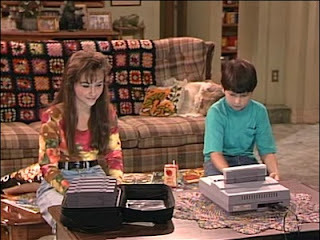
The Super Nintendo Entertainment System (SNES) recently celebrated its 30th anniversary of the North American launch, so it seems the perfect time to post a Flashback Special honoring it! Suppose you have not perused a past Flashback Special of mine (all linked at the bottom of this entry). In that case, they are essentially my history with the platform over the years, with a little bit of history thrown in, and recounting all my favorite games, accessories, memories, and moments with the system.

Odds are for the average gaming enthusiast reading this, and you probably are familiar with the core details of the SNES launch stateside (if not, then I highly recommend CGQ’s video on it for a quick breakdown). The SNES launched in 1991 when I was eight. I did not have a subscription to any gaming magazines yet, so I most likely first found out about the system around that time from classmates at the time at school, the infamous Paul Rudd commercial, and the fourth season of Roseanne that transpired from 1991-92. I vividly remember the Roseanne episode with her son, DJ, pleading with his parents for the brand new SNES for his birthday gift and how his parents dreaded not being able to afford the system. I covered that episode when I did my Roseanne complete series re-watch here in the year leading up to the relaunch of the show several years ago. It brought back memories of how that was the story with my parents also denying me the much sought-after SNES, saying it cost too much and that I already have an NES to tide me over. ”But mommmmm, the SNES is 16-bits!!!!” Yeah….playing that angle got me nowhere. Kiosks & Friends The first couple of years for the SNES, I mostly remember playing at store kiosks. Super Mario World blew me away from the brief time I played it with it being such a leap from the NES installments. I always ate up the precious few minutes I could procure at a store kiosk if no one were playing Super Mario Kart. One last store kiosk memory was eye-gazing over the impressive WWF Royal Rumble. I loved WWF WrestleFest in the arcade, and for a couple of years, it was the only WWF game that offered up WWF’s marquee over-the-top rope elimination match, the Royal Rumble, and it was endlessly fun to play in the arcade. Fast-forward to playing it on console kiosks around its 1993 release, and I could not eat up enough of that game’s Royal Rumble mode either, and at the time, the graphics seemed like a huge step up from the wrestling games on NES. One of my favorite issues of Nintendo Power is the 50th issue that did a several-page spread on WWF Royal Rumble that I must have thoroughly re-read at least a dozen times.

I read this NP spread of WWF Royal Rumble many times, and it was one of my initially most desired SNES games! Around 1993/94, a couple of friends and classmates started to get the Super Nintendo. An early SNES memory that stuck with me all these years is my grade school friend, Jon-Paul, having me over for his birthday where he rented a SNES console and Street Fighter II: Turbo from the video store, and we played it for several hours straight. Another is spending a lot of 1994 at my neighborhood friend’s place, where we played countless sessions of NBA Jam and Mortal Kombat II. Both games were big on codes and secrets and perfect two-player games. I was just regularly getting into video game magazines at this time and ate up issues of Tips & Tricks, Game Players, and Electronic Gaming Monthly to see what kind of hidden character and other much-rumored codes were making the waves each month for both of these games. Mortal Kombat II especially dominated the code-fervor that season with trying to uncover how to face off against secret characters like Jade, Noob Saibot, and Smoke, and trying to memorize all the input sequences for the game’s infamous Fatalities. Fast forward to late 1995/early 1996, and I still did not have a SNES, but a new neighborhood friend, Rich, just got one and the next several months at his place introduced me to so many SNES games. Rich kind of got me somewhat into RPGs at the time, and while it may not sound fun on paper, there were many times I recall just kind of embracing the role of “armchair gamer.” I did this for games like EVO: Search for Eden, and Eye of the Beholder while keeping an eye out during gameplay to offer whatever suggestions seemed viable.
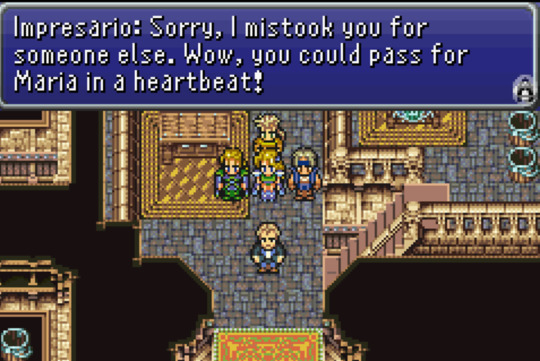
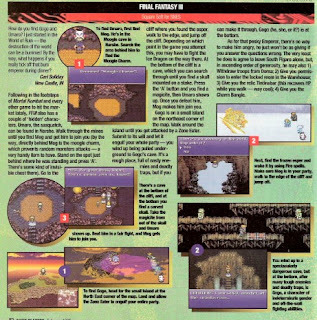
FFVI was eye-opening to me at the time of what video game narratives were capable of, and I devoured the latest secrets for FFVI discovered in the latest issue of my Game Players subscription that was delivered. The RPG I felt like that I contributed something to was the game that was originally released as Final Fantasy III. That game featured two-player support for battles only, so it was refreshing to help Rich with progressing through the game finally. My two favorite characters to use were Sabin and Cyan. That game especially blew me away with its larger-than-life story with two different game worlds, the momentous opera scene with Celes, the dazzling mode-seven graphics when traveling via airship or Chocobo, constantly getting irked at Shadow whenever he deserted the party, and so many other priceless moments. Over the years, I tried restarting the GBA version on a couple of occasions and regrettably have yet to finish it. Finally Owning a SNES….in 1996
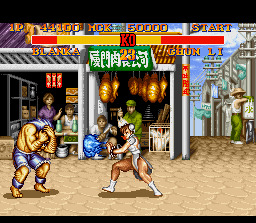
Growing up with divorced parents put me in a unique childhood when it came to gaming. I lived with my mom, who provided for us as best as possible for the three siblings I grew up with, so we only had an NES for us for the longest time. However, when visiting my dad on weekends, he would always be big on hitting up as many garage sales and second-hand stores as possible and would acquire whatever he thought seemed like a bargain. Games-wise, this usually meant he lagged behind a generation because everyone was offloading their Atari VCS/2600s at garage sales for cheap when the NES was king, so I could have a great couple of years to become familiar with the pioneering-era of games on Atari. He then got into the NES scene when the SNES hit in 1991. Sure enough, the same month the N64 launched in America in September 1996 was when he bought a Super Nintendo for the family used at our local Premiere Video. The game we picked up with it was Street Fighter II: Turbo. My dad instantly remarked upon booting it up the noticeable jump in graphics. We played nothing but Capcom’s second Street Fighter game on SNES for a few weekends. I could only finish that game by button mashing into a victory against the final boss, M. Bison, once….with M. Bison. I still have a lot of love for this era of Street Fighter - whether it be for the roster, every character’s stage and theme music, and receiving Nintendo Power’s strategy guide for the game for Christmas and studying it regularly to improve.
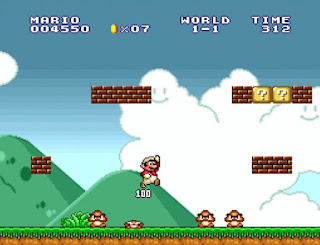
After a few weeks, we realized we needed something else than a fighting game, and after another trip to Premiere Video, we came home with Super Mario All-Stars. It felt like the easy choice to go with 16-bit remakes of all four 8-bit versions of the core Mario Bros. games. Every game felt like a whole different game with all-new graphics and sound, and more importantly, being able to save progress midgame. This was a bigger hit with the entire family, and it provided many days of taking turns in its alternating two-player mode to see who could get the farthest in the four Mario games included.
youtube
Make sure to have some tissues by your side as you witness FFIII/VI's infamous "opera" scene. Seriously, this was mind-blowing stuff to 13-year old Dale in 1996. 16-bit Sportsball Fun

After playing a lot of those first two SNES games, I went into this stretch for the next several years, where most of what I played was sports and wrestling games. I attribute this to many multiplayer sessions with Rich, my brother, Joe, and my dad. I know my dad was not all that into sports other than a passing interest in rooting on hometown Minnesota pro-sports teams. Still, I have to give him credit for spending as much time with us and taking the time to learn and become a pretty solid player at teaming up with me in many sports games. It is worth noting that I feel the 16-bit era is probably the last-gen where most of its library of sports games had a relatively simple pick-up-and-play feel that NES games had. That changed a little bit in the final SNES years, where it was usually EA’s games that started to incorporate more realism in their sports games and make use of most of the buttons of the SNES controller. For football, Madden NFL ‘97 was the one I played the most. I played plenty of the Genesis version at Rich's place, so much so that I noticed too many little differences with the SNES version to make it stand out on its own. For 16-bit sports nuts that want to know, the Genesis version had the better playing version, but the SNES had a better overall presentation and more popping audio and visuals. I was part of a small slice of sports gamers big into NES Play Action Football, and the 16-bit version played almost exactly like the NES version, but with a 16-bit upgrade and also has a nifty feature to play games at the high school, college, or NFL level.
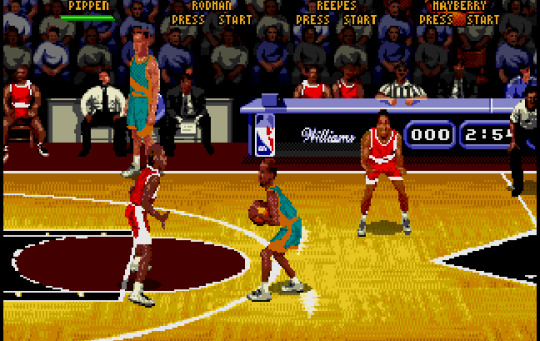
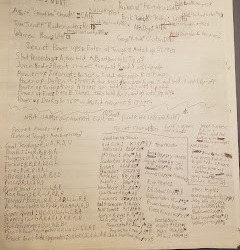
NBA Jam and NBA Hangtime dominated my 16-bit sports lineup. The code scene for these games were so intense at the time I had to keep my own binder of notes on them all that I still have today as seen above! As I alluded to earlier, when it came to hoops, I played way too much NBA Jam the first year it was out at my friend’s place. However, the arcade hoops game I played the most on SNES was NBA Hangtime, which was developed by the same people who made Jam. I got that game new for Christmas in 1996 and must have played it regularly with Rich for nearly a year straight. I do not hear that game receive the same level of praise as Jam, but it added a few new fun layers to freshen up the gameplay, like being able to do co-op dunks and earn “Team Fire,” and being able to create players. For more simulation-focused hoops, I played a lot of NBA Live ’96 with my dad, in addition to Nintendo’s NCAA Basketball which appeared like a technical marvel to me that was ahead of its time with the mode-seven camera allowing constant 3D rotation whenever possession of the ball changed and foreshadowed what would become the go-to camera perspective for the next-gen of basketball games. Finally, I will cherish my time with Bill Laimbeer’s Combat Basketball for it being the only hoops game I ever had to consult a guide to figure out how to shoot the damn ball….and for its surprisingly rocking soundtrack. Find out all about it when I broke that game down with the Your Parents Basement crew on their penultimate podcast.
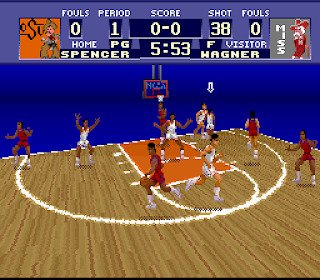
Nintendo incorporated the same camera style into its hockey game, NHL Stanley Cup. Its graphics also impressed me, but it was rather challenging to score a goal, and I did not have as much fun with it. I played EA’s hockey games more on Genesis than SNES, but EA’s baseball game, MLBPA Baseball, was the hardball game I spent the most time with on Super Nintendo. Many years later, I picked up Nintendo’s Ken Griffey Jr. Presents: Major League Baseball, and had some fun with it, but already played the Game Boy version of it to death by the time I picked up the SNES version, and thus did not invest as much time with it as I did with EA’s game. Wanna Wrassle!?
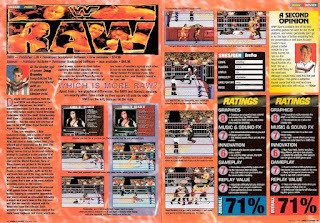
I must have read through this review of WWF RAW countless times in my youth, and seeing how this essentially is a bigger and better version of Royal Rumble only increased my desire to one day own a SNES! The North American wrestling library was a significant step up from the bottom of the stairwell where most of the NES games hung out….but on the SNES, it only made it roughly halfway up the stairs. The aforementioned WWF Royal Rumble provided many hours of fun for its day, but it has not stood the test of time with the button-mashing grapple meter it featured that will obliterate thumbs on the normal difficulty level! Its sequel, WWF RAW, was noteworthy for having more match types available and being one of the first games to have a selectable female wrestler in Luna Vachon, but it too used that same ill-fated grapple meter that has not aged well. WWF Wrestlemania: The Arcade Game is a fun little hybrid of Mortal Kombat and wrestling, but the SNES version is notorious for lacking two wrestlers compared to all other home versions.
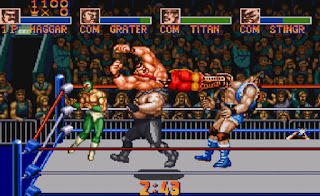
For non-WWF games, WCW SuperBrawl Wrestling is rather unremarkable….except for its exceptional wrestler select screen.There were a few interesting unlicensed wrestling games in America. Natsume Championship Wrestling featured a solid wrestling engine but removed/altered the AJPW wrestlers from the Japanese version of the game. Hammerlock had a promising concept of having part of the screen dedicated to nonstop Tecmo-esque cinematics. In contrast, the other half of the screen featured 2D gameplay, but the cameras constantly flipped on screen, to which half was dedicated to cinematics or gameplay. It resulted in it being a jarring mess. Saturday Night Slam Masters is no such mess, however, and is a better hybrid of fighting game meets wrestling game, with this one done by Capcom. It features larger-than-life character sprites, full-on ring entrances with laser lights, and is a fun-playing combination of wrestling and Street Fighter. To top it off, Slam Masters has Final Fight’s Mike Haggar on the roster to boot!
youtube
Joey Pink does a fine job detailing why Capcom's "Street Fighter" in a wrestling ring should not be missed! Ensuring RPGs are here to Stay Aside from watching Rich play some of the RPGs I listed above, and of course, playing Final Fantasy VI with him, I did get a chance to play a few other RPGs on the SNES over the years, and it was not until the last few years that I finally finished a couple of them. In the late 1990s I first started two RPGs that stood out to me at the time because they broke out of the medieval fantasy mold most other RPGs at the time took place in. Shadowrun on the SNES was drastically different from the Genesis version I first encountered at Rich’s. This one still had the same futuristic cyberpunk world setting and terminology, but there were many more dialog options with NPCs that were pivotal in asking the right questions to progress the story. Additionally, the hacking games played out differently and had more of a puzzle theme to them than the action-oriented ones in the Genesis version, and the combat had kind a PC interface where a cursor had to be dragged across the screen on which target to aim at. I still wound up being totally into it and became stuck in the back half of the game before my save data became corrupted. I thought that would end my days with Shadowrun…
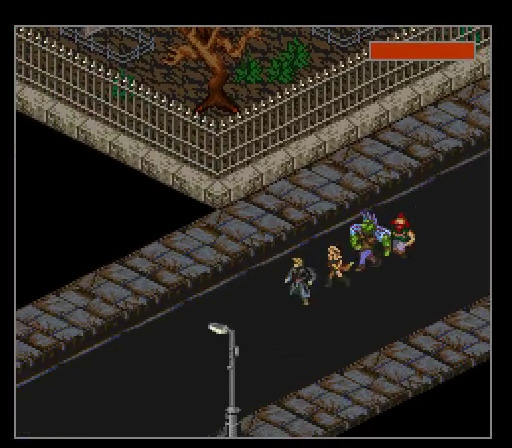
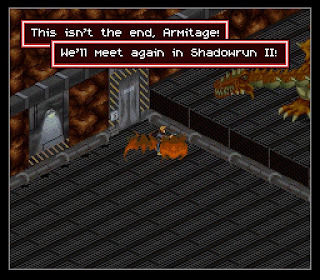
SNES Shadowrun remains one of my all-time favorite RPGs as of this writing! The final gauntlet tower was an ordeal and a half to work through, only to face off against a dragon as the final boss! …until nearly two decades later in 2016. I mentioned on past flashback specials how I occasionally guest host on the Your Parents Basement podcast, where they cover a random retro game per episode. In 2016 they asked me if there were any games I had in mind to cover, and Shadowrun felt like worth revisiting and possibly knocking off the “must beat this game” bucket list. I progressed until about a little over halfway through by the time we all met to record and broke down the game, but by that point, I just started to make further progress than my last effort and was determined to see this one through! I was playing on actual SNES hardware and was surprised that the battery still held a save but ran into trouble in the final tower with a gauntlet of enemies on each floor to overcome before the final boss. I looked up a walkthrough and discovered an exploit to grind experience to beef up my character. Eventually, I managed to persevere and finally conquer the final boss, a fire-breathing dragon, to cross finishing Shadowrun off my bucket list! I had a riot podcasting with the YPB crew about it too, so please click or press here to give it a listen if you want to know more about this under-the-radar 16-bit RPG.
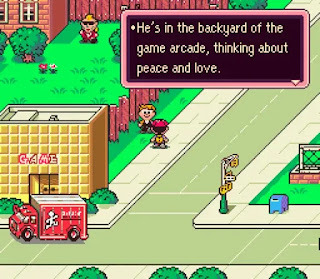
Fast forward three years later in 2019, and the awesome YPB hosts of Steve, Huell, and Todd helped me once again restart and finish another SNES RPG that I came close to finishing in the late 1990s before evil corrupt save data reared its ugly head again. This time the game of choice is the uber-expensive Earthbound. Like Shadowrun, that game stood out to me because its setting went against the grain of fantasy settings and instead took place in modern times as grade school kids. The opening levels felt like getting lost in your neighborhood and using childlike items as weapons like Yo-Yos and baseball bats. I do not own that ridiculously expensive game, but by 2019 I did own a SNES Mini (more on that in a bit) that I made sure to abuse the save state and the rewind functions it provided to overcome some troubling bosses in the back half of the game. That final act of the game certainly goes places with its sci-fi twists and feels like an entirely different game, but I still loved it all the same! It felt exhilarating to finally knock this one off my “to do” list as well, and I had just as much fun dissecting it to pieces with the YPB crew that you can check out by click or pressing here. Unfortunately, this is where my extensive hands-on time with SNES RPGs comes to an end. I played a lot of FFIII/VI, and finished Earthbound, and Shadowrun. Sure, I dabbled in several other games but did not put more than an hour or two into them. One of those games is the much-heralded, Legend of Zelda: A Link to the Past, and I have no excuse for never sticking with it because I loved the NES original. It was the GBA re-release I played, and I think I was spreading myself thin while playing and reviewing too many games simultaneously. Lufia and Breath of Fire II were another pair of RPGs I put a couple of hours into that both left me with promising first impressions, but there was a whole other reason why I did not go back to those again, and that is because then I was waist-deep at the time in….. Discovering Emulation Right around the time my family acquired its first computer in the fall of 1997 was when I found out about emulation. It seemed way too good to be true to easily download and play games right on the computer, especially when factoring in the SNES was at the tail end of its lifecycle, and there were still new games releasing for it. As an unemployed 9th grader at the time, I sampled countless 8- and 16-bit ROMs with the SNES games I was the most curious about. A few of the RPGs in the previous paragraph being prime examples of the ones I invested the most time into. It proved to be overwhelming with so many choices, but I took a long sabbatical after a year or so of taking in the emulation scene after the family computer crashed and I lost all the save data I had amassed in so many games.

It has been interesting to see how emulation has evolved over the years from programs like SNES9X and Retroarch to being incorporated into machines like the MISTer, RetroPi, and Retron 5. Nintendo has learned to embrace official, legal emulation over the years with purchasable digital classic games on systems such as the Wii, WiiU, and 3DS. Having a stable income as an adult now many years later, I feel guilty for embracing the emulation scene so hard in my teenage years, so much so that whenever Nintendo re-releases one of its classic hits several times over, I choose to purchase it again (well…usually at a sale price) to redeem myself. Keeping SNES Alive Today
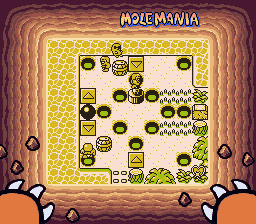
Over the years, I find myself diving into retro games versus the latest and greatest coming out. I am a fan of the various SNES hardware updates/clones, both officially from Nintendo and unofficially from other companies, which has kept my SNES and other retro game fandom blood flowing over the decades. I am unsure if it feels right to lump it in here, but the Super Game Boy lead to me getting a lot of extra life out of my SNES. Playing Game Boy games on the big screen was a big deal to me back then, considering it was always a pain to make out what was happening on the non-backlit handheld. For some reason, those special border screens that would eventually have funny animations after being left idle for so long made an impression on me. Game Boy games with the “Super Game Boy Enhanced” logo on the front of the box usually have their own exclusive border and special color palette. I loved the Mole Mania and Donkey Kong Land borders the most! I thought it was rad that around 15-20 special enhanced Super Game Boy titles featured multiplayer support with two SNES controllers. They consisted almost entirely of Bomberman and fighting games, but it was still a cool feature nonetheless. The handheld Hyperkin SupaBoy is the unauthorized SNES take on the Sega Nomad by having a portable SNES. It is a bit on the bulky side, but it has a rechargeable battery, and its support has been flawless with my entire SNES library. Another Hyperkin product I got a lot of use out of is the Retron 5. I know that particular clone system is controversial with retro game enthusiasts based on the unauthorized emulators it implements. However, the user interface and emulation support made it possible for me to make record progress in many SNES games by taking advantage of save states and its optional Game Genie-esque cheats library. The SNES Classic Edition is an excellent official piece of hardware from Nintendo that has the pint-sized SNES pre-installed with 21 SNES games, one of which is previously unreleased Star Fox 2. It has an adorably intuitive interface and supports game rewinding and save states, which made it the way I was finally able to finish Earthbound. It was also surprisingly not-so-difficult to plug into a PC and import a bunch of SNES ROMs into. Other companies like 8bitdo made that system extra convenient by making their recommended wireless controllers compatible with it!


If you did not grow up with the SNES, then both of these options are great entry points for those looking to move on beyond emulators. The Analogue Super NT may have been pushing it too much price-wise. When it comes down to the nuts and bolts of emulation tech, I am not a wizard by any means, except that by all sources, it sounds like the Super NT offers the best hardware emulation with its FPGA technology. It makes SNES games appear as pristine as possible on an HD/4KTV without any or as minimal of the fuzziness that happens whenever I try plugging in the composite/RCA cables from a base SNES system into a 4K/HDTV. For those unfamiliar with the Super NT, this video from the My Life in Gaming crew does a thorough dissection of everything it has to offer. The list of options in there is intimidating to mess around with, but this sounds like the way to go if one wants to keep playing their cartridges……although I have to admit I am pretty satisfied currently with the Retron 5 and SNES Classic Edition.
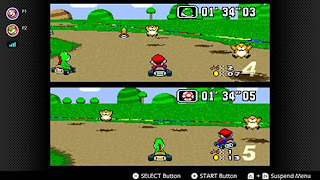
Odds are some of you are quite a bit younger than me and grew up post-SNES lifecycle. Not interested in going down the pricey road of hunting down old cartridges and hardware, and do not want to dabble on the dark side of illegal emulation? Then a terrific alternative is if you have a Switch with Nintendo’s $20/year online service membership and taking advantage of the Nintendo Switch Online and Super Nintendo Switch Online digital game portals. It has unlimited access to the slate of games on there, along with save points as long as your membership remains active. The implementation of save states and the user interface has also improved noticeably over the emulation used for NES & SNES Classic Editions. More importantly, it adds the feature to play online with a friend. Last year I played online SNES games with my nephew, who was wrapping up 6th grade at the time, and this was his first time playing SNES games. He loves Mario Kart 8 on Switch, and so when the first game we played was the original Super Mario Kart, I could not help but crack up when he instantly remarked, “Dale, this looks old!” He eventually came around, and then we had some fun playing co-op , Joe & Mac . A couple of years ago, on my Genesis Flashback Special, I made sure to reminisce of my fond memories of the summer I spent playing nonstop Sega Channel. These NES/SNES Switch portals are essentially the Sega Channel, but far better because it does not cost $15 a month (in 1994 dollars which equals $27.63 today per Google), offers multiple save states, and ability to play online for only $20 a year!!! Kids, get your parents to hook you up now!!! Miscellaneous Quick Hits
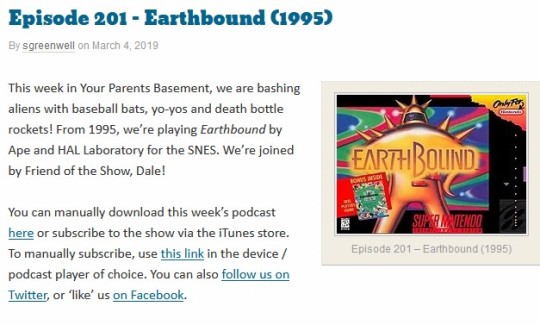
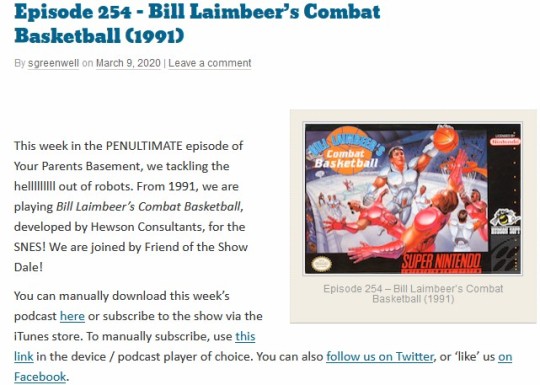
SNES games were the most common denominator on six of the 13 episodes I guest hosted on the retro game podcast, Your Parents Basement. Check out their full archives by click or pressing here. -Turns out I did quite a few guest hosting spots on Your Parents Basement Podcast for SNES games. For those that are podcasting fiends and dug the three episodes I linked to already, then I will link you to three more SNES themed episodes I appeared on where I breathed in the Mode 7 skies of Pilotwings, embraced Capcom’s action-platformer prowess in X-Men: Mutant Apocalypse, and made sure not to miss any Gatorade and Wheaties health pick-ups in Michael Jordan: Chaos in the Windy City.

-The SNES controller is my favorite pre-disc console era controller. It kept the similar button layout of the NES controller but rounded off the edges into its iconic “dog bone” feel so the controller no longer cramped in your hands! Throw in the two extra face buttons and two additional shoulder buttons, and it opened up all kinds of deeper gameplay possibilities! It made it perfect for most fighting games that used almost all the face and shoulder buttons. I found the shoulder buttons were also smartly implemented in NBA Jam/Hangtime for being assigned to use for turbo speed functionality. As far as other SNES controllers/peripherals go, since I loved the NES Zapper, I always wanted to try the Super Scope, but as a kiddo, its bazooka-sized proportions were kind of intimidating. It still kind of bums me out all these years I never got to experience it with epics like Yoshi’s Safari, T2: The Arcade Game, and Tin Star. I never had an opportunity to use the SNES mouse either, which I kind of regret all these years later after seeing all the marvelous creations from experts at Mario Paint, and it was cool to see some PC ports like Civilization, Doom, and Wolfenstein 3D take advantage of SNES Mouse compatibility.

-The 16-bit era was when fighting games exploded, and as you can tell above, I spent a lot of time with Street Fighter II: Turbo, and the first two Mortal Kombat games. Other than that, though, the only other fighting game on SNES I put significant time into was TMNT Tournament Fighters. It was released at the tail end of the TMNT-mania when the cartoon peaked at its popularity. The game itself was a surprisingly competent licensed fighting game from Konami, and tried its best to feel like a solid Street Fighter-clone. Speaking of them pesky turtles… -…TMNT IV: Turtles in Time was the only beat-em-up brawler I put considerable time into on the SNES. I have vague memories of trying others out once or twice like The Peace Keepers, and Super Double Dragon, but Turtles in Time was the one I frequently revisited over the years. It is a superb rendition of the arcade game, with SNES-exclusive levels like the Technodrome that had a fantastic first-person boss fight against Shredder, where lowly Foot Soldiers had to be chucked right at him to defeat Shredder. The soundtrack is one of my favorite SNES scores, so much so that I went all-in to get the for it! I have so many great memories of this game, with the highlight being my friend Matt and I revisiting this for complete runs of it once every year or two for about a dozen years.
youtube
Turtles in Time and FFIII/VI are my favorite SNES soundtracks, but Turtles in Time I own on vinyl so I will embed it here in all its glory for you to enjoy as well!
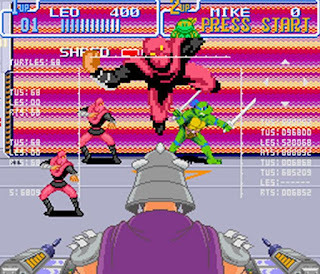
-The SNES library had a quality slate of racing games. Super Mario Kart quickly rose to the top of the ranks and was always fun to bust through a GP with a friend. Street Racer was one of the first kart-clones to hit in 1994, and for some reason, that one always stuck with me. As did it being one of the few games to have four-player split-screen support with all four screens being horizontal! Rock ‘n Roll Racing is another killer arcade racer on SNES; think of a more beefed up RC Pro-AM, but with a good dose of heavy metal mixed in. This past year saw it re-released as part of the Blizzard Arcade Collection for everyone to experience it! I remember trying out F-Zero at a store kiosk around SNES launch, but was too young at eight years old at the time to fully grasp its style of futuristic racing (or that the name was a riff on F1 racing until a couple of years ago). I was more into a game similar to its style that was the trilogy of Top Gear titles. Uniracers was a quirky racer I enjoyed with its unique aesthetic and one-wheeled racers taking advantage of their nature in races filled with jumps and loop-de-loops….too bad about Pixar holding a grudge against Nintendo and legally forcing them to yank it off shelves. Nintendo’s other racer, Stunt Race FX, was ahead of its time with the polygonal FX-based graphics running pretty chunky on the SNES. Still, it is a commendable piece of 16-bit tech they were just barely able to keep running at a passable-enough framerate. Another FX-chip game that did not originally gel with me was…
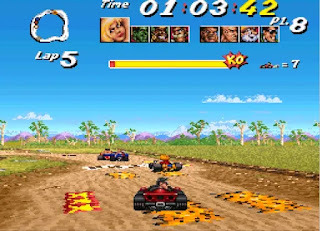
-…the original Star Fox. Being 10 when it released in 1993, I thought those polygonal graphics looked blocky and horrendous and would have none of it! Many years later, I would revisit it and rightfully come around on it! -Another Nintendo-published game that received a lot of hype was Donkey Kong Country with its cutting-edge 3D models. They were plastered all over gaming mags at the time. I briefly recall trying out the first and second of the three Donkey Kong Country games on SNES. However, I did not put more time into them because I beat Donkey Kong Land on Game Boy before our family got a SNES, which was just a watered-down port with some remixed levels for the handheld. I enjoyed my time with it, but its disappointingly blunt “congratulations” ending left a bad impression on me, and I never felt like giving the other entries a serious go all these years.

-Some may be wondering why there has yet not been anything dedicated to the pair of Super Mario World titles and Super Mario RPG? Super Mario World was probably one of the first SNES games I tried when I visited my older brother at his first apartment in the early 90s. I think the heavy-duty graphics and trying to comprehend attacking with Yoshi proved to be too much for eight or nine-year-old me at the time. I played it a few other times in my 20s, hanging out with coworkers on retro game nights, and had fun with it, but I think since I was exposed to the NES trilogy more and played the hell out of All-Stars, that those were the versions I preferred more. I appreciated how Nintendo stepped up to Sega’s edgier marketing at the time with Nintendo’s “Play it Loud” marketing campaign. Unfortunately, I think their ad for Super Mario World 2: Yoshi’s Island was a bit too extreme for 12-year old Dale at the time. That ad (click here for it if you are feeling daring)was forever planted in my subconscious and always crossed my mind and indirectly caused me to avoid Yoshi’s Island for all these years. I did pick up Super Mario RPG and it is on my “bucket list” of games to play as well. I am holding off on it all these years because I was hanging out with Matt one day, and he explained how he was having a tough time with the final boss, Smithy. Well, he wanted to give me a quick demo to show how unforgiving of a challenge the boss was….but for some reason his clutch gaming skills kicked in right then, and he beat Smithy and was exposed to the ending right then and there!
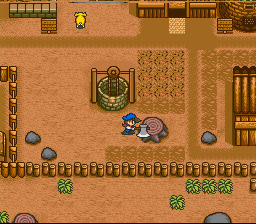
-As far as other tough SNES games go, the two most challenging for me are easily Contra III: The Alien Wars and Zombie Ate My Neighbors. Contra III is like the first two games on steroids. I love the boss battles and intense walk-n-shoot chaos, but do not love constantly dying in one shot! Zombies Ate My Neighbors is another fun action-platformer that is also equally tough to make it farther than a few levels in unless you seriously dedicate yourself to it. Hey, both of these games also saw re-releases this past year on current consoles with the Contra Anniversary Collection and Zombies Ate My Neighbors & Ghoul Patrol set for those wanting to experience 16-bit nail-biting difficulty (but with save state support!).
youtube
I hope this excellent video review from the quintessential retro video game source, Jeremy Parish, suffices for my lack of any meaningful Super Mario World memories here. -In 1997, I was hyped for a late SNES release, the original Harvest Moon. The farm/life/dating-sim series is still around today from publisher Natsume (as well as the original developers parting ways with Natsume and delivering their own competing Story of Seasons series). During the SNES era, I spent several summers out on a farm. I appreciated rural life's solitude and free spirit lifestyle, and that first Harvest Moon game perfectly encapsulated that. Trying to determine the best way to spend the day tending to the fields, livestock and managing a social/family life was surprisingly fun and engaging! Harvest Moon remain one of two games that I submitted a blurry Polaroid photo to Nintendo Power’s “Arena” high score section. I cannot recall if my score got posted or not.
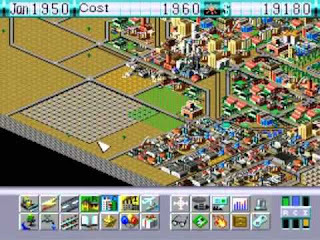
-The original Sim City port on SNES received a lot of love around the SNES launch window, with Nintendo giving it a unique makeover with bonus Nintendo characters in it and an exclusive tutor in the form of Dr. Wright to ease everyone into the simulation gameplay. I never played too much of that version, but one night at Rich’s, the game we decided to rent that night was Sim City 2000. That one was released way late into the SNES lifecycle and lacked any Nintendo extras the first SNES game had. Still, we stayed up all night playing it and looking at our daily news recap and mayor approval ratings and trying to figure out where to stop underwater pipe blockages! It ran slowwww on the SNES, but we tolerated it fine enough at the time because I had yet to play the PC version. Eventually, I would check out the PC version and came away surprised with so much I had to put up within the SNES game. -For those wanting to dare the Super Famicom scene, there are a plethora of great games that never made their way stateside, and better yet, a hearty chunk of them have received English fan translations. I am partial to the FirePro wrestling games that never made it here that are vastly superior to all the American wrestling games I broke down above, BS Out of Bounds Golf is an addicting take on miniature golf, the original Star Ocean, and the Back to the Future platformer that was not a five-star classic by any means, but blew away the poor NES and Genesis games that did release here. If you are not that familiar with the Super Famicom library, this top 50 list from RVG Fanatic is a great place to start your research and very much helped clueing me into a bunch of Super Famicom games I had little-to-no knowledge of. Conclusion
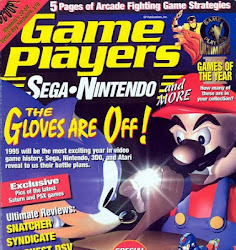
If you are around my age reading this, you may be wondering why I have not gone on about the fabled “16-bit Wars” by now. Rest assured, I experienced it in the lunchroom and at recess and in gaming magazines at the time. I devoured all the side-by-side screenshots in gaming mags of dual-platform releases to see if I could spot which version was better. I want to say back then, I sided with the SNES because I grew up with the NES, but that does not seem like a fair choice since I did not own a SNES until 1996. Reflecting on it, although I experienced a fair amount of RPGs and other games on SNES with Rich, I primarily played endless hours of Genesis games with him back at the time. So whenever I hung out with Rich, I considered myself a Genesis fan, and when I finally got a SNES and grew my SNES library, I considered myself a SNES fan and avoided a lot of the “console wars” trash talk. For younger readers here who want to learn more about the fervor of the 16-bit wars, the book, Console Wars, and its corresponding documentary (which is currently only available on Paramount+/CBS All Access sadly) are my recommended ways to absorb all that hoopla. I will cherish all of the past 30 years of SNES memories and hope you have enjoyed reminiscing with me for the last several thousand words. If you want to hear more of my SNES memories in podcast form, I have a few SNES-centric episodes of my old podcast I recently un-vaulted and have embedded below for your pleasure. They have some of the friends I repeatedly mentioned above as co-hosts that share their SNES experiences and memories, so please load up a random SNES “podcast game” and boot one of these podcasts up for fitting background noise….

youtube
10 years ago I did a 20th anniversary SNES special with Matt!
youtube
Here is the history of RPG series episode dedicated to the 16-bit era.
youtube
Finally, here is Matt and I hosting the 16-bit installment of our history of comic book games series. Bonus Overtime

It would not be a Flashback Special without one random oddball bonus story to wrap it up with. The only Kirby game I ever finished receives that honor. One day, my brother and his friend Jake were over at my place. We were discussing SNES games at some point, and Jake mentioned how Kirby Super Star is his all-time favorite. I said how I never played it and did not think anything of it at the time, but the next time I met up with him and my brother, Jake had the copy of that game with him and insisted on borrowing it to me and said not to give it back until I finished it. I felt this sudden obligation to play through it as a priority, so I did not feel like I was keeping his game hostage. Luckily, Kirby Super Star is a damn fun game, which the front of the box labels as “8 Games in One!” Most of the games are abbreviated-length adventures of only a handful of missions in their unique theme of levels, and a few of the games are mini-games like a race against King DeDeDe. Regardless, almost every game provided that trademark Kirby lighthearted fun and was hard to put down! Kirby’s Dream Course is also a lot of fun on SNES, and is an interesting take of Kirby meets miniature golf! With that anecdote, I will wrap up yet another Flashback Special. Thank you for sticking with me this far, and If you dug reading about my trials and tribulations with Nintendo’s 16-bit machine, please take a look at the other Flashbacks I have linked below!
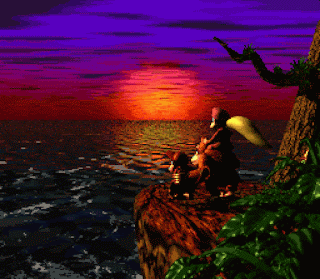
My Other Gaming Flashbacks Dreamcast 20th Anniversary GameBoy 30th Anniversary Genesis 30th Anniversary NES 35th Anniversary PSone 25th Anniversary PS2 20th Anniversary PSP 15th Anniversary and Neo-Geo 30th Anniversary Saturn and Virtual Boy 25th Anniversaries TurboGrafX-16 30th and 32-X 25th Anniversaries Xbox 360 15th Anniversary
#videogames#super nintendo#nintendo#SNES#Super Mario Kart#super mario world#final fantasy vi#final fantasy iii#shadowrun#nba jam#nba hangtime#Mortal Kombat#mortal kombat ii#turtles in time#teenage mutant ninja turtles#sim city#sim city 2000#wwf royal rumble#saturday night slam masters#donkey kong country#kirby super star#ncaa basketball
10 notes
·
View notes
Text
S5 Ep6: Joey Wheeler is on Fire, Yet Again
Came down with a little sickness-not the biggie, just a little sly guy. But I took some meds, I’m a little floaty, I’ve only been listening to baroque music all morning for some reason? And I hate baroque music usually? But I’ll leave it to bro to tell me if this is fluid enough.
Just so you know, these caps were kind of a hot mess for a while and some of them read like that Garfield in of hot eat the food comic until...today. So pls don’t judge me, Judge my damn DMV where no one was following Covid regulations because I’m pretty sure that’s where I got this damn cold.
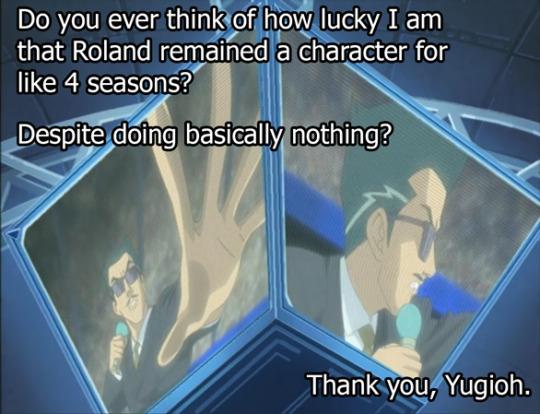
We start off with Roland getting more attention than he ever has in his entire life. Like honestly, I don’t know what Roland’s job really is...but he’s got a very diverse set of very useless skills. One of which, is knowing how to announce sports games that aren’t really a sport, while those games he’s announcing slowly fall into chaos.
Anyway, Roland’s taking so long cherishing his sweet time before everything goes to hell, that he’s boring Joey, who’s kinda turned into a ball of stress in the waiting room.
A lot of this episode is us watching them watching Joey having a break down moment by moment, TBH.
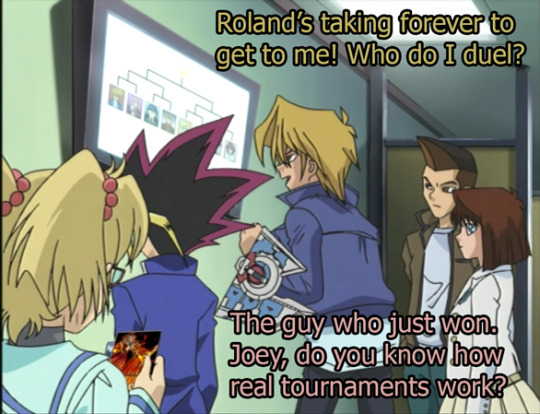
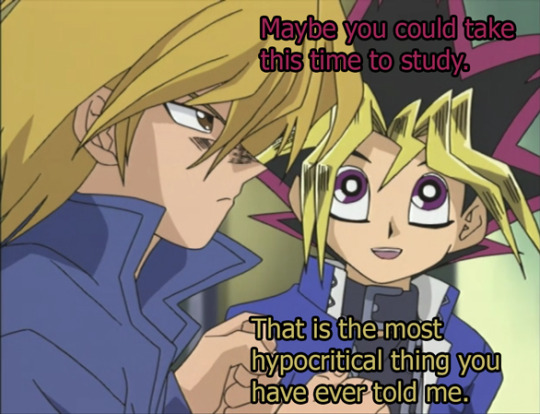
(read more under the cut)
Yugi telling Joey to study his cards and straight up--what?
Like at this point they know what’s on the cards, right? Like there comes a point where even Yugioh cards have a finite amount of words and I’m just going to assume that like...Joey probably knows them all in his own deck, right?
(bro note: they have no limit on what they will put on a card)
Then again, maybe Yugi doesn’t know what “study” means?
Also, appreciate how some artist crosshatched the hell on Joey’s nose there and I zoomed out and ruined it.
Now for some reason every duelist is hanging out in the duel lodge, including our current arch-villain guy who’s brought a book. I want to know what book this guy even reads so no one could suspect he’s actually a hacker who uses computers. He’s reading romance, right? And I don’t think he’d even be into Twilight, I think he’s straight up into hard core Mom romance like a lame ass Nicholas Sparks over there reading “Dear John” for the millionth time because he is completely un-phased by anything else happening in this room.
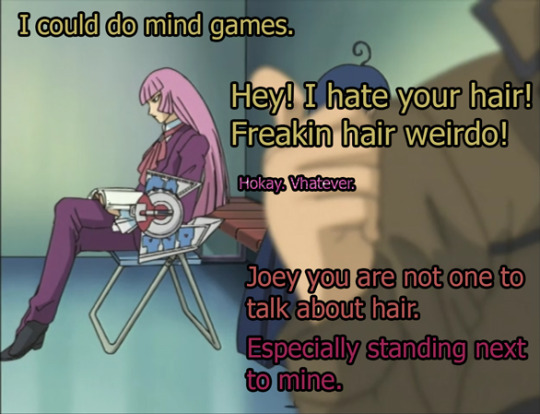
Joey, our hero, just out there being an asshole for no reason.
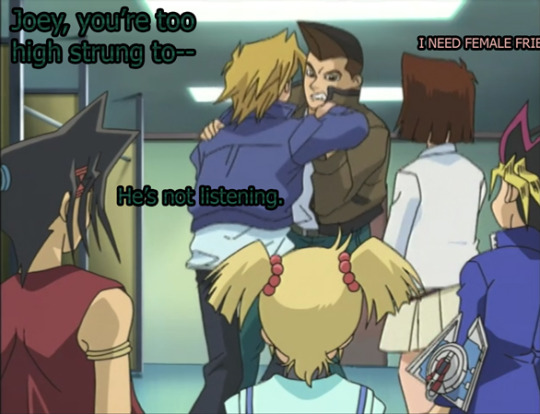
After Tea is pushed into a locker or something screaming about her need for female friends (which she screamed in earshot of Rebecca again, who I figured was on friends terms with her after last episode...but I guess not) Leon hops up to remind us that we should be caring about the fact that his character exists.
And like, I love Leon’s hair color--that’s a good choice, and legit that is the color I tried to dye my hair at the beginning of the epidemic (it didn’t work PS, my hair cannot take dye for the life of it) but also like...he just kinda feels like a weak Rebecca as far as characters go. He’s young, he’s good at cards...I think he goes to a private school? That’s all I can think of about Leon.
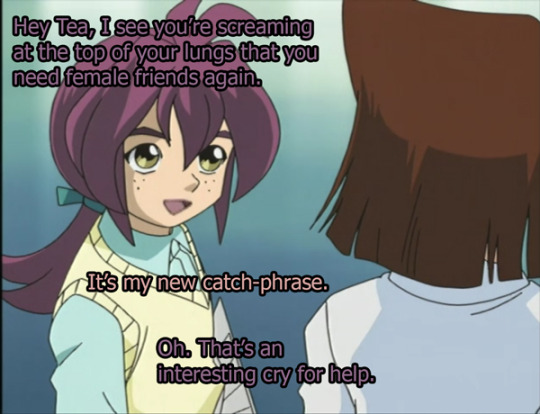
He mostly just reminds us that the big prize of this tourney is to duel Yugi, who anyone could have dueled at any point even without the tournament.
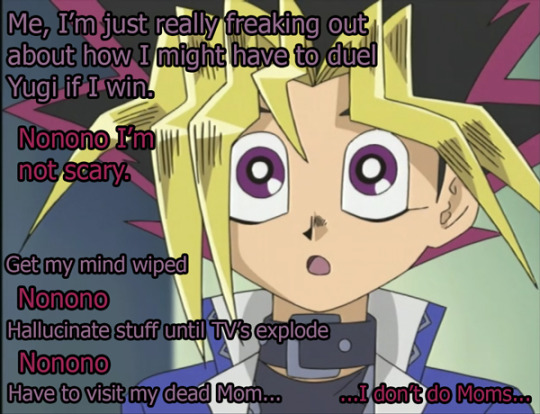
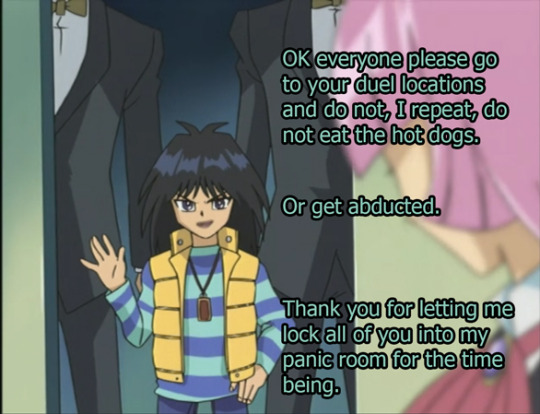
On the way out of the...duel room? lounge? Area? Joey decides to like...make peace with Zigfried, and I gotta tell you, I kinda have to side with Zigfried, because Joey spent the last ten minutes being a freak in the dressing room/lounge/bathroom and at one point looked like he was going to hold the entire locker room in a stranglehold.
I would also want some space from Joey Wheeler, is what I’m saying.
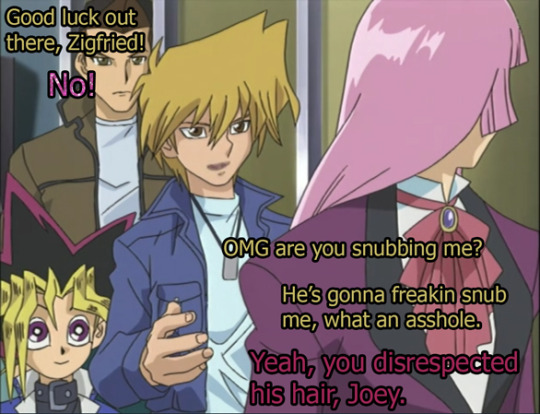
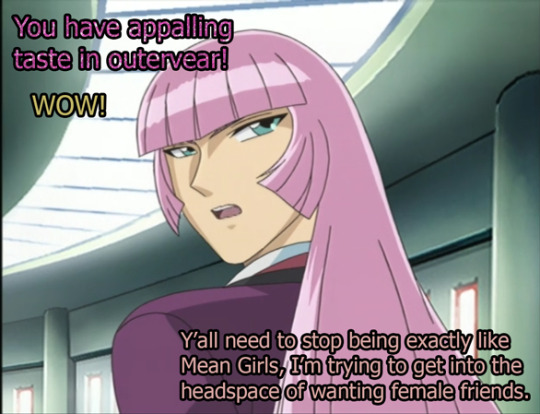
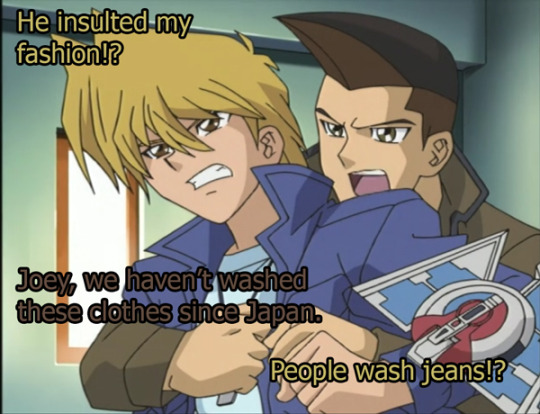
After insulting Joey’s style (which honestly, Joey...has a style? He pops his collar, that’s his entire style.) Zigfried assures us that Joey’s gonna lose and like...
...probably, right? Just looking at the plausible direction this season will go.
Anyway, Joey is such a mess (which is the theme of the episode, that Joey needs to learn to chill in order to win at card games) that Rebecca is like “I understand if all of you leave me to go help our poor baby Joey.” And no one felt bad for her.
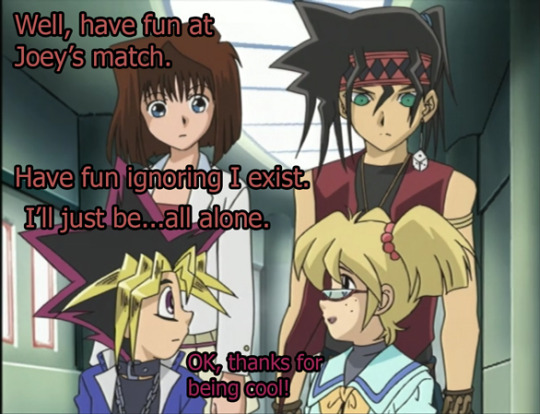
Mokuba comes over to tell everyone all of the Kaiba family secrets because Mokuba has no filter.
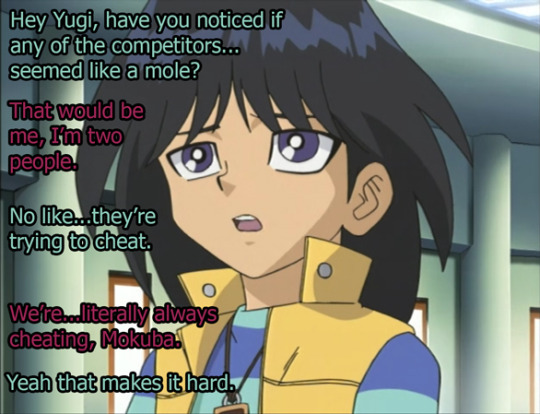
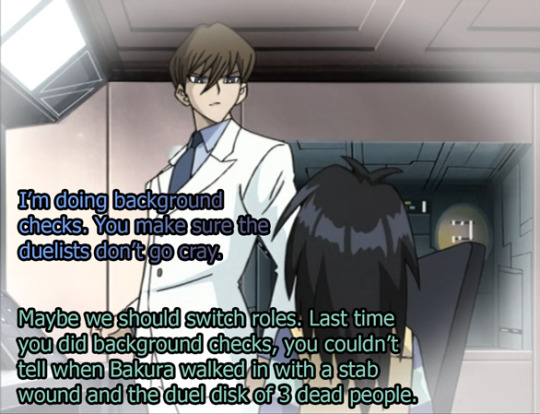
Seto has devoted himself to staring at a computer screen for the rest of this episode. I guess he’ll put their names into Google, realize that social media hasn’t been invented yet, and then just lie his head down on the desk and take a power nap until the tournament is over. Much like I did after taking Dayquil this afternoon.
I like how Seto dressed for success and then locked himself in the server room for most of this arc so far. Maybe he’s just...really tired, I dunno. I don’t really blame the guy, he’s had a hard time.
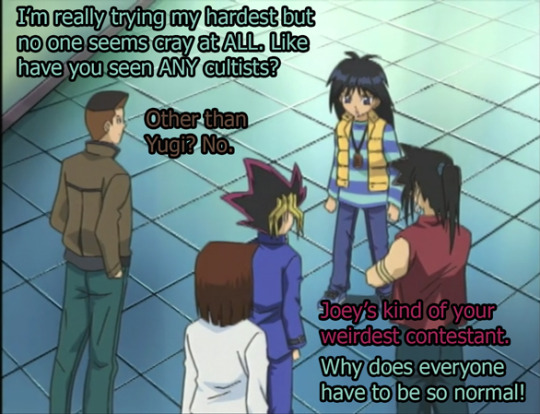
And then Yugi was like “DAMN IT MOKUBA, JUST ONCE CAN YOU NOT INVITE THE ILLUMINATI???”
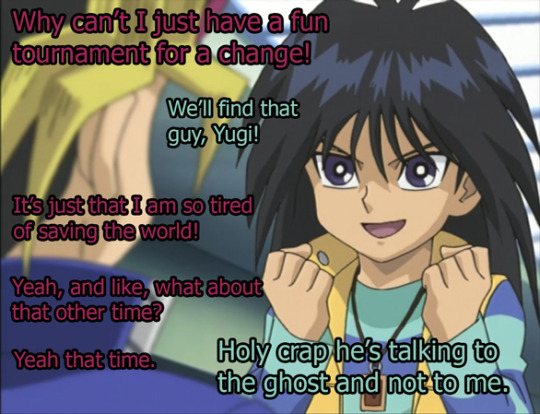
And we had a weird scene where Yugi just started talking to the ghost and it was while he was talking to everyone else, and the show didn’t treat it like that’s a weird thing to do...but it was a weird thing to do.
This show does that sometimes, where I guess they imply that Yugi’s Pharaoh conversations are split second conversations but...they’re not, right?
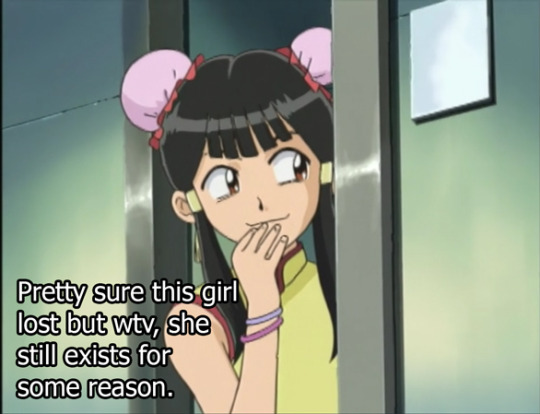
Also this chick ain’t gone yet, and Mokuba is just failing at his entire job for not zeroing in on vibes coming off this chick like stinky cheeseman.
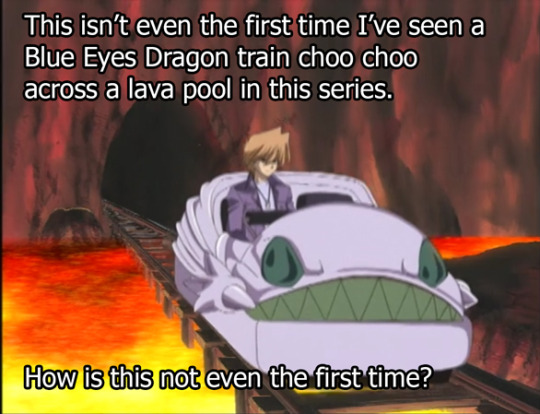
So listen.
Did the Kaibas make like 3 types of Blue Eyes Caboose to one up Noah? Because Noah made one choo choo dragon, and then Mokuba and Seto were like “how dare” and then made sure that everyone ride every single version of the blue eyes caboose just to see how proud of them they were.
How many months of troubleshooting was the train? Like how long in development did Seto and Mokuba spend on these? A lot right? Like most of the time?
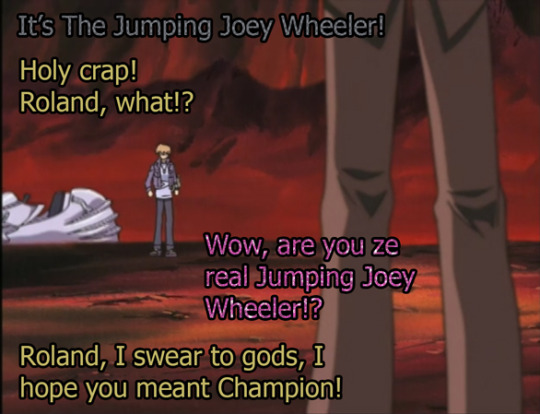
I did not check the subs to see if Roland said Jumping or Champion but I like to believe that Roland thought it was a cool new name he gave him.
Then these guys all showed up.
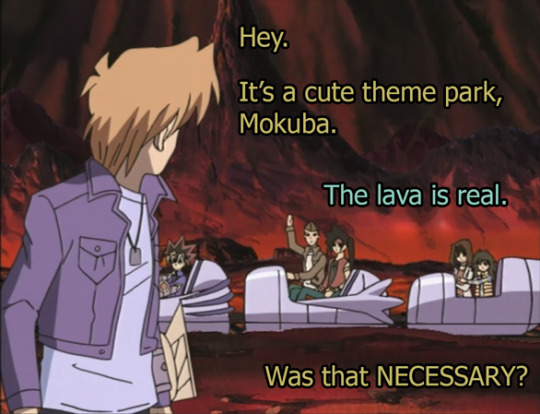
Hey so...can we talk seating arrangements?
Tea decided not to sit next to Yugi after complaining about not spending time with him for like how many episodes? Or was it too awkward to sit on top of what was probably Pharaoh?
Or did Mokuba go like “please, Tea, I cannot sit next to the others because I’m pretty sure one is a mole that is about to go cray” and was Tea like “Good, I need female friends, these ones are driving me crazy!” and then was Mokuba like peering desperately over the edge of his self made dragon train prison realizing he has to listen to Tea complain about boys for the rest of his ride across molten lava?
Headcanons abound about this weird seating arrangement that the animators drew for the reasons they did...but reasons I cannot fully understand. That and the Dayquil is making me overfixate on random stuff.
And also, Tea is kind of the Kaiba’s security’s understudy. Just there to always protect Mokuba with her ass because she’s the strongest woman alive.
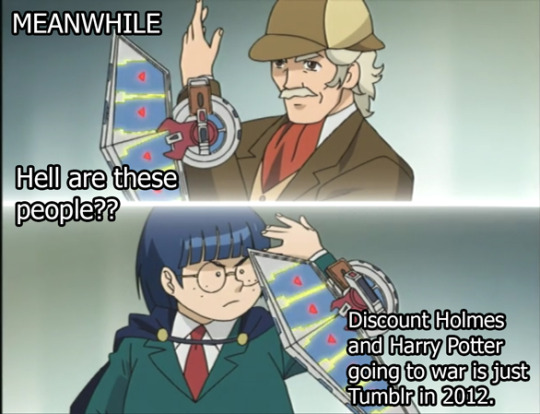
PS I missed the tumblr wars because at the time I was trying to like...run a proper business on blogger. When Blogger died and I jumped over here it was like a weird ruin where everyone was like “tumblr is the most toxic place alive” and...I’ve had a really nice time here, actually. Completely missed that civil war period and I have no regrets.
Now I was there for the Petz wars (warz, I guess) where people were very militant about Petz abuse (abuze?) where apparently people were using the spray bottle on their catz too much and people were very, very upset about it to the point that they were like campaigning about it on their angelfire websites with the most bizarre grassroots campaigns that I still recall, to this day because they were like...well they looked like this:
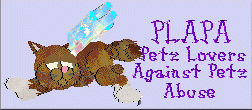
PLAPA. Not only am I 100% positive that only this one guy ever called this movement PLAPA, but I’m 100% positive that not only are Catz not real people, but also this wasn’t actually happening and we never had any proof that it was. Either way, if people knew or suspected that you hadn’t deleted the spray bottle from your game (which at the time I had no idea how to do because I was a wee child) they would basically assume you were on a one way road to being a mass murderer in real life.
In real life we were 7 years old so like...thanks?
But that’s the closest I got to toxicity and at the time I was too young to make an email account and actually converse with these people. I was just there to download their Petz hexes, and I already made a post about how wonderful and incredible Petz Hexing was.
And y’all, I heard, just now after a little deep dive into the Petz Abuse debacle (which yes, is on the wiki), that apparently, like gardening, Petz Hexing came back in a big way during the epidemic--and I have found an active Petz forum in this the year 2021. The only problem is that I no longer remember how to use old timey forums...and I think I’m locked out of seeing most of these threads (and like this forum is so old I think I have to send them a letter in the physical mail to apply). But, I’m pretty sure they’re hosting a picture contest for who’s dogz poses the best. And I’m pretty sure someone created a hexxed Pickle Rick. Or it’s a photoshop that was made to look like a hexxed Pickle Rick.
Dammit why did it have to be Pickle Rick? That’s not worth re-installing Petz and getting it to run on Windows 10...
Guys is this the Dayquil? Is this really happening? I feel like I’m losing my mind for so many reasons...
Anyway, speaking about useless hexing it’s about time that our villain did something that was actually dangerous, so Zigfried decided to install a new virus that does more than turn off the lights. (it still turns off lights)
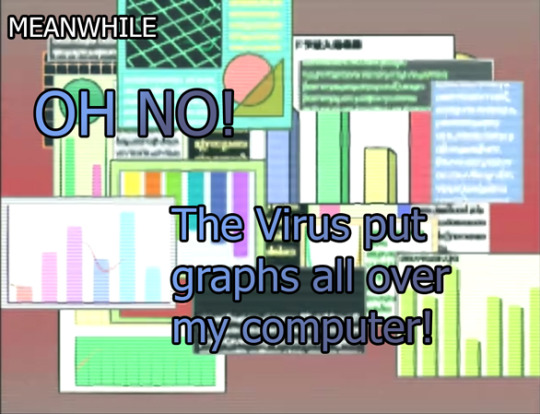
the Spreadsheet Virus!
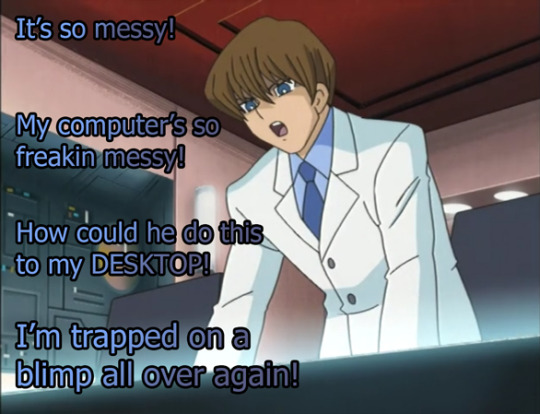
Confounded by the spreadsheet software, it...um...it does this:
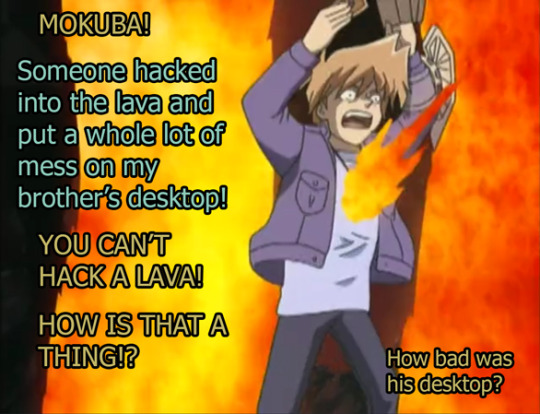
Straight up how does Excel make a volcano erupt? Is that why I have to pay for Microsoft office now?
All this because Joey made fun of Zigfried’s naturally pink hair? Which is the most normal hair on this series outside of like...Tristan?
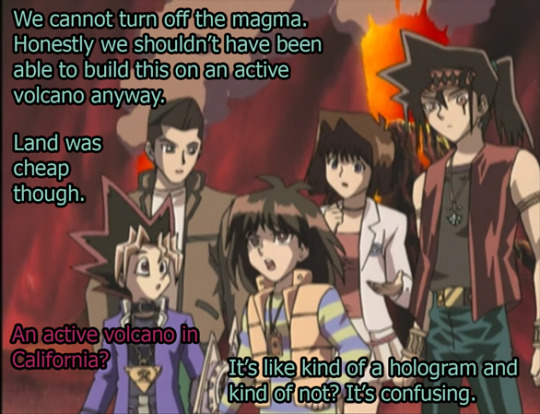
Hey guys...Joey’s fine, right? Like how many times has Joey been on fire? And once in an iron cage next to like...a Fire Golem?
Joey’s fine.
MAN I miss Fire Golem. He had a good mug.
And then we just kinda watch chaos go across the park, chaos that includes: Too many ghosts in the haunted mansion (which honestly--you’ll get your money’s worth, sounds great!), the Ferris wheel goes kinda fast and thus might accidentally be fun, the lights turn off at some concert stage that only had 2 people on it (so it might just be motion detector lights and not even a virus), and um...literal fire and magma are going to set Joey Wheeler on fire.
Just...one of these events does not seem like the others. In fact most of these things sound like good improvements to the park and they should just hire Zigfried at this point.
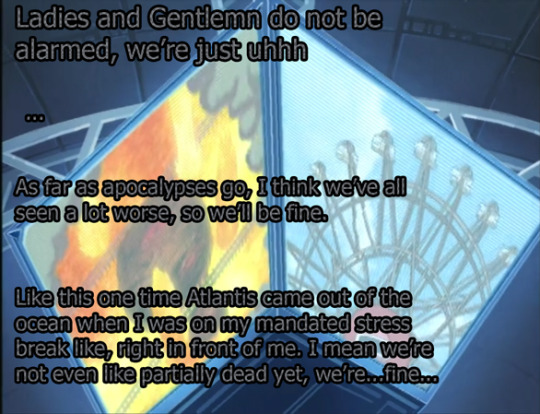
Roland puts down his microphone and jogs across the stage, about a mile through the audience bleachers, and into the staff lounge, to go and bother Seto Kaiba, who is in a room that has a hi-def classical painting copy-pasted on the wall and I can’t look away from it.

I almost did a Google search on this painting but then thought better about it. There’s like...a billion classical paintings that look exactly like this, and they wouldn’t use like a Monet, they would have to do something that’s harder to catch to avoid copyright issues (because yes, even old ass paintings have copyright issues, but no one tell NFT’s which are going to be so freakin screwed and was such a bad idea, that I can’t even start).
Anyway, I have no idea who it is and it is legitimately driving me up a wall, but I’m on too much meds to do the effort of putting it in a reverse google image search.
Plus, a reverse google image search would only pull up Seto Kaiba.
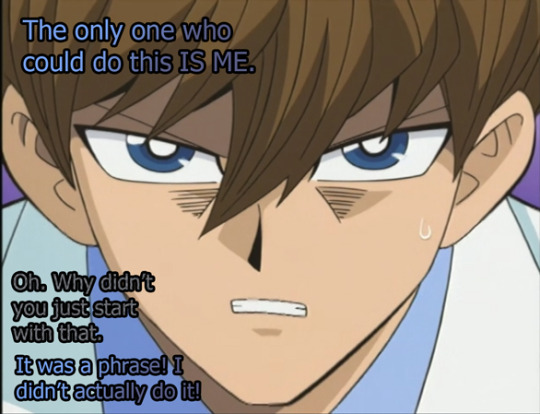
So Kaiba takes us on a little flashback to his weird ass past, a weird ass past that just...doesn’t follow any of the established timelines, but I assume was shortly after adoption but before Seto got into a phase where he wore his school outfit everywhere and tried to shove his MMO off onto his Dad as a business model.
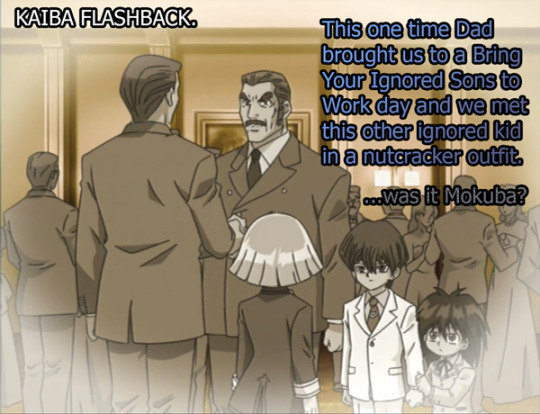
Seto is like 8 for some reason. I don’t know why, they kinda drew him younger this season anyway, like maybe they got a lot of fan mail and realized “Hey I think we made the 16 yo boy too sexy?” And they just toned Seto the hell down. That, and it’s a different animation team, and maybe they looked at Seto’s character design and were like “we don’t get paid enough to draw this well.” So...since Seto actually looks like a teen again, I guess his 12 year old self has to look like he’s in Elementary school.
Also, I only recognized this, because at some point in S3 as I was roasting Noah Kaiba’s weird fashion:
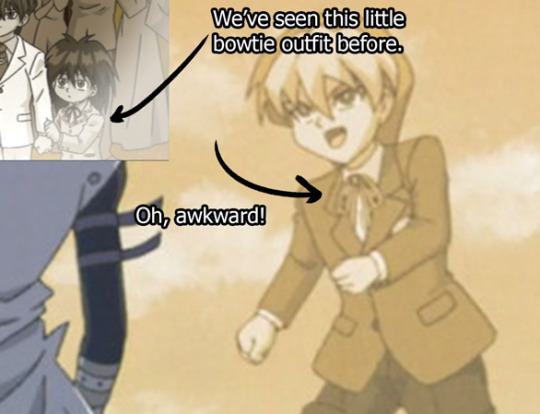
I remember distinctly roasting that little bow tie. I don’t remember when I wrote it, I think there was a version of this outfit that was in color...but I don’t remember where.
Anyway, it’s not the same jacket...but man that’s kind of awkward, ya? Like the maid who dressed Mokuba deffo got fired?
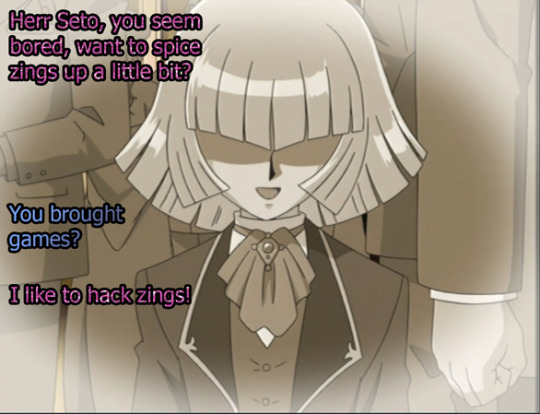
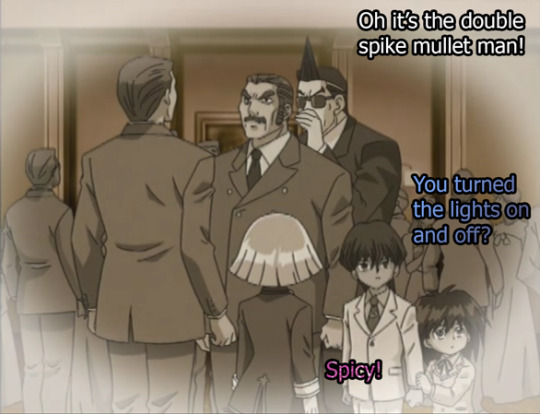
He um.
Turned the lights off a little bit.
Guys this villain is like...
...why does he think lights are scary? Like look at little Seto here. The boy is already bored. Seto duels on the edges of cliffs...he doesn’t care about the freakin dark.

We had a guy who killed everyone on the planet last season, and this season we have a little fashion gremlin standing in the corner and flicking the light switch going “wooooo you never catch me!” and it’s like...
...I’m starting to think this guy isn’t a witch.
Like we’re at Episode 6, there’s still time for this guy to be a witch...but I really am starting to think this guy is just...straight up not a witch. It’s everything Seto wanted, a rival who isn’t a freakin magic person...and sets Joey only fake on fire instead literally on fire like last time...
and Seto is just completely unhinged by it.
Anyway, I’m off to go drink a bowl of soup and pass out. If you’re new here, this is a link to read these in chrono order.
https://steve0discusses.tumblr.com/tagged/yugioh/chrono
#yugioh#yu gi oh#ygo#S5#Ep6#Yugi Muto#Seto Kaiba#Joey Wheeler#Tea Gardner#Tristan Taylor#Mokuba Kaiba#zigfried von schroeder#rebecca hawkins#I talked about catz again#leon#but not the kings of leon guy#I mean he could be
38 notes
·
View notes
Text
Chapter 4 – It is always 1895 [TAB 1/1]
TAB is my favourite episode of Sherlock. It is a masterpiece that investigates queerness, the canon and the psyche all within an hour and a half. Huge amounts of work has been done on this episode, however, so I’m not going to do a line by line breakdown – that could fill a small book. A great starting point for understanding the myriad of references in TAB is Rebekah’s three part video series on the episode, of which the first instalment can be found here X. I broadly agree with this analysis; what I’m going to do here, though, is place that analysis within the framework of EMP theory. As a result, as much as it pains me, this chapter won’t give a breakdown of carnation wallpaper or glass houses or any of those quietly woven references – we’re simply going in to how it plays into EMP theory.
Before digging into the episode, I want to take a brief diversion to talk about one of my favourite films, Mulholland Drive (2001).

If you haven’t seen Mulholland Drive, I really recommend it – it’s often cited as the best film of the last 20 years, and watching it really helps to see where TAB came from and the genre it’s operating in. David Lynch is one of the only directors to do the dream-exploration-of-the-psyche well, and I maintain that a lot of the fuckiness in the fourth series draws on Lynch. However, what I actually want to point out about Mulholland Drive is the structure of it, because I think it will help us understand TAB a little better. [If you don’t want spoilers for Mulholland Drive, skip the next paragraph.]
The similarities between these two are pretty straightforward; the most common reading of Mulholland Drive is that an actress commits suicide by overdose after causing the death of her ex-girlfriend, who has left her for a man, and that the first two-thirds of the film are her dream of an alternate scenario in which her girlfriend is saved. The last third of the film zooms in and out of ‘real life’, but at the end we see a surreal version of the actual overdose which suggests that this ‘real life’, too, has just been in her psyche. Sherlock dying and recognising that this may kill John is an integral part of TAB, and the relationships have clear parallels, but what is most interesting here is the structural similarity; two-thirds of the way through TAB, give or take, we have the jolt into reality, zoom in and out of it for a while and then have a fucky scene to finish with that suggests that everything is, in fact, still in our dying protagonist’s brain. Mulholland Drive’s ending is a lot sadder than TAB’s – the fact that, unlike Sherlock, there is no sequel can lead us to assume that Diane dies – and it’s also a lot more confusing; it’s often cited as one of the most complicated films ever made even just in terms of surface level plot, before getting into anything else, and it certainly took me a huge amount of time on Google before I could approach anything like a resolution on it!
Mulholland Drive is the defining film in terms of the navigating-the-surreal-psyche subgenre, and so the structural parallels between the two are significant – and definitely point to the idea that Sherlock hasn’t woken up at the end of TAB, which is important. But we don’t need to take this parallel as evidence; there’s plenty of that in the episode itself. Let’s jump in.
Emelia as Eurus

When we first meet Eurus in TST, she calls herself E; this initialism is a link to Moriarty, but it’s also a convenient link to other ‘E’ names. Lots of people have already commented on the aural echo of ‘Eros’ in ‘Eurus’, which is undeniable; the idea that there is something sexual hidden inside her name chimes beautifully with her representation of a sexual repression. The other important character to begin with E, however, is Emelia Ricoletti. The name ‘Emelia’ doesn’t come from ACD canon, and it’s an unorthodox spelling (Amelia would be far more common), suggesting that starting with an ‘E’ is a considered choice.
When TAB aired, we were preoccupied with Emelia as a Sherlock mirror, and it’s easy to see why; the visual parallels (curly black hair, pale skin) plus the parallel faked death down to the replacement body, which Mofftiss explicitly acknowledge in the episode. However, I don’t think that this reading is complete; rather, she foreshadows the Eurus that we meet in s4. The theme of ghosts links TAB with s4 very cleanly; TAB is about Emelia, but there is also a suggestion of the ghosts of one’s past with Sir Eustace as well as Sherlock’s own claims (‘the shadows that define our every sunny day’). Compare this to s4 – ‘ghosts from the past’ appears on pretty much every promotional blurb, and the word is used several times in relation to Eurus. If Eurus is the ghost from Sherlock’s past, the repressive part of his psyche that keeps popping back, Emelia is a lovely metaphor for this; she is quite literally the ghost version of Sherlock who won’t die.

What does it mean, then, when Jim and Emelia become one and the same in the scene where Jim wears the bride’s dress? We initially read this as Jim being the foil to Sherlock, his dark side, but I think it’s more complicated than this. Sherlock’s brain is using Emelia as a means of understanding Jim, but when we watch the episode it seems that they’ve actually merged. Jim wearing the veil of the bride is a good example of this, but I also invite you to rewatch the moment when John is spooked by the bride the night that Eustace dies; the do not forget me song has an undeniable South Dublin accent.* This is quite possibly Yasmine Akram [Janine] rather than Andrew Scott, of course, but let’s not forget that these characters are resolutely similar, and hearing Jim’s accent in a genderless whisper is a pretty clear way of inflecting him into the image of the bride. In addition to this, Eustace then has ‘Miss Me?’ written on his corpse, cementing the link to Moriarty.
[*the South Dublin accent is my accent, so although we hear a half-whispered song for all of five seconds, I’m pretty certain about this]
Jim’s merging with Emelia calls to mind for me what I think might be the most important visual of all of series 4 – Eurus and Jim’s Christmas meeting, where they dance in circles with the glass between them and seem to merge into each other. I do talk about this in a later chapter, but TLDR – if Jim represents John being in danger and Eurus represents decades of repressed gay trauma, this merging is what draws the trauma to the surface just as Jim’s help is what suddenly makes Eurus a problem. It is John’s being in danger which makes Sherlock’s trauma suddenly spike and rise – he has to confront this for the first time – just like Emelia Ricoletti’s case from 1895 only needs solving for the first time now that Jim is back.
At some point I want to do a drag in Sherlock meta, because I think there’s a lot more to it than meets the eye, but Jim in a bride’s dress does draw one obvious drag parallel for me.

If you haven’t seen the music video for I Want to Break Free, it’s 3 minutes long and glorious – and also, I think, reaps dividends when seen in terms of Sherlock. You can watch it here: X
Not only is it a great video, but for British people of Mofftiss’s age, it’s culturally iconic and not something that would be forgotten when choosing that song for Jim. Queen were intending to lampoon Coronation Street, a British soap, and already on the wrong side of America for Freddie Mercury’s unapologetic queerness, found themselves under fire from the American censors. Brian May says that no matter how many times he tried to explain Coronation Street to the Americans, they just didn’t get it. This was huge controversy at the time, but the video and the controversy around it also managed to cement I Want to Break Free as Queen’s most iconic queer number – despite not even being one of Mercury’s songs. There is no way that Steven Moffat, and even more so Mark Gatiss would not have an awareness of this in choosing this song for Moriarty. Applying any visual to this song is going to invite comparisons to the video – and inflecting a sense of drag here is far from inappropriate. Moriarty has been subsumed into Eurus in Sherlock’s brain – the male and the female are fused into an androgynous and implicitly therefore all-encompassing being. I’m not necessarily comfortable with the gendered aspect of this – genderbending is something we really only see in our villains here – but given this is about queer trauma, deliberately queering its form in this way is making what we’re seeing much more explicit.
Nothing new under the sun
“The thing that hath been, it is that which shall be; and that which is done is that which shall be done: and there is no new thing under the sun” (Ecclesiastes)
"Read it up -- you really should. There is nothing new under the sun. It has all been done before." (A Study in Scarlet, Sherlock Holmes)
“Hasn’t this all happened before? There’s nothing new under the sun.” (The Abominable Bride, Jim Moriarty)
This is arguably the key to spotting that TAB is a dream long before they tell us – when TAB’s case is early revealed to be a mixture between TRF (Emelia’s suicide) and TGG (the five pips), and we see the opening of ASiP repeated, we should be questioning what on earth is going on. This can also help us to recognise s4 as being EMP as well though – old motifs from the previous series keep repeating through the cases, like alarm bells ringing. Moriarty telling Sherlock that there is nothing new under the sun is his key to understanding that the Emelia case is meant to help him understand what happened to Jim, that it’s a mental allegory or mirror to help him parse it. This doesn’t go away when TAB ends! Moving into TST, one of the striking things is that cases are still repeating! The Six Thatchers appeared on John’s blog way back, before the fall – you can read it here: X. It’s about a gay love affair that ends in one participant killing the other. Take from that what you will, when John’s extramarital affection is making him suicidal and Sherlock comatose. Meanwhile, the title of The Final Problem refers to the story that was already covered in TRF and the phone situation with the girl on the plane references both ASiB and TGG, and the ending of TST is close to a rerun of HLV. It’s pretty much impossible to escape echoes of previous series in a way that is almost creepy, but we’ve already had this explained to us in TAB – none of this is real. It’s supposed to be explaining what is happening in the real world – and Mofftiss realised that this was going to be difficult to stomach, and so they included TAB as a kind of key to the rest of the EMP, which becomes much more complex.
However, if we want to go deeper we should look at where that quote comes from. I’ve given a few epigraphs to this section to show where the quote comes from – first the book of Ecclesiastes, then A Study in Scarlet. It’s one of the first things Holmes says and it is during his first deduction in Lauriston Gardens. This is where I’m going to dive pretty deep into the metatextual side of things, so bear with the weirdness.
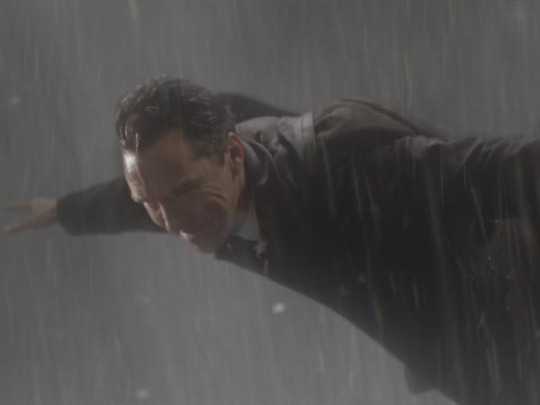
[we’re going deeper]
Holmes’s first deduction from A Study in Scarlet shows that he’s no great innovator – he simply notices things and spots patterns from things he has seen before. This is highlighted by the fact that he even makes this claim by quoting someone before him. If our Sherlock also makes deductions based on patterns from the past, extensive dream sequences where he works through past cases as mirrors for present ones makes perfect sense and draws very cleverly on canon. However, I think his spotting of patterns goes deeper than that. Sherlock Holmes has been repressed since the publication of A Study in Scarlet, through countless adaptations in literature and film. Plenty of these adaptations as well as the original stories are referenced in the EMP, not least by going back to 1895, the year that symbolises the era in which most of these adaptations are set. (If you don’t already know it, check out the poem 221B by Vincent Starrett, one of the myriad of reasons why the year 1895 is so significant.) My feeling is that these adaptations, which have layered on top of each other in the public consciousness to cement the image of Sherlock Holmes the deductive machine [which he’s not, sorry Conan Doyle estate] come to symbolise the 100+ years of repression that Sherlock himself has to fight through to come out of the EMP as his queer self.
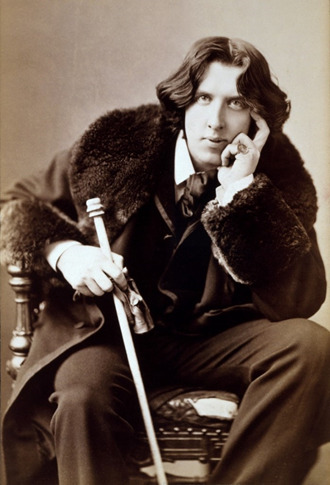
This is one of the reasons that the year 1895 is so important; it was the year of Oscar Wilde’s trial and imprisonment for gross indecency, and this is clearly a preoccupation of Sherlock’s consciousness in TFP with its constant Wilde references, suggesting that his MP’s choice of 1895 wasn’t coincidental. Much was made during TAB setlock of a newspaper that said ‘Heimish The Ideal Husband’, Hamish being John’s middle name and An Ideal Husband being one of Wilde’s plays. But the Vincent Starrett poem, although nostalgic and ostensibly lovely, for tjlcers and it seems for Sherlock himself symbolises something much more troubling. Do search up the full poem, but for now let’s look at the final couplet.
Here, though the world explode, these two survive
And it is always 1895
‘Though the world explode’ is a reference to WW1, which is coming in the final Sherlock Holmes story, and which is symbolised by Eurus – in other chapters, I explain why Eurus and WW1 are united under the concept of ‘winds of change’ in this show. Sherlock and John survive the winds of change – except they don’t move with them. Instead, they stay stuck in 1895, the year of ultimate repression. 2014!Sherlock going back in his head to 1895 and repeating how he met John suggests exactly that, that nothing has changed but the superficial, and that emotionally, he is still stuck in 1895.
Others have pulled out similar references to Holmes adaptations he has to push through in TAB – look at the way he talks in sign language to Wilder, which can only be a reference to Billy Wilder, director of TPLoSH, the only queer Holmes film, and a film which was forced to speak through coding because of the Conan Doyle estate. That film is also referenced by Eurus giving Sherlock a Stradivarius, which is a gift given to him in TPLoSH in exchange for feigning heterosexuality. Eurus is coded as Sherlock’s repression, and citing a repressive moment in a queer film as her first action when she meets Sherlock is another engagement by Sherlock’s psyche with his own cinematic history. My favourite metatextual moment of this nature, however, is the final scene of TFP which sees John and Sherlock running out of a building called Rathbone Place.

Basil Rathbone is one of the most iconic Sherlock Holmes actors on film, and Benedict’s costume in TAB and in particular the big overcoat look are very reminiscent of Rathbone.
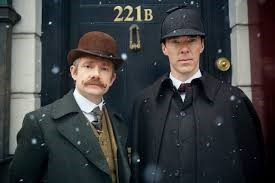

Others have discussed (X) how the Victorian costume and the continued use of the deerstalker in the present day are images of Sherlock’s public façade and exclusion of queerness from his identity. It’s true that pretty much every Holmes adaptation has used the deerstalker, but the strong Rathbone vibes that come from Ben’s TAB costume ties the 1895 vibe very strongly into Rathbone. To have the final scene – and hopefully exit from the EMP – tie in with Sherlock and John running out of Rathbone Place tells us that, just as Sherlock cast off the deerstalker at the end of TAB (!), he has also cast off the iconic filmic Holmes persona which has never been true to his actual identity.
Waterfall scene
The symbol of water runs through TAB as well as s4 – others have written fantastic meta on why water represents Sherlock’s subconscious (X), but I want to give a brief outline. It first appears with the word ‘deeper’ which keeps reappearing, which then reaches a climax in the waterfall scene. The idea that Sherlock could drown in the waters of his mind is something that Moriarty explicitly references, suggesting that Sherlock could be ‘buried in his own Mind Palace’. The ‘deep waters’ line keeps repeating through series 4, and I just want to give the notorious promo photo from s4 which confirms the significance of the motif.

This is purely symbolic – it never happens in the show. Water increases in significance throughout – think of Sherlock thinking he’s going mad in his mind as he is suspended over the Thames, or the utterly nonsensical placement of Sherrinford in the middle of the ocean – the deepest waters of Sherlock’s mind. Much like the repetition of cases hinting that EMP continues, the use of water is something that appears in the MP, and it sticks around from TAB onwards, a real sign that we’re going deeper and deeper. I talk about this more in the bit on TFP, but the good news is that Sherrinford is the most remote place they could find in the ocean – that’s the deepest we’re going. After that, we’re coming out (of the mind).
Shortly after TAB aired, I wrote a meta about the waterfall scene, some of which I now disagree with, but the core framework still stands – it did not, of course, bank on EMP theory. You can find it here (X), but I want to reiterate the basic framework, because it still makes a lot of sense. Jim represents the fear of John’s suicide, and Jim can only be defeated by Sherlock and John together, not one alone – and crucially, calling each other by first names, which would have been very intimate in the Victorian era. After Jim is “killed”, we have Sherlock’s fall. The concept of a fall (as in IOU a fall) has long been linked with falling in love in tjlc. Sherlock tells John that it’s not the fall that kills you, it’s the landing, something that Jim has been suggesting to him for a while. What is the landing, then? Well, Sherlock Holmes fell in love back in the Victorian era, symbolised by the ultra repressive 1895, and that’s where he jumps from – but he lands in the 21st century. Falling in love won’t kill him in the modern day. What I missed that time around, of course, was that despite breaking through the initial Victorian layers of repression, he still dives into more water, and when the plane lands, it still lands in his MP, just in a mental state where the punishment his psyche deals him for homosexuality is less severe. This also sets up s4 as specifically dealing with the problem of the fall – Sherlock jumps to the 21st century specifically to deal with the consequences of his romantic and sexual feelings. There’s a parallel here with Mofftiss time jumping; back when they made A Study in Twink in 2009, there was a reason they made the time jump. Having Sherlock’s psyche have that touch of self-awareness helps to illustrate why they made a similar jump, also dealing with the weight of previous adaptations.
Women
I preface this by saying how incredibly uncomfortable I find the positioning of women as the KKK in TAB. It’s a parallel which is unforgivable; frankly, invoking the KKK without interrogating the whiteness of the show or even mentioning race is unacceptable. Steven Moffat’s ability to write women has consistently been proven to be nil, but this is a new low. However, the presence of women in TAB is vital, so on we go.
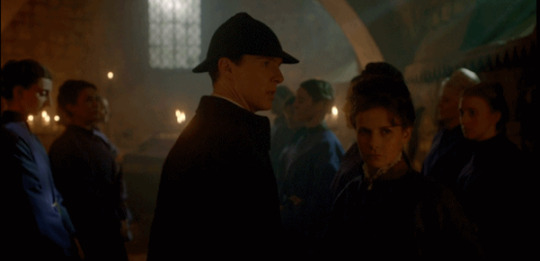
TAB specifically deals with the question of those excluded from a Victorian narrative. This is specifically tied into to those who are excluded from the stories, such as Jane and Mrs. Hudson. Mrs. Hudson’s complaint is in the same scene as John telling her and Sherlock to blame the problems on the illustrator. This ties back to the deerstalker metaphor which is so prevalent in this episode; something that’s not in the stories at all, but a façade by which Holmes is universally recognised and which as previously referenced masks his queerness. Women, then, are not the only people being excluded from the narrative. When Mycroft tells us that the women have to win, he’s also talking about queer people. This is a war that we must lose.
I don’t think the importance of Molly in particular here has been mentioned before, but forgive me if I’m retreading old ground. However, Molly always has importance in Sherlock as a John mirror, and just because she is dressed as a man here doesn’t mean we should disregard this. If anything, her ridiculous moustache is as silly as John’s here! Molly, although really a member of the resistance, is able to pass in the world she moves in in 1895, but only by masking her own identity. This is exactly what happens to John in the Victorian era – as a bisexual man married to a woman, he is able to pass, but it is not his true identity. More than that, Molly is a member of the resistance, suggesting not just that John is queer but that he’s aware of it and actively looking for it to change.
I know I was joking about Molly and John’s moustaches, but putting such a silly moustache on Molly links to the silliness of John’s moustaches, which only appear when he’s engaged to a woman and in the Victorian era. He has also grown the moustache just so the illustrator will recognise him, and Molly has grown her moustache so that she will be recognised as a man. In this case, Molly is here to demonstrate the fact that John is passing, but only ever passing. Furthermore, Molly, who is normally the kindest person in the whole show, is bitter and angry throughout TAB – it’s not difficult to see then how hiding one’s identity can affect one’s mental health. I really do think that John is a lot more abrasive in TAB than he is in the rest of the show, but that’s not the whole story. Showing how repression can completely impair one’s personality also points to the suicidal impulses that are lurking just out of sight throughout TAB – this is what Sherlock is terrified of, and again his brain is warning him just what it is that is causing John this much pain and uncharacteristic distress.
This is just about the loosest sketch of TAB that could exist! But TAB meta has been so extensive that going over it seems futile, or else too grand a project within a short chapter. Certain theories are still formulating, and may appear at a later date! But what this chapter (I hope) has achieved has set up the patterns that we’re going to see play out in s4 – between the metatextuality, the waters of the mind and the role of Moriarty in the psyche, we can use TAB as a key with which to read s4. I like to think of it as a gift from Mofftiss, knowing just how cryptic s4 would be – and these are the basic clues with which to solve it.
That’s it for TAB, at least in this series – next up we’re going ever deeper, to find out exactly who is Eurus. See you then?
#tjlc#emp theory#thewatsonbeekeepers#my meta#meta#mine#chapter four: it is always 1895#vincent starrett#mofftiss#1895#bbc sherlock#johnlock#tjlc is real
80 notes
·
View notes
Text
‘Now and Then’ - current state of play
My film is a re-imagining of the site of Brighton General Hospital next to my home. Until around 70 years ago, a workhouse operated on the site (for details, see: Gardner, J, (2012) A History of the Brighton Workhouses). Aspects of the austere workhouse are still evident on the site today. I began to think about the stories of the residents of the workhouse – what did they have to endure? With this in mind, I bought the above book by a local author about the history of workhouses in Brighton.
I have always been fascinated by the idea that traumatic events in a particular location can be recorded and replayed at a later time in history and that this might be a basis for ghosts and hauntings – for example, in the blockbuster, Poltergeist, and the BBC drama from the 1970’s The Stone Tapes (Sasdy, 1972). This is one of the key concepts behind the film.
After a lot of thought, I settled on the story of the workhouse being told by a single woman, Agatha, whose infant child was taken from her illegally and sold to a rich couple living in Brighton. This is a variation on the common Victorian practice of unmarried women being compelled to give their children to a foundling home.
The film starts with Aggie telling her story in largely neutral terms and comparing the workhouse and the site’s positive use today as a hospital, but it climaxes with Aggie screaming with the loss of her child, and we see that she is a tormented spectre.The film ends with her anguish fading into a sign on the present site, promoting a nursery for infant children.
The film will be around 5-6 minutes long and will consist of edited original footage taken on the site in the present day. The film will be treated with video effects to alter the pacing, colour and atmosphere of the original footage. I have asked for a drama-trained friend to narrate the film as Aggie and will be using original and library sound effects and music motifs, or possibly drones to punctuate the soundtrack.
Now and Then – influences from other artists
1. Brian Percival - About a Girl
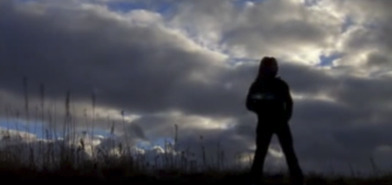
Female voice-over revealing a terrifying truth about motherhood at the end of the film. This film gives a cold dead feeling inside from the casual yet downcast demeanor as the leading character talks about her dysfunctional life and especially the ending, where the girl is revealed to have secretly miscarried a baby and we see her dump it into the canal (“I’ve become good at hiding things”). Both my film and About A Girl attempt to humanise the female main character outside of their tragedies.
2. Tobe Hooper - director of Poltergeist Paranormal activity centred around past events and the presence of aggrieved spirits. This was a film that made an impact on me from its non-stop tension, even before the presence of the supernatural becomes apparent. Tobe Hooper, ever since creating The Texas Chainsaw Massacre (1974) has achieved many awards, and after this film, it is easy to see why. It also has a similar plot to my initial idea for my film - where a great wrong done in the past creates a ‘haunting’ by aggrieved spirit(s)..
3. Peter Sasdy – Director of The Stone Tape (1972)

The original idea from the film was stones “recording” traumatic events from the past. While the current draft has drifted away from this concept, it still lives on with how Agatha remembers everything about the past as if she died yesterday, despite the superficial veneer of the current day hospital. However, Agatha is a real soul though in my film.
4. David Lynch - Eraserhead, The Elephant Man His black and white films – particularly The Elephant Man In the latter, view of Victorian England shot in black and white featuring cruelty and time-specific sounds, sights and atmospheres. The film always seems to have a sense of foreboding, even when the scene is uneventful, and with a deeply engaging soundtrack. Eraserhead will always always be an influence due to its deliberate disturbing monochrome style, investigation of altered perception and the anxieties of parenthood.
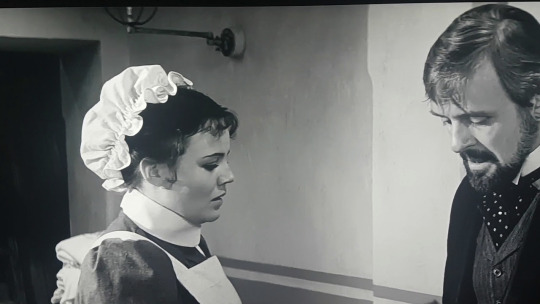

5. James Gardener- Author of: A Complete History Of Brighton Workhouses A detailed and easy-to-understand book centred around the original workhouse in my area. It includes the Brighton General Hospital Site. It helped give a real-life grounding to my supernatural tale.
6. Richard Boden - director of the Blackadder series 4 finale, Goodbyeee The series as a whole has very little to do with my film, but this is a powerful episode whose fade-out ending and closing-sound inspired the cross-dissolve effects and soundscape in my film - coincidentally both are centered with the cruelty of the past and atmospheric sound. Present and past merge at this point. One of the most popular scenes in TV drama/comedy and understandably so too.
7. Piotr Obal – various films and still images Obal is an independent artist who works with art, music and still photography. Occasionally, he teaches youths how to work at the computer like me (!) when he was helping out with an arts award I was studying for. Below is one of his images that has been an influence on me and the film. I love his Photoshop collages and the wonderful images he posts from his native Poland.

Work by Piotr Obal
8. Nalini Malani- for her immersive installations, ‘disgraced’ women under partiarchy, history and mythology, miscarriages of justice. I found out about Malini when I was writing my essay on her work in the Diversity module: what started off as just finding out about an artist for the sake of my writing became a long-lasting admiration and inspiration from an artist who not only knows where she is coming from (from her upbringing hugely affected by India and Pakistan’s partition) but willingly sticks her neck out for those oppressed by society and history, and confidently shows her creations to the world. A particularly relevant aspect of her work is her use of the supernatural and mythology stories and myths to highlight aspects of women’s oppression throughout history.
9. Chris Butler- director of ParaNorman A key influence, supposedly aimed at children, I used the same of the spectre in this moving animation, and I was influenced by its themes about the cruelties of humanity and how we “moved on”. The spectre is a ghost of a falsely accused of being a ‘witch’ who wreaks her revenge on those who persecuted her.
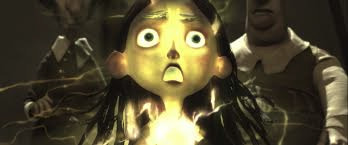
It was also a strong influence that is more powerful at its climax and twist. In-depth look at how prejudice destroys lives that are never regained - even death provides no relief. Butler is a part of Studio Laika, creating animated films that go beyond the norm.
10. Jacqueline Wilson - the writer of the Hetty Feather trilogy and other such Victorian novels such as Clover Moon.

A part of Jacqueline’s writings is her commentary about how unjust the past could be compared to today: even though her protagonists speak in ways that were customary to Victorians, she keeps them relatable the same way she keeps her modern-day protagonists relatable. The writing style of her books inspired certain characteristics of Agatha’s narration, because it was easy to understand yet engaging.
11. David Lean - Director of Great Expectations (1946) This film, based on the Dickens book, also brought to mind the cruel period of the Victorian era, and the acting and emotions continued that spirit and my inspiration around my project. I love that it is black and white as well as dialog-centred - I particularly like the formal style of speech - even to express negative emotions- for example:
“Let me point out the topic that in London it is not the custom to put the knife in the mouth for fear of accidents. It's scarcely worth mentioning, Only it's as well to do as others do”.
Miss Havisham, an almost ghostly older woman, in a similar way to Agatha cannot move beyond the terrible wrong done to her - she was left at the alter and devoted her life to training her adopted daughter, Estella, to get revenge on men.I use s similar obsessive, sing-minded hatred to motivate Agatha.

12. Sunset Boulevard (1950)
This film involve a man becoming the object of affection of a former silent movie star, Norma Desmond who overtake his life little by little until she kills him. Norma suffered with the times when silent movies went out of fashion and she is unable to move on, alone in her great house: people told Norma that she had no value and it had an impact on her psyche. She loses all sanity when arrested for killing Joe Gillis as she believes she is back in show business. The film also explores facades; Norma may live a glamorous if not lonely life, but her mental state torments her, like Aggie has with hers as she wanders around the hospital site driven ‘mad’ with grief and anger.
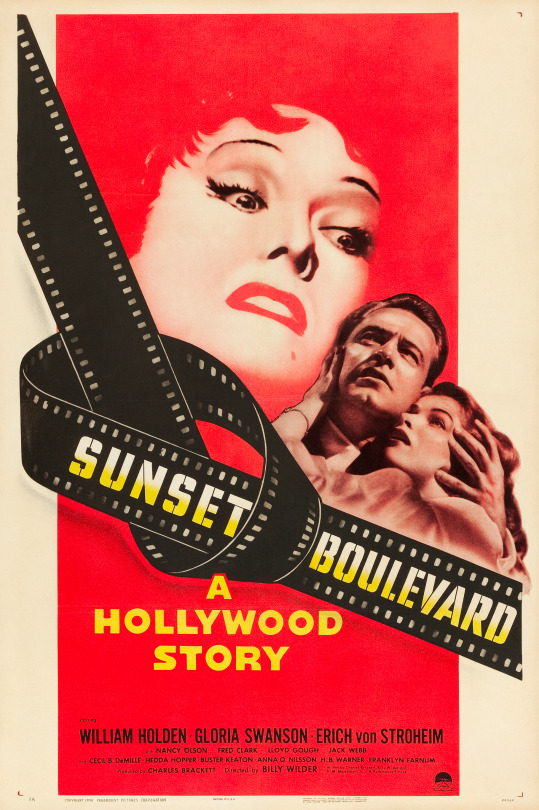
13. R D Laing: ‘anti-psychiatrist’
'Here was someone explaining madness, showing how the fragmentation of the person was an intelligible response to an intolerable pressure”
Quote from: https://www.theguardian.com/commentisfree/2013/aug/25/rd-laing-aaron-esterson-mental-illness
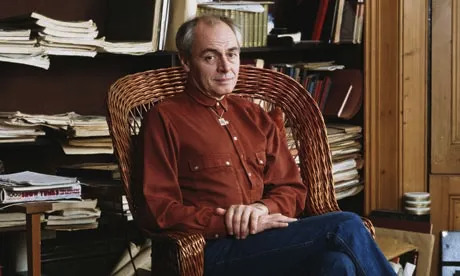
In discussing the concept of my film with a member of my family, I was directed to the psychiatrist/anti-psychiatrist, RD Laing. In the 1960’s and early 1970’s Laing wrote about how a person’s so-called ‘mad’ behaviour was in fact intelligible when their entire situation and experience was taken into account. He and other writers (like David Cooper) talked about the concept of the ‘double-bind’ where a person’s opportunity to make a decision to resolve the way they were being treated was blocked – perhaps by a member of their family saying that it was not in their personality to be assertive or angry.
This reminded me very much of Agatha; she tries to express her outrage at the great wrong done to her, but she is judged as unworthy and undeserving, so the wrong is seen as justified and her punishment for being the ‘low-life’ who would have a child and have to live in a workhouse. It is circular – she is treated badly because she deserves to be treated badly and so this means that her hatred and insanity brings the great wrong up herself.
Laing is largely forgotten today, but his ideas resonate with certain ideas in feminism and anti-racism. ‘Gaslighting’ is everywhere, both back then and now.
https://www.youtube.com/watch?v=9NnBonXPLJM
3 notes
·
View notes
Note
Dragon of the yuyan any of the oneshots or overall what was THAT scene?
“That” Moment for Dragon of the Yuyan
WARNING: SPOILERS FOR PUBLISHED FICS
In Order of Series:
Anchor Point: When Zuko comes face-to-face with the Archers for the first time. MuffinLance had written it from the Archers’ POV, but I wanted to see Zuko’s take on it.
Conflict of Interest: Basically the entire thing, since it’s pretty much only that one scene, but especially that exact moment when Toshiaki realizes that his country’s leader is a monster. This is a guy who who at that point had spent fifteen years drinking the Fire Lords’ (Azulon and Ozai) kool-aid but is otherwise a pretty decent man who can’t even fathom hurting a child, and he’s suddenly presented with irrefutable proof that not only can the man he follows without question fathom such an act, he actually did it in front of his entire court. I really wanted to explore what it looked like when a regular Fire Nation joe with no real ties to Ozai other than the loyalty of a soldier to his sovereign had that kind of realization.
Melee: Definitely that moment when Zuko confronted Zheng. I didn’t really know what exactly was going to happen, but I knew that Zuko had to lose his temper in classic Zuko fashion. I kinda also wanted Zuko to show off his dao by getting cornered by a humiliated Zheng, but unfortunately that scene didn’t make the final cut.
Camaraderie: This was supposed to be what the first two chapters of Stealth ended up being, then I got to the moment where Zuko is standing in front of the calendar and sees that it’s been exactly a year since the Agni Kai and I went “welp, looks like I’m writing angst instead”. Once I had figured out what was going on, THAT scene turned out to be Ryoichi’s apology in the dorm, because I wanted to really drive home the idea that Ryoichi is radically different from every single firebending master Zuko had studied under up to that point (with the exception of Iroh).
Stealth: Honestly, this entire fic was THAT scene for me, because I absolutely love the Blue Spirit aspect of Zuko’s character and I really wanted to play with it. However, a few scenes stand out as THAT scene—
In Chapter 1 The Prank, Zuko and Kai finding the Blue Spirit mask and coming up with the idea to use it to prank Zheng
In Chapter 2 The Dare, the ENTIRE sequence with the tank, from Jiyoti catching Zuko and Kai arguing on top of it to the entire Tank Corps staring up at it on the roof. ROOF TANK
In Chapter 3 The Injustice, both the scene with Zuko eavesdropping on the soldiers and finding out about the 41st’s families not getting their benefits and the scene with him ninja’ing his way into the office for a snoop.
Mission: The end, of course. This entire fic was building up to Zuko witnessing that event and his immediate reaction to it.
Debrief: So I had a really hard time with this one, not only due to the stress of my work routine taking a complete 180 (not being able to take my beans ANYWHERE along with the 4 year old suddenly realizing that wait Mommy’s not leaving the house but the nanny is still here what is going on??? I don’t like this one bit so I’m going to act out because I don’t understand what’s happening is NO PICNIC), but also due to the fact that for a really long time, I didn’t actually have a THAT scene for Debrief. It wasn’t until I read a comment on Conflict of Interest that it finally came to me, and thus THAT scene in Debrief was Toshiaki telling Zuko that he knows Zuko’s true identity. I also really liked how I ended it.
Rebellion: Just like with Stealth, this entire fic is pretty much THAT scene, especially in terms of the series as a whole. The opening line has been rattling around in my brain since before I posted Reconnaissance. I really, really love the last flashback with Atsuko, though. I’ve had that little detail about her in my notes since I developed her character, and it was so, so hard not to just have her monologue about it.
Alliance: In the first chapter the warrior, THAT scene was definitely Sokka and Zuko’s hike through the woods where Sokka was trying to puzzle out Zuko’s language. I love Nerdy!Sokka so much, because it’s such a departure from what his character originally presents as, which is a meatheaded jock. That’s why The Northern Air Temple is one of my favorite Book 1 episodes, just because of the spotlight it gives Sokka.
Pretty much the entirety of the second chapter the waterbender was THAT scene, because half the point of introducing Zuko so early in the timeline is to see how Katara would react to him without all of their canon history getting in the way. I had always intended for her to help Zuko cut his hair, though. Not only am I a super sucker for Zuko’s Book 3 mop, but I think a MASSIVE show of trust from him would and did go a long way with gaining Katara’s trust, even subconsciously.
Nemesis: Once again, this entire fic is THAT scene, specifically of the question, “What would happen if Zuko and Jet were to meet in Jet?” Someone on Tumblr sent me an ask, and my brain caught on fire, and I produced the first draft of Nemesis in about four or five nonconsecutive hours of writing, which is about the fastest I’ve ever gone from beginning to end on a fic. Maybe someday I’ll flesh it out some more, but not any time soon.
Reconnaissance: Definitely the first few paragraphs, which is Zuko’s immediate reaction to Ba Sing Se. It’s pretty much my gut reaction to New York City, which I visit a lot because my grandparents live there. It takes me a few minutes to acclimate every time, and I imagined a Zuko who is used to the wilderness or to much smaller settlements would go absolutely feral in a city the size and density of BSS.
Hope you enjoyed! After the next five or so installments of the series go up, I’ll put up an update of this post with THOSE scenes!
26 notes
·
View notes
Text
The Most Affecting Films of This Past “Year”
While gazing into the abyss of 2020, I don’t know if that hellmouth gazed back into me as Nietzsche envisioned it, because, like many, I fought this year’s monster in my sweats and talking to the walls while I scraped the barrel of Netflix for SOMETHING NEW to watch.
But I damn sure threw out any organizing rules for what qualifies as a “film.”
When called a “limited series,” long-form storytelling becomes cinema. And there shall be no argument. Thanks to The Queen’s Gambit and company, a number of these “films” by any-other-name delivered and found their way here.
Plus, it’s now a good stretch into 2021 and the very-arbitrary rules of our Time Before the Coronapocene are being met with a weary “Fuck it.”
Then there’s the possibility, as you discover when screening Arrival, that time doesn’t work the way we think it does...
“People like us who believe in physics know that the distinction between past, present and future is only a stubbornly persistent illusion.”
- Albert Einstein
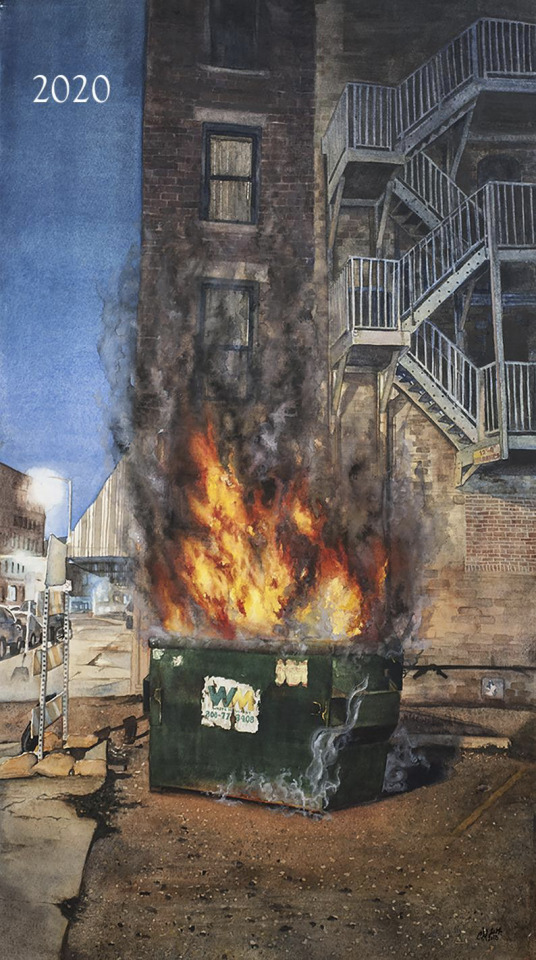
HONORABLE MENTIONS
The Explicitly Genre, the Dark-Hearted, & the B Movies
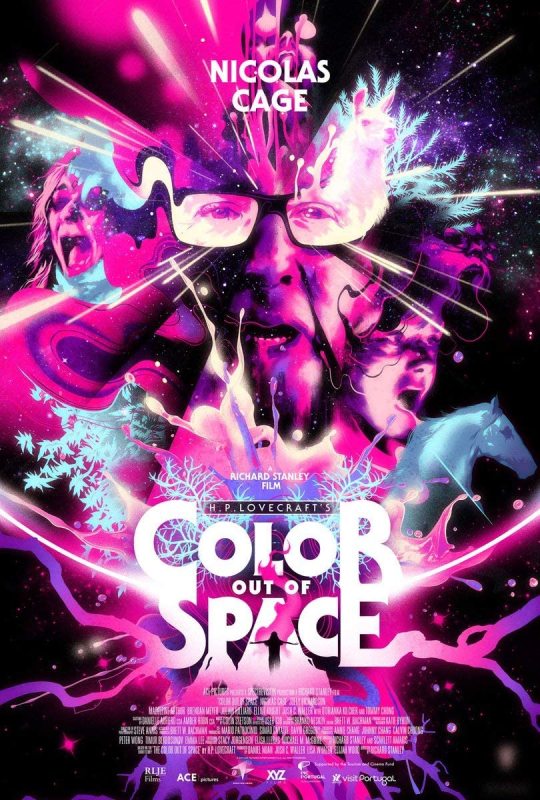
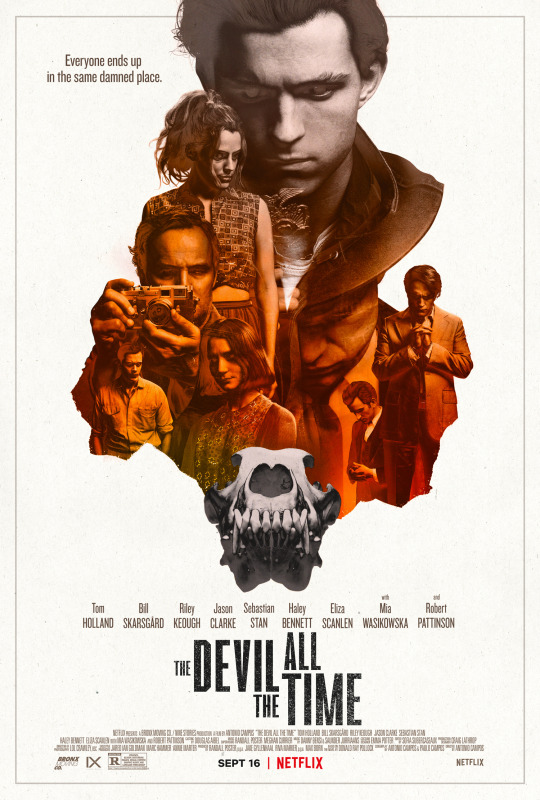
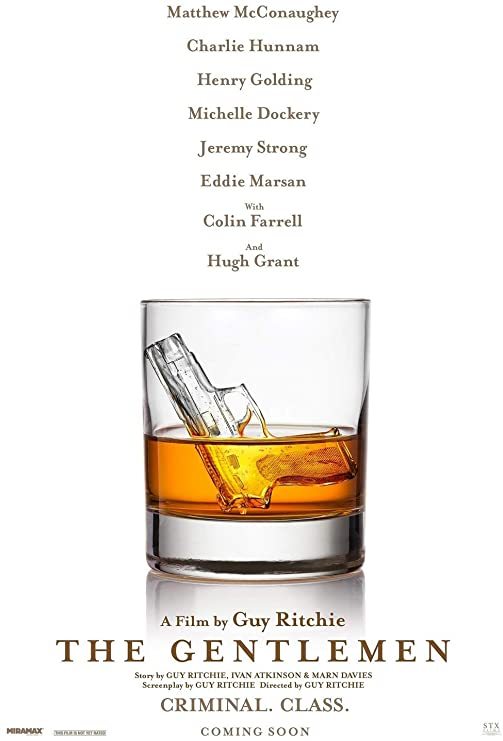

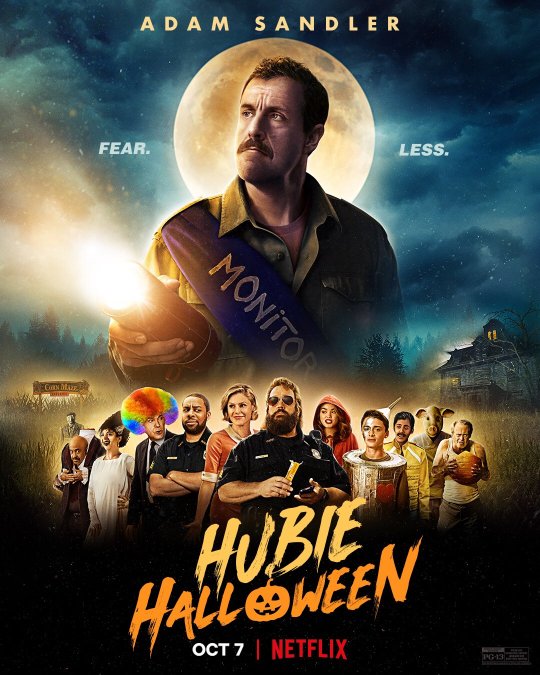
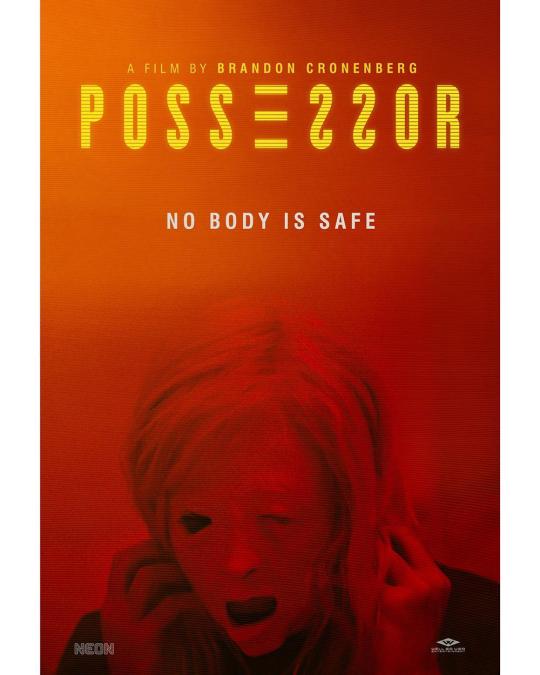
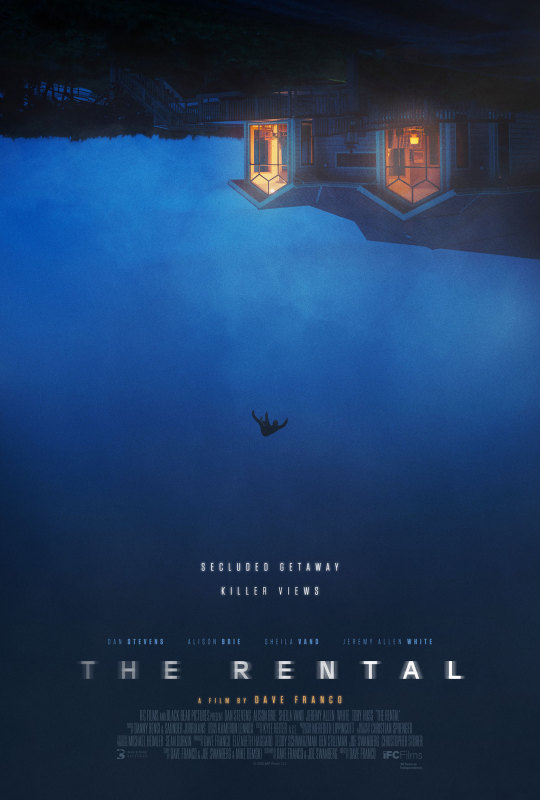
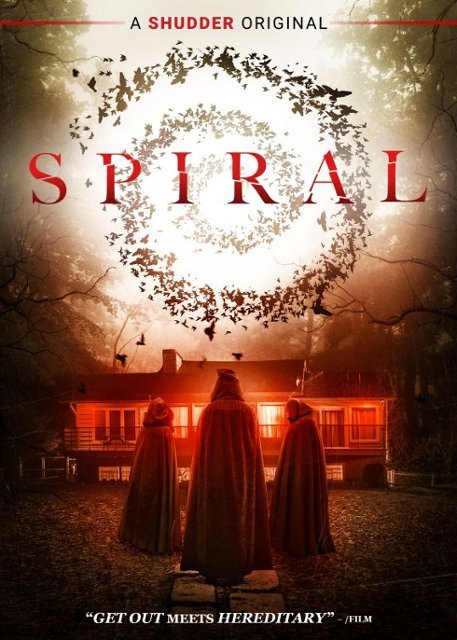

The Other Ones
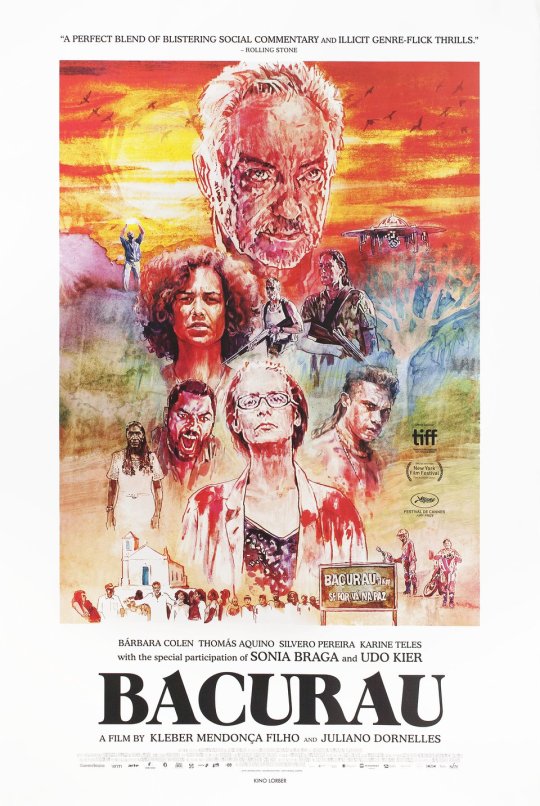

Doctor Sleep Director’s Cut*
(*released in 2020)

The Godfather Coda: The Death of Michael Corleone*
(*yes, this was technically released 30 years ago but Coppola’s new cut works like a new film)
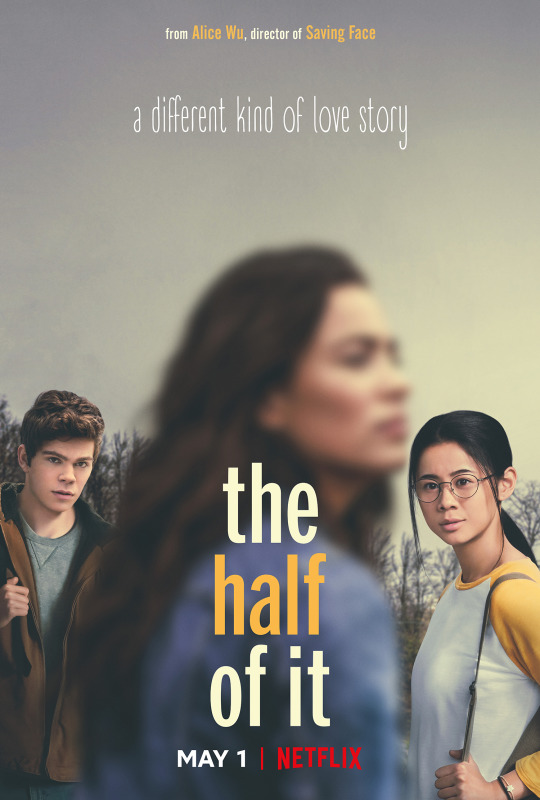

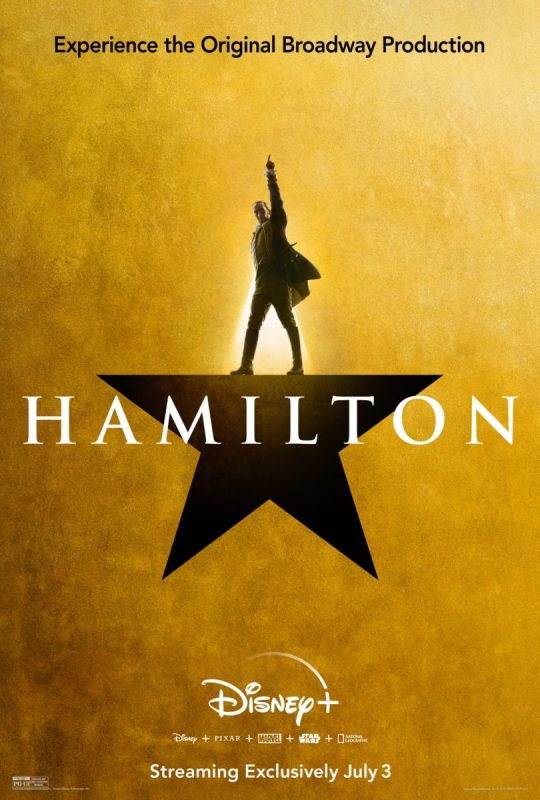
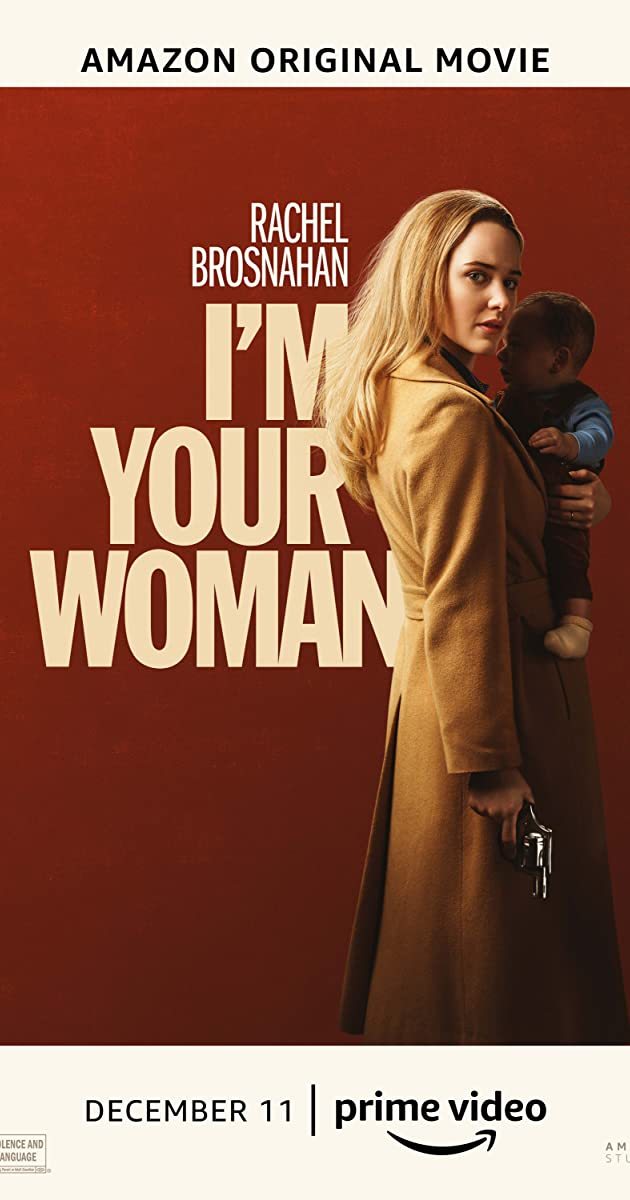
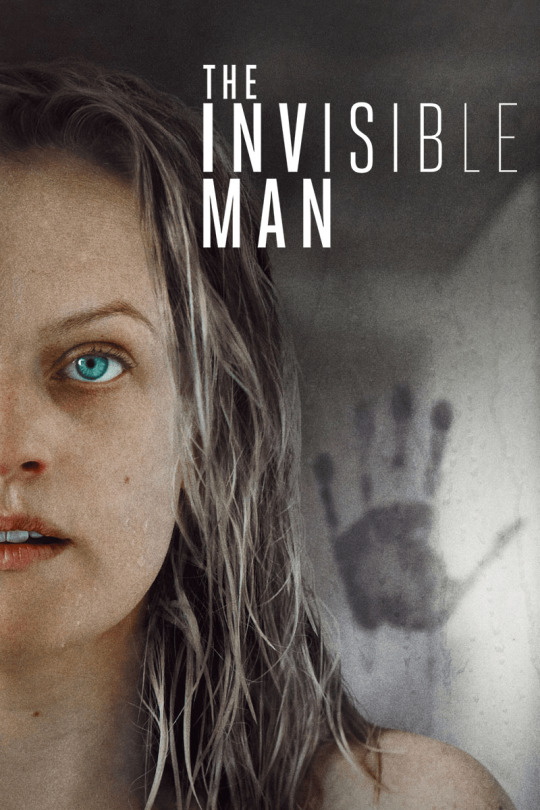
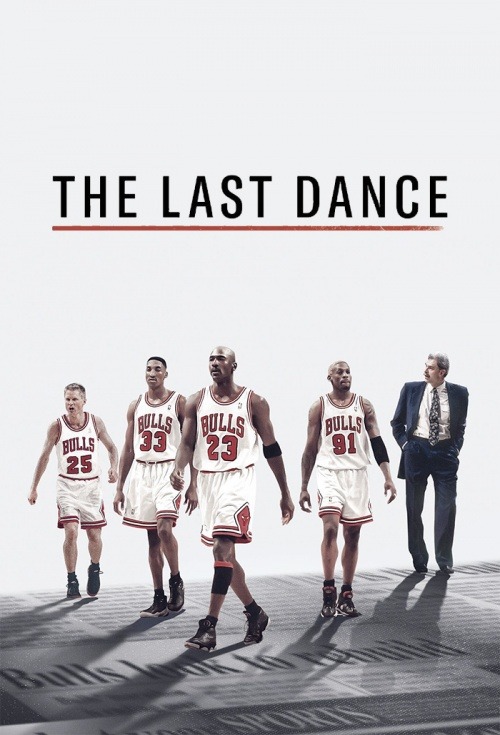
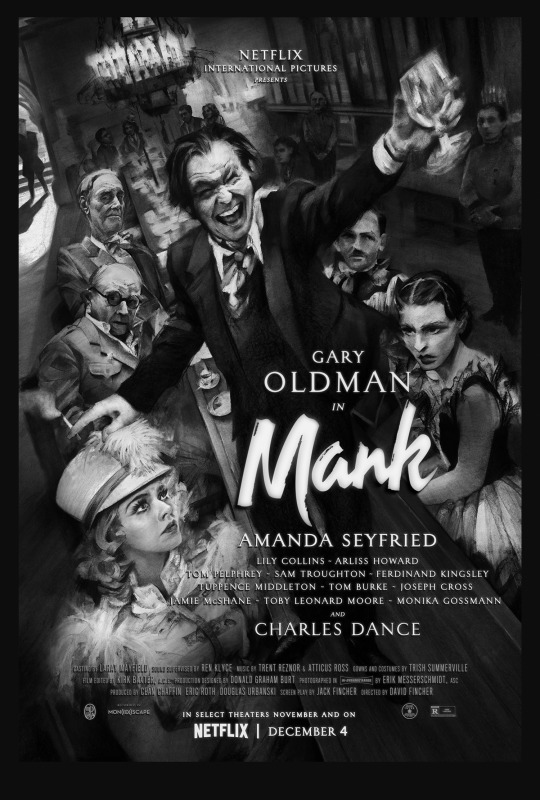
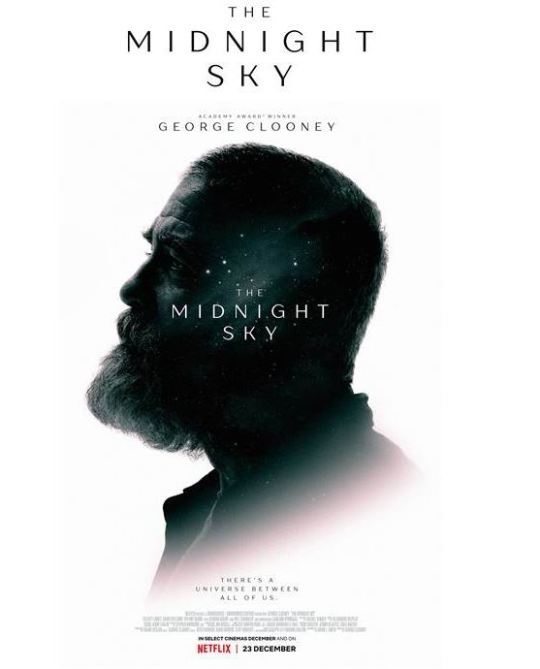

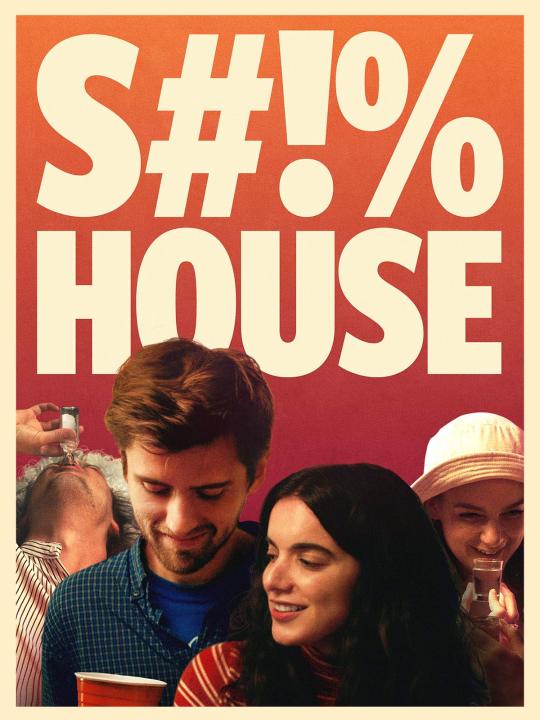
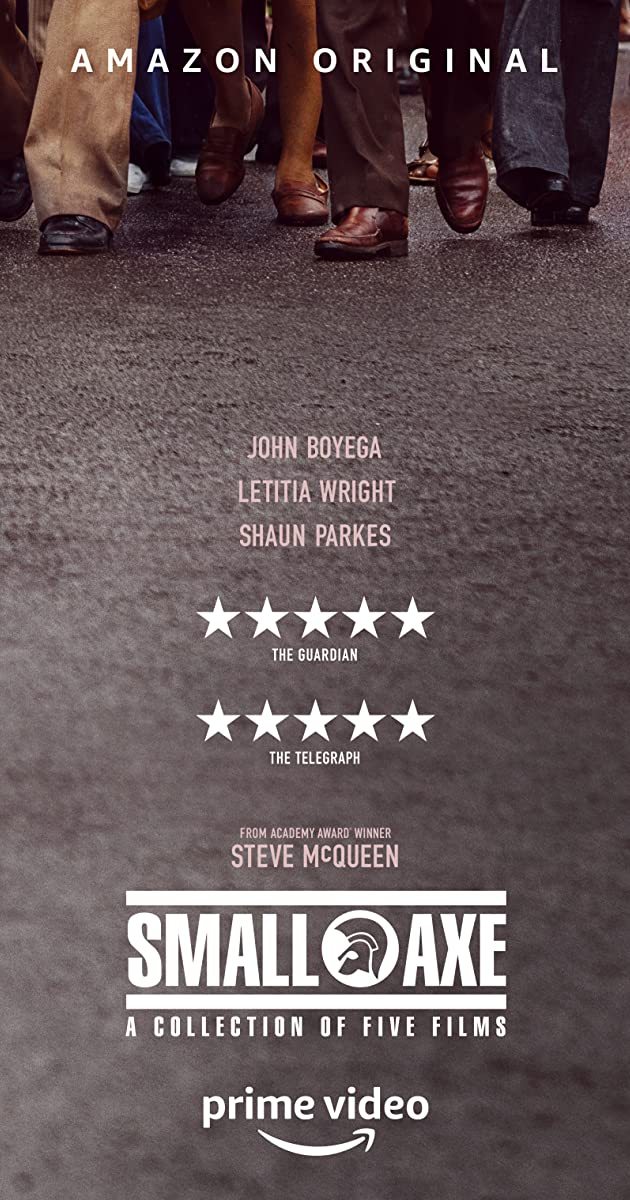
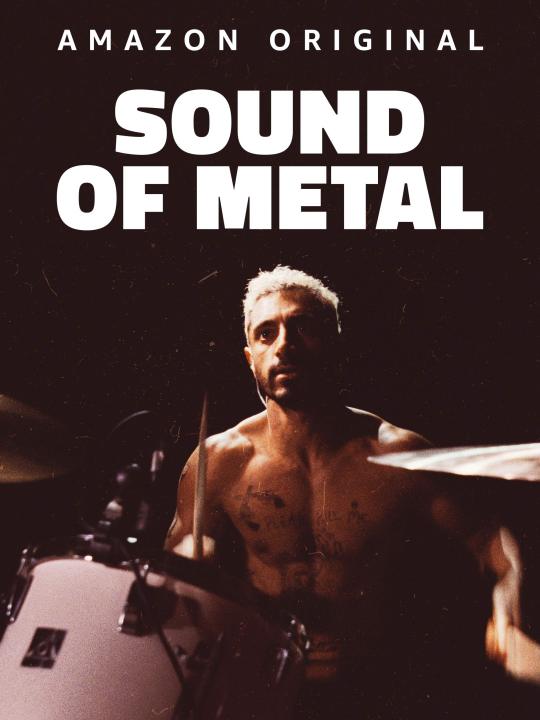

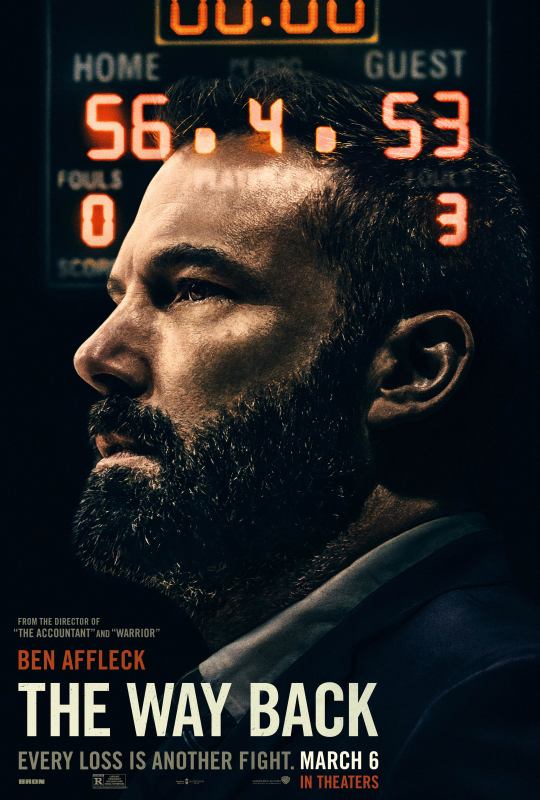
IT GOES TO ELEVEN
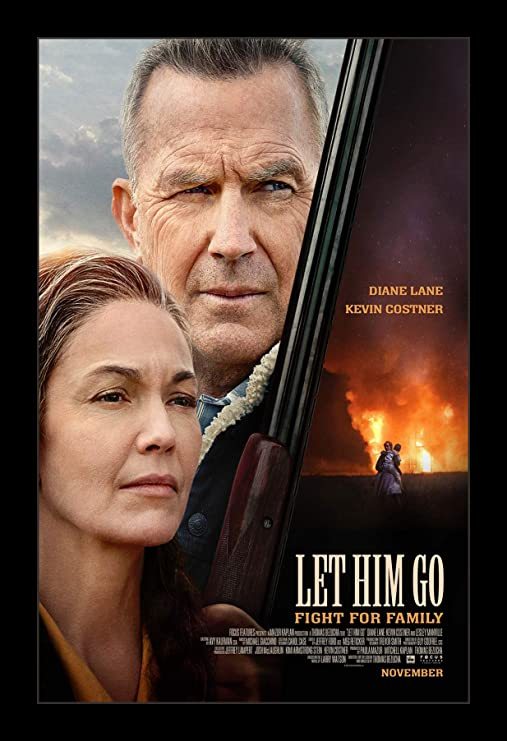
11. Let Him Go
Give me Costner and Lane in a neo-western all day. This is best viewed without knowing anything prior and far more somber than expected.
Loved the gender role-reversal as Lane dons the ten-gallon attitude typically worn by a male character.
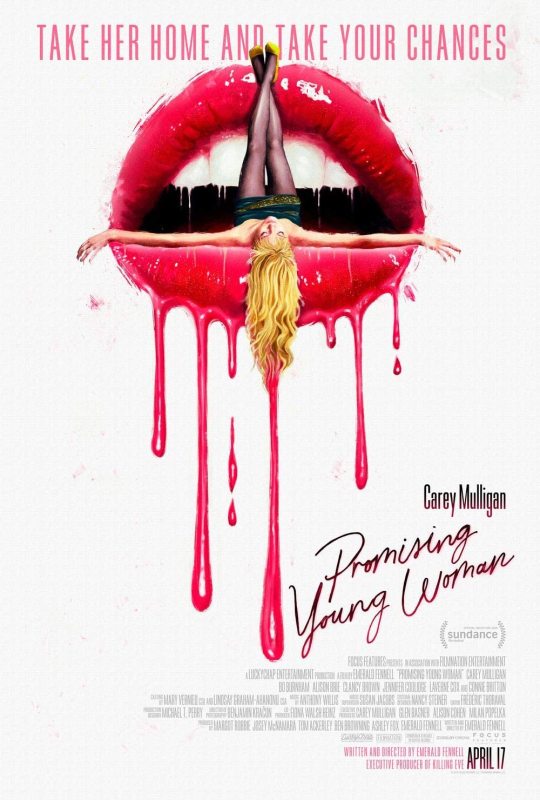
10. Promising Young Woman
Sadly spot-on in its enraged message. Dark, dark, dark, dark, dark comedy(?).
And not for everyone.
But if you’re game, then this furious blast of filmmaking will be appreciated. Notice the foreshadowed symbolism spattered in neon and pink throughout (Saint Cassandra?) and the ending works. Mulligan being transcendent as always here.
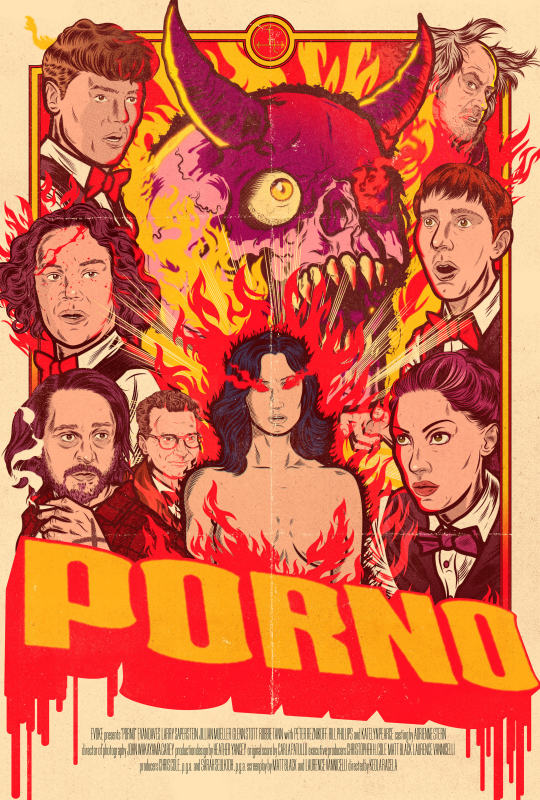
9. Porno
Mileage will vary depending on one’s tolerance for/appreciation of severed male genitalia jokes. Being 14 years old at heart, I laughed myself hoarse.
A throwback with intelligent subtext about fundamentalist religious norms of repression and the dangers of a sex-negative culture.
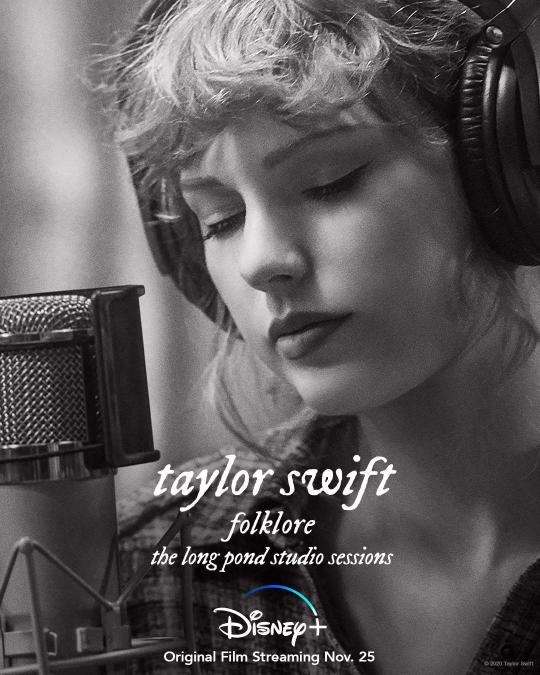
8. Taylor Swift - Folklore: The Long Pond Studio Sessions
The album = classic already.
The documentary = downright magical.
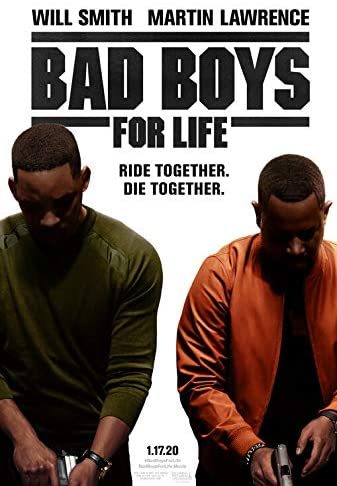
7. Bad Boys For Life
As an old guy who also has some gray in the beard, I love how far they lean confidently into the old guy-ness. Been riding with these bad boys for 25 years now.
Just take my money already for the next installment.
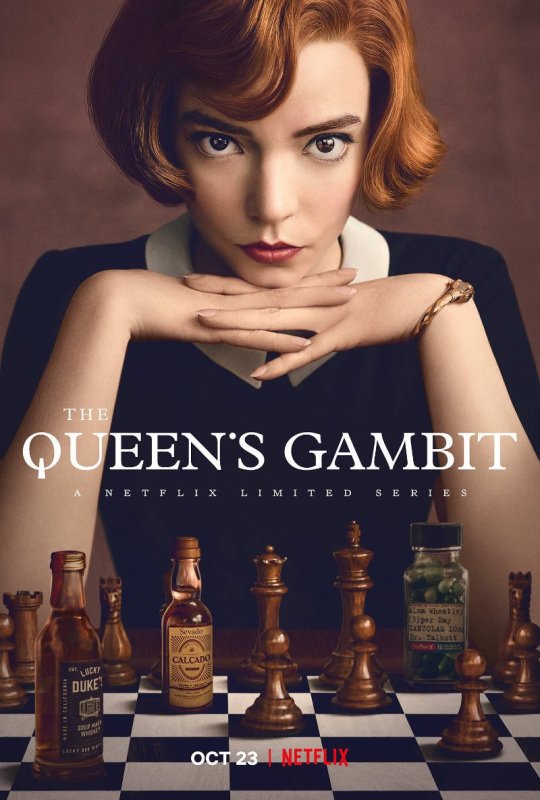
6. The Queen’s Gambit
Cinema-as-a-novel. Sports movie as character study. Evidence that when you give a writer movie-budget money and trust their vision, you can get a hit. And a last episode that brings ALL THE JOY!
Bravo, Netflix.
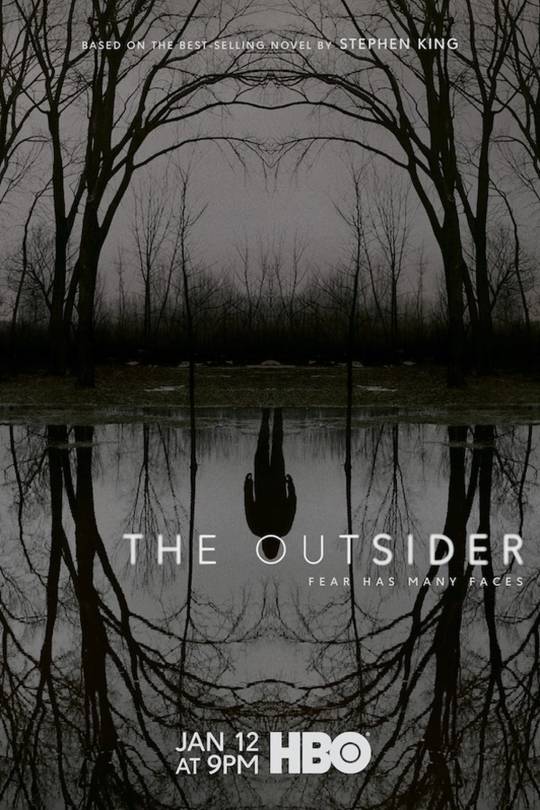
5. The Outsider*
(*cancelled after one season so I’m calling it a “limited-series” and thus a film)
Just the weird and dark adaptation of King that fits with HBO and excises what I assume to be elements that work better on the page.
Its tone haunts and elliptical editing rewards patience, and Cynthia Erivo should be in everything.
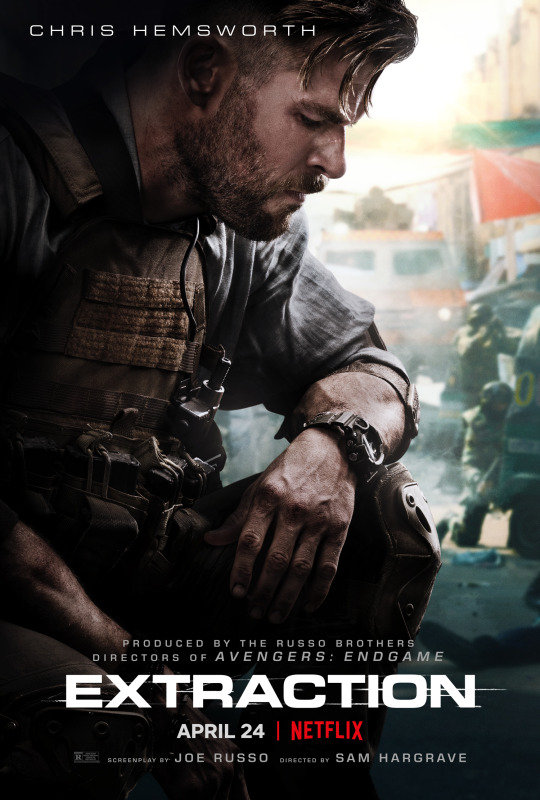
4. Extraction
As subtle as having a lead character named Tyler Rake kill a dude with a rake -- which definitely happens here. On paper, its armature of a suicidal gunslinger with a weary soul seeking redemption in John Wick’s stylistic shadow shouldn’t work.
But grit and kinetic craft and heart tugging father and son parallels and an impressive look at what constitutes masculine “courage” and what masquerades as it under the guise of violence give zero shits about “shouldn’t.”
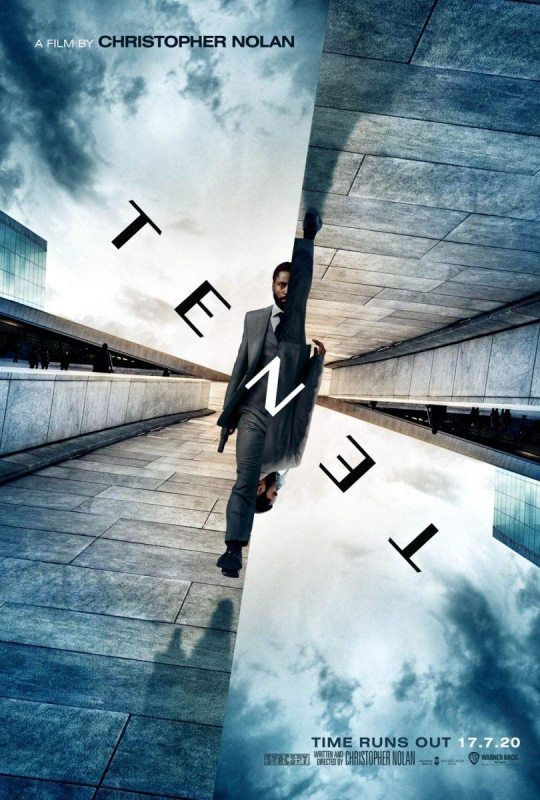
3. Tenet
“Don’t try to understand it. Feel it.”
“.ti leeF .ti dnatsrednu ot yrt t’noD”
A friendship love story at its core that’s going to live as an artifact and defy time, which is appropriate.
Branagh cooks the world’s largest ham and does so brilliantly.
So fun if you don’t try to play chess with Nolan (you’ll lose) and simply let it rip into the space-time continuum.
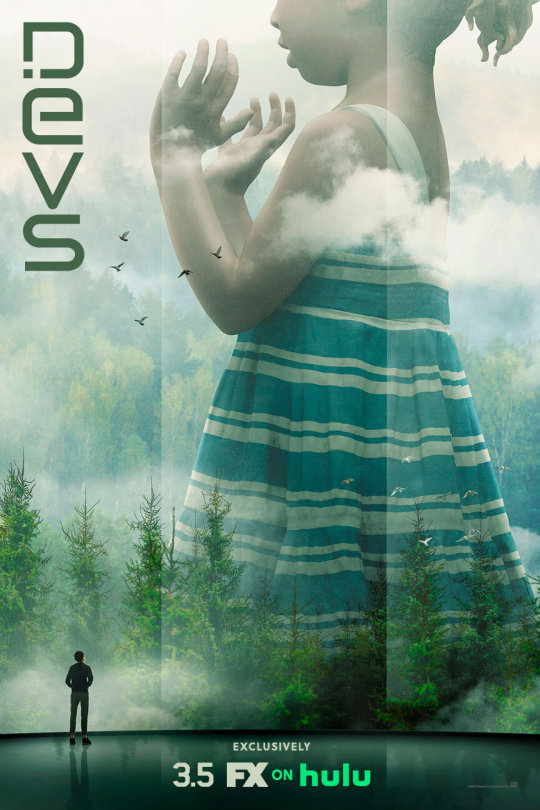
2. Devs
It took three episodes (read: chapters) for this to wrap me in its embrace but, holy multiverse, did it ever. A noodle baker of the highest craft, Alex Garland shows again that whatever he touches is going to be a favorite.
There’s multiple references to great poetry, a diverse cast reflective of humanity, and that many worlds theory to invite many more viewings.
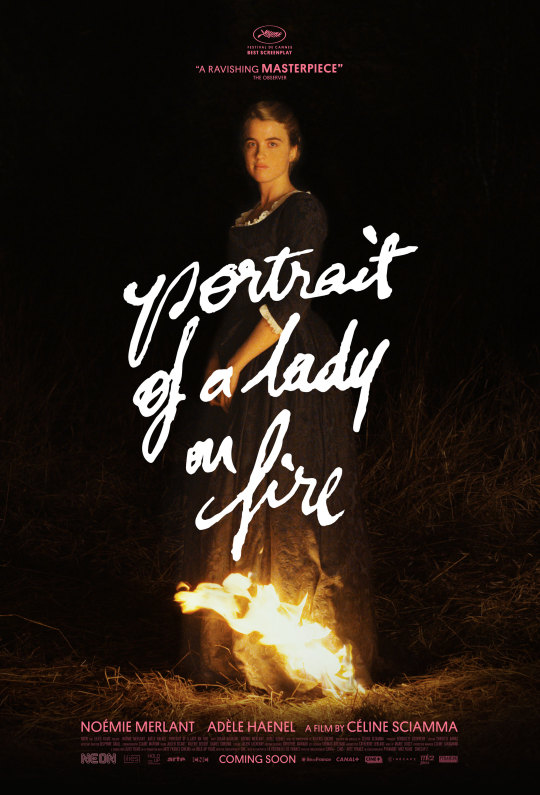
1. Portrait of a Lady on Fire
Gobsmacked, I kept telling myself there’s no way the next scene or sequence could top the previous...
Then the bonfire singing happened...
Then an Orpheus and Eurydice allusion reversal...
Then the opera scene and me having an out of body experience for almost five hours after the credits slid up the screen.
Céline Sciamma’s film is the equivalent of Michael Jordan in an 80’s dunk contest: despite an abundance of competing talent, it can’t even be called a “contest.”
Art shouldn’t be ranked anyway, but Sciamma and everyone involved are all, like…
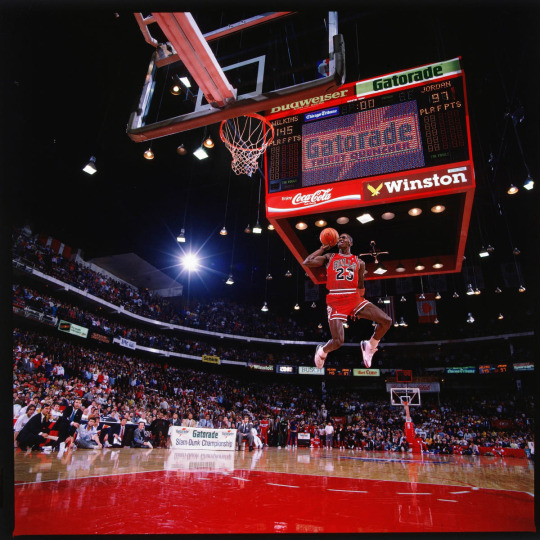
1 note
·
View note
Text
Let’s settle this once and for all: are the Illyrians MOC?
So, in writing the answer to this ask, I FINALLY put two and two together on something: another reason why SJ/M’s constant use of “golden-brown” to describe the I/llyrians doesn’t sit right is because that’s literally the only indication that they are MOC. Looking at fan art, it’s clear that some artists are going for a non-white skin tone. If so, then why don’t they look like MOC? Why is there so much contention and confusion around whether or not these men are white? I have been subconsciously baffled by this phenomenon for years, since AC0MAF came out in 2016. I don’t know why this took me so long to conclude, because people have been essentially saying the same thing about POC in SJ/M’s books since AC0MAF dropped, but here is the reason: in both the books and the art, their complexion is the only thing that indicates they are MOC. There’s a lot, as they say, to unpack here. This is gonna get long (seriously, RIP to your thumbs. I promise it’s half photos). Snip.
The Golden-Brown Suitcase
So. We have descriptions such as these (all emphasis mine; special thanks to @longsightmyth for pulling many quotes and citations!)...
1. about C/assian and A/zriel: “Like their High Lord, the males---warriors---were dark-haired, tan-skinned. But unlike Rhys, their eyes were hazel...” (AC0MAF, pg. 140 B&N ebook).
2. “Cassian surveyed Rhys from head to foot, his shoulder-length black hair shifting with the movement” (140).
3. about A/zriel: “But the second male, the more classically beautiful of the two... Even the light shied from the elegant planes of his face” (140).
4. “I could have sworn Rhys’s golden-brown skin paled” (AC0WAR, pg. 223 Kindle edition).
5. “Color bloomed high on Azriel’s golden-brown cheeks” (254).
6. “I tried to catch Cassian’s gaze, but he was monitoring them closely, his golden-brown skin unnaturally pale” (280).
7. “But Nesta’s pale fingers gently probed his golden-brown skin” (514).
... spawning fan art en masse like this:
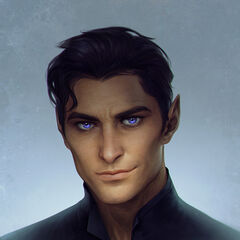

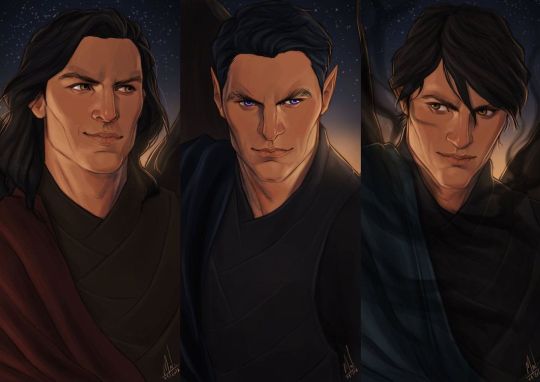
art courtesy: x x x
What’s wrong with this (these) picture(s)? They are white men with the complexions of MOC. The fandom (and thus artists) have nothing but “golden-brown” (a term that is notably introduced in AC0WAR, one installment after the I/llyrians first appear) to go on, so they default to imagining the I/llyrians as tanned Henry Cavill, Nikolaj Coster-Waldau, Viggo Mortensen types. You could simply lighten the value of the above artworks (but please DO NOT do this) and have white men. THIS is why, despite the golden-brown descriptor and the Darker-Than-Fayre skin tones in the fandom art, there is so much debate and confusion around whether or not the I/llyrians are MOC. Golden-brown skin with straight black hair, straight noses, and round light eyes do not a man of color make. Why not? Because “golden-brown” is a very nebulous term that can apply to countless skin tones and ethnicities. Some examples (... your THUMBS I’m so sorry slafajklsk):

^ Indian,
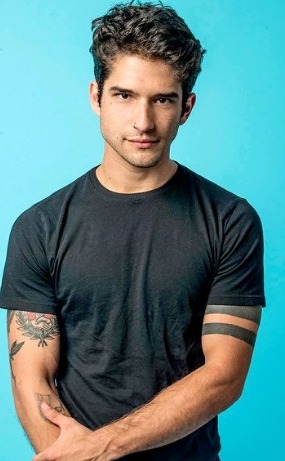
^ Mexican,
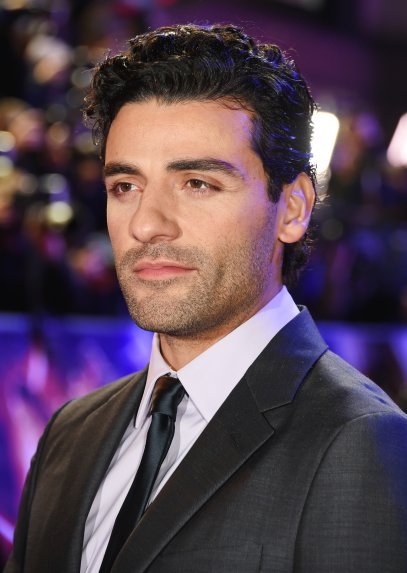
^ Guatemalan,

^ Hawaiian,
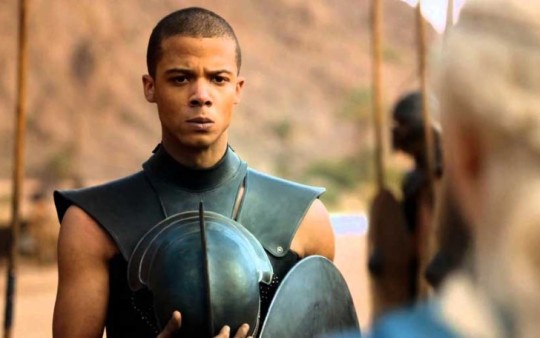
^ Afro-Caribbean,
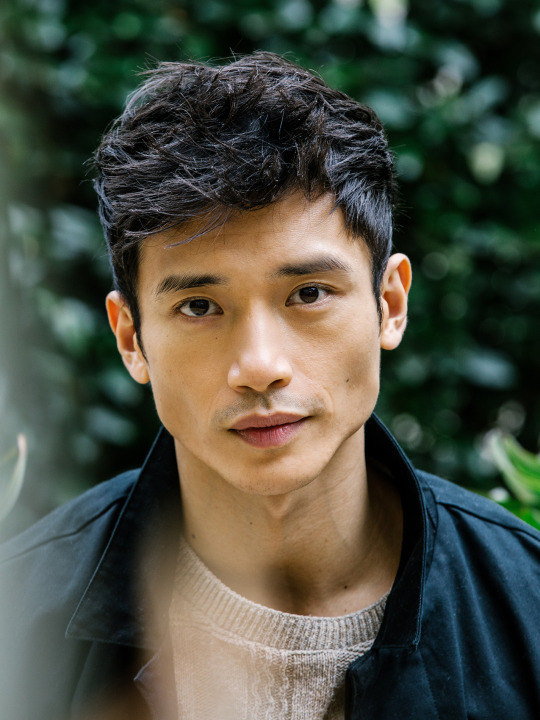
^ and Filipino. For starters.
Now, why is it that upon first glance, you can tell that all the men in these photos are not white? Because race is constructed such that we can immediately identify it, whether subconsciously or consciously. We’re socially conditioned to recognize this in other people and immediately ascribe our own perception of their race and ethnicity onto them. Not only can you tell they are not white, but you also have a ballpark idea of where in the world they are from. Note the wide variance in thickness and texture of hair (head, facial, and body); the cool and warm undertones that change by the person; the wide, ridged, and/or downturned noses; eye shape, body type etc. So why can’t we put a finger on what the I/llyrians are supposed to look like as MOC? Why do so many people perceive them as white? Because SJ/M has no target ethnicity for the I/llyrians, meaning that they have no clarifying features to imply one specific ethnic background in the text or fan art. All we know for sure about the I/llyrians is that they are dark-haired, darker complected than the A/rcheron sisters, and they pale and blush. Vagueness regarding race always causes fandom to default to white, thus the general “tan white dudes” interpretation of the I/llyrians.
The Illyrian Suitcase
We’ve now come across another suitcase within this entire I/llyrian Ethnicity Moving Truck of stuff we need to unpack: the smidge of evidence that the I/llyrians are inspired by somewhere in the MENA region. Given the harem pants and henna-reminiscent tattoos that appear in the Nite Court, plus the mosques and clothing that appear in fandom edits and art, general “MENA” may be the closest approximation to I/llyrian ethnicity. However, the problems snowball from here.
1. The MENA label is far too general to treat as one single race/ethnicity. General fandom perception/depiction of I/llyrians does not nearly encompass the multitude of appearances someone could have if they are from the MENA region. Harem pants and henna are used in multiple countries, so it is impossible to pin down a non-monolithic appearance with just the Nite Court attire and “golden-brown” description.
2. The Nite Court and the I/llyrians are two separate entities. Not all V/elaris residents are I/llyrian, not all Nite courtiers are I/llyrian, and not even all Inner Circle members are I/llyrian. Therefore, we cannot conflate the Nite clothing and tattoos with I/llyrian culture.
3. This leads me to my next point: we still have white and non-I/llyrian characters wearing harem pants and tattoos. Fayre, M0r, and A/mren’s attire is not culturally meaningful to the Nite Court. It also clashes with sweaters and leggings, dresses made of chiffon, bell sleeves, and Elie Saab-reminiscent designs (ie Starfall, Court of Nightmares). Thus, the attire loses all internal consistency and meaning beyond the mood SJ/M wishes to set for a given scene, making the implication that their outerwear is meant to be sexy or aesthetic rather than culturally significant.
4. The I/llyrians as a race of POC meaninglessly perpetuate stereotypes. Granted, sexism exists in high fae society (ie Fayre being paraded as “Rice’s whore” in the CoN, M/or being treated as a commodity and broodmare, the lack of High Ladies), so the misogyny and violence against women are not unique to I/llyrians. We also get more than one I/llyrian main character, so they are not a complete monolith. But there are still issues. One, the I/llyrians are oppressed by the high fae. It is well documented that the high fae are the dominant race and look down upon lesser fae. This dichotomy has yet to be unpacked by SJ/M. Two, I/llyrian women are oppressed by I/llyrian men (wing-cutting, commodification, gender roles, etc). There are absolutely zero fleshed out I/llyrian women, so the only information we have about their experience and existence is through Fayre’s eyes and Rice’s word. This framing is white feminist at best, white savior-y at worst. Three, we only know I/llyrians who have assimilated into high fae culture. Rice, the High Lord, is half high fae and half I/llyrian. Only he and his friends, I/llyrians who have been “elevated” from bastard/oppressed I/llyrian status, know better than the other more “savage” I/llyrians. Coincidence? I think not.
The Lucien Suitcase
All this gets even more confusing when you consider the fact that SJ/M uses “golden-brown” as a blanket non-white coding tool. In the T0G series, at LEAST the following characters are described as golden-brown: S/artaq (T0D, pg. 345 Kindle edition), Nesrin (K0A, 180), and Irene (403). In AC0WAR, at LEAST the following are described as golden-brown: the I/llyrians, Vassa (685), and L/ucien (183, 302, 456). Our best approximation is that S/artaq and Nesrin are South Asian given their southern continent origin, Irene is part-black given her E/yllwe father, Vassa is... golden brown, and L/ucien is part black and part white. The term is used so frequently that it is meaningless as an indicator for race. We’ve again found the golden-brown suitcase, which in SJ/M’s novels encases allll the aforementioned ethnicities and more. Again, this causes very anglicized and/or inconsistent looks to pop up in fan art:
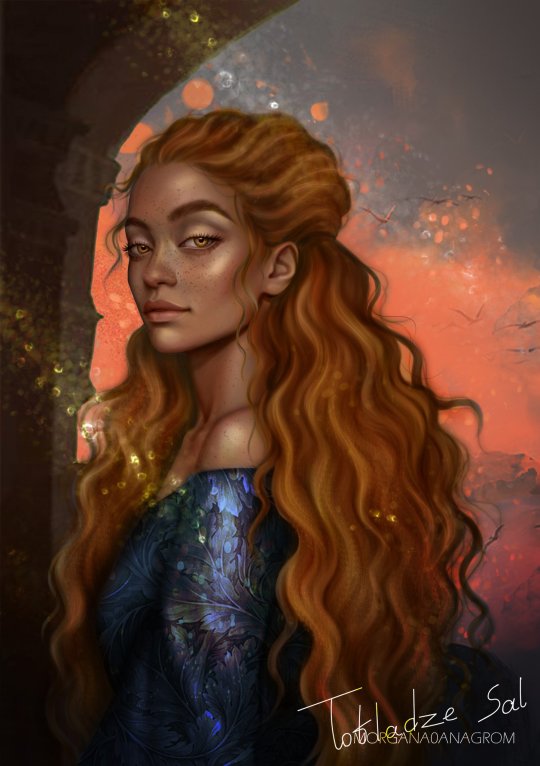
x
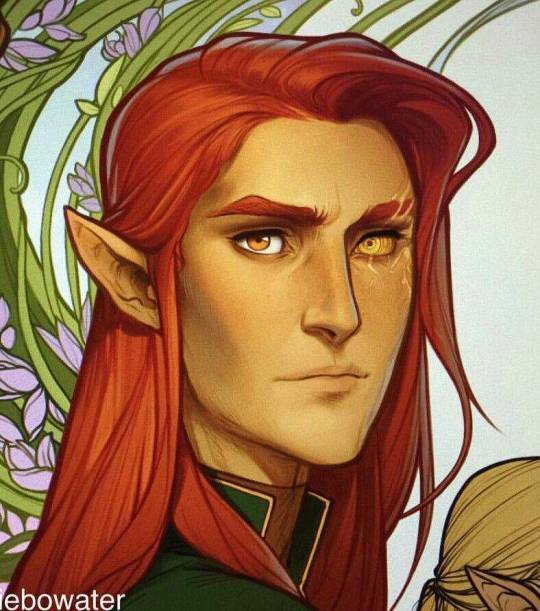
x

x
Conclusion
it seems that the I/llyrians are MOC, based on the fact that they and other POC are frequently described as “golden-brown.” That said, the golden-brown descriptor is not enough. The I/llyrians do not serve their purpose as representative characters because they are not easily identifiable to their target demographic, nor are they a positive representation. In a social context where we are so trained to recognize these things, explicit media representation is much preferred, if not necessary. It is the reader’s prerogative---namely, non-white readers’ prerogative---to interpret these characters how they wish. We’d be unpacking a whole other house if we were to go into the meaning behind L/ucien as a black man, Irene as a black woman, Nesrin as South Asian, etc, and that is for another day. Thanks so much for reading all this way if you got this far. I know I’m extra, sorry. The creative writing/women’s and gender studies major jumped out lmao. My inbox is always open if you want to parse that out or if you have any further questions!
170 notes
·
View notes